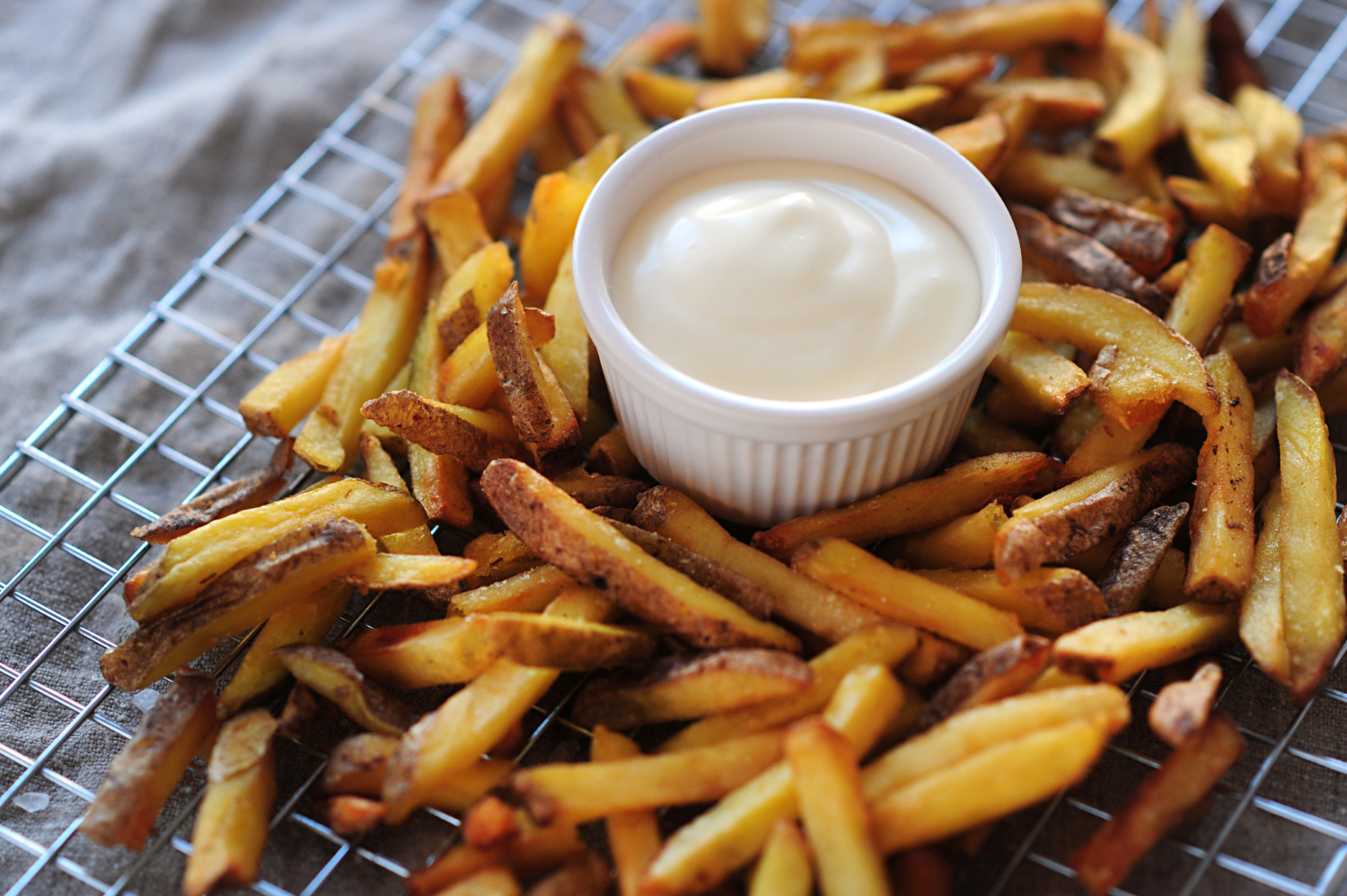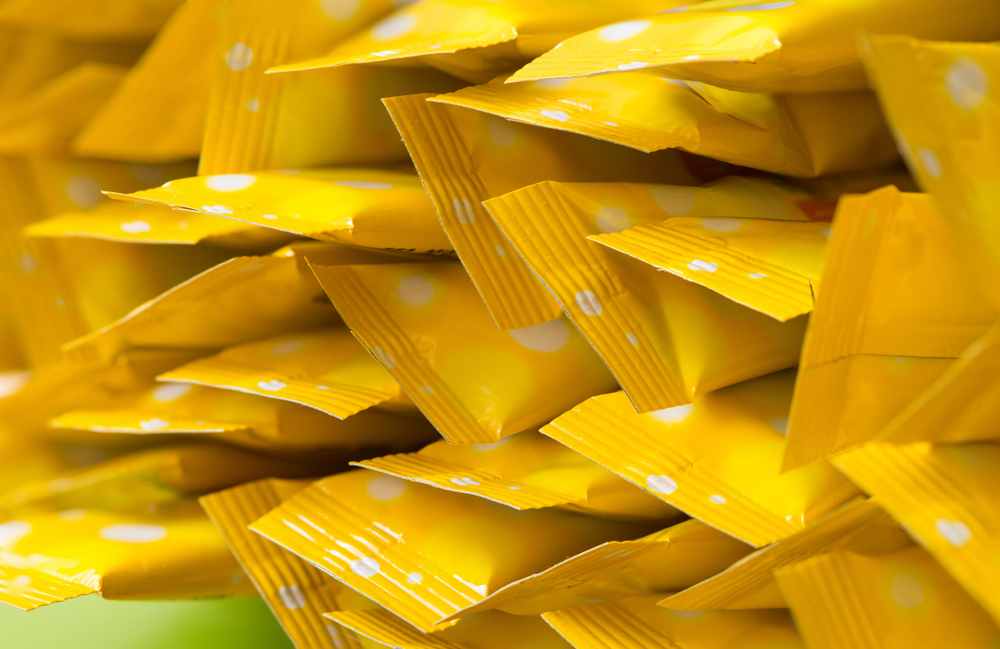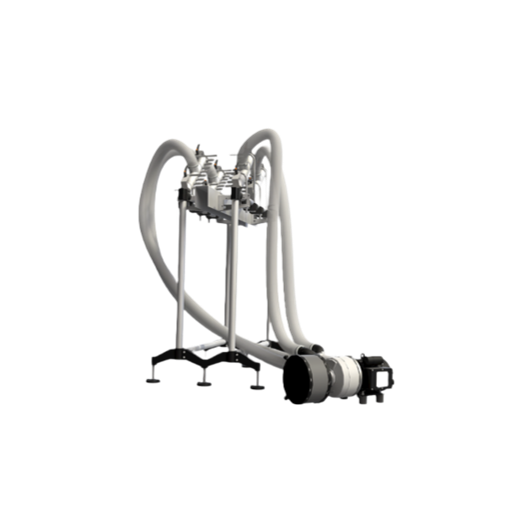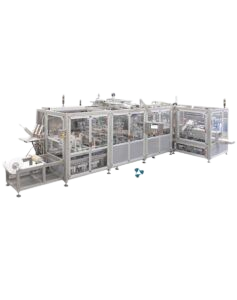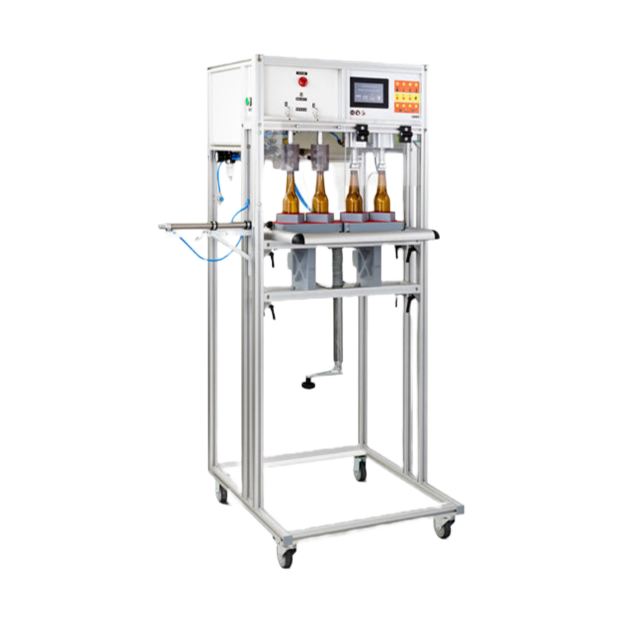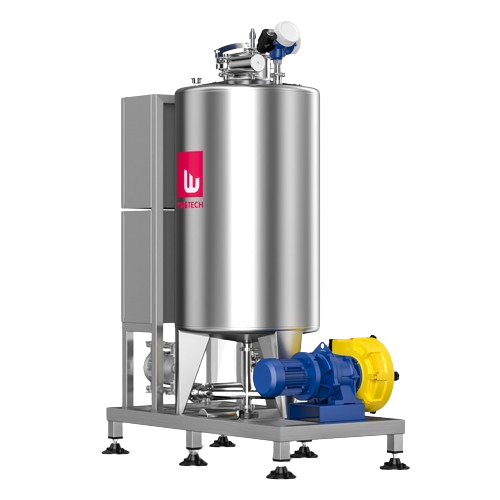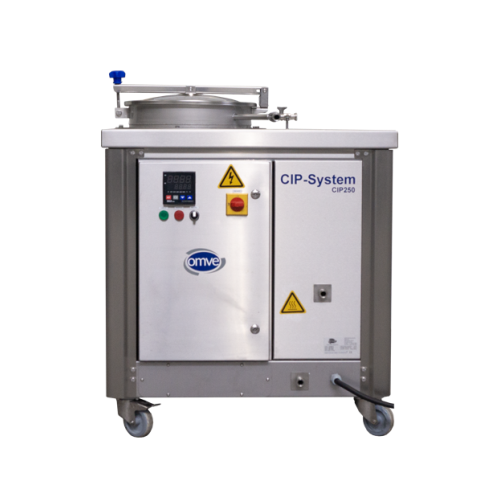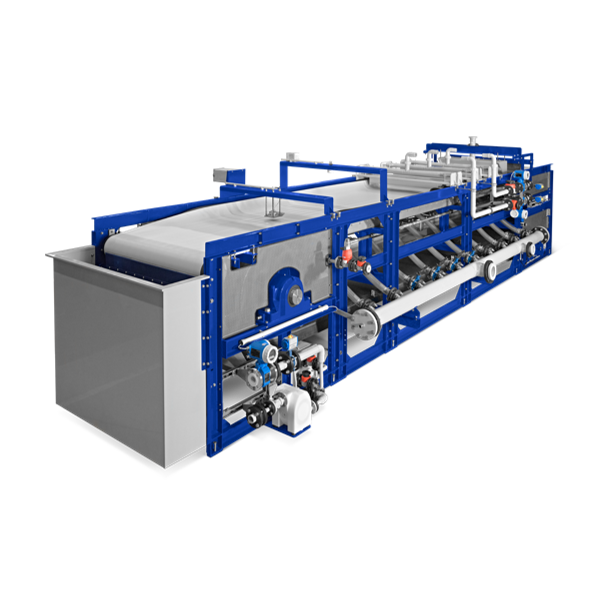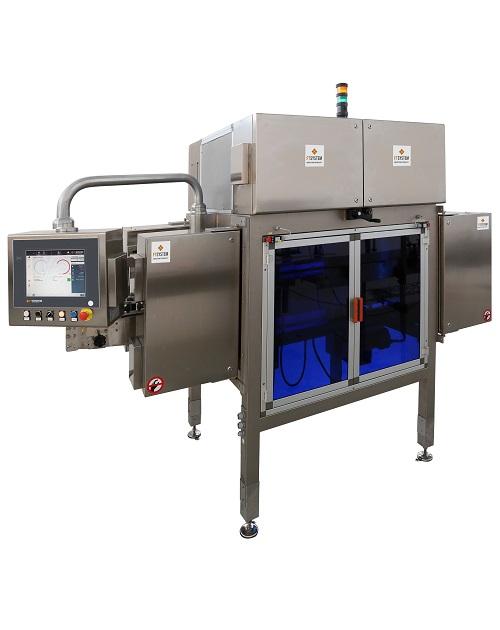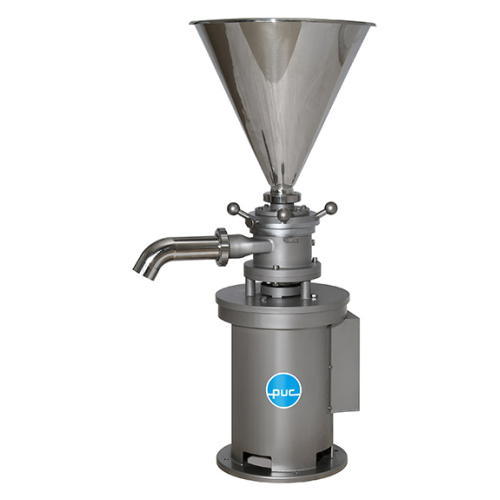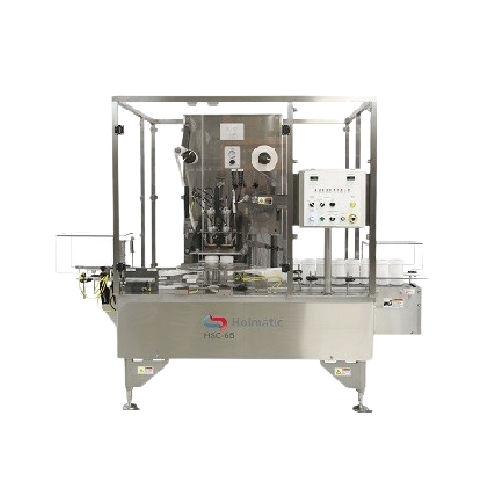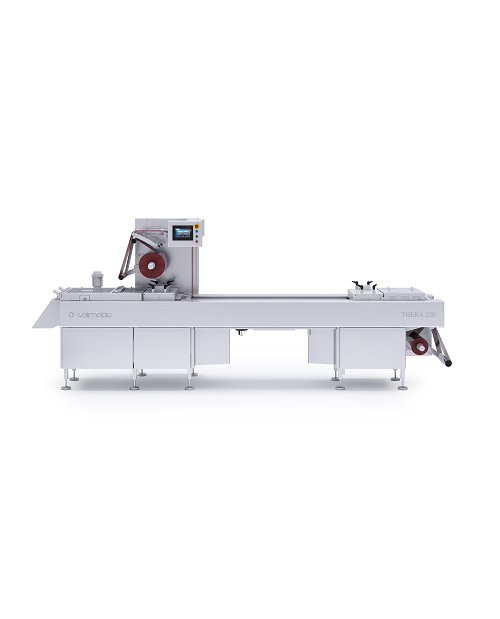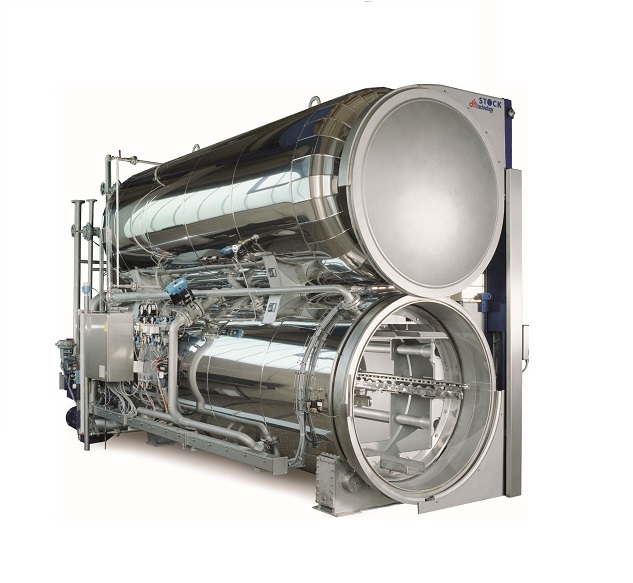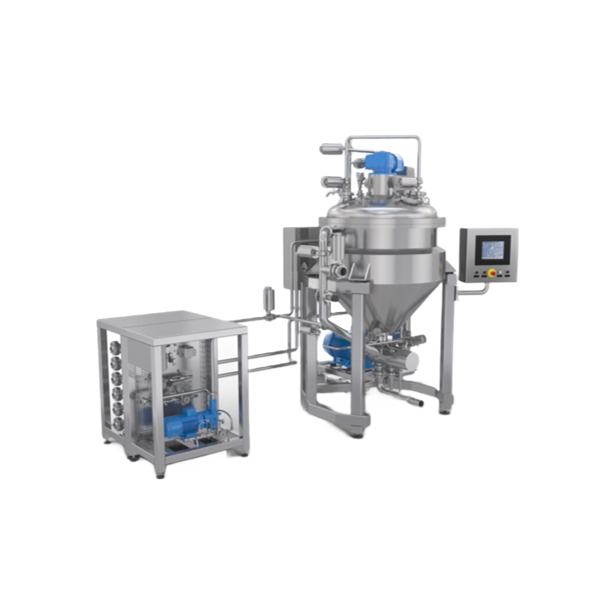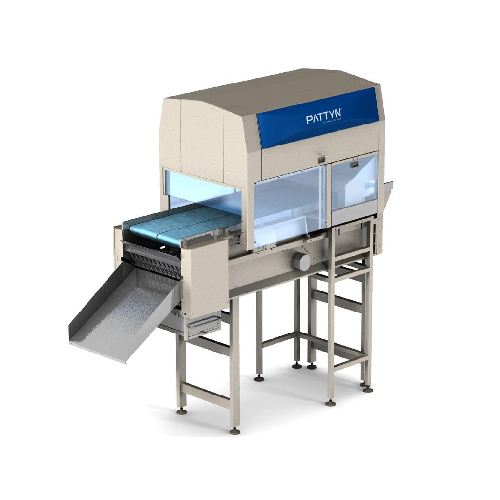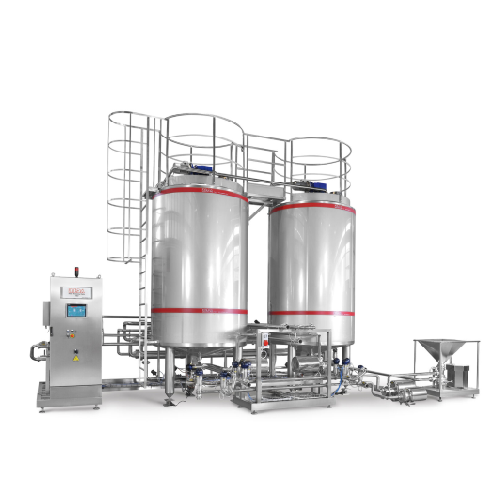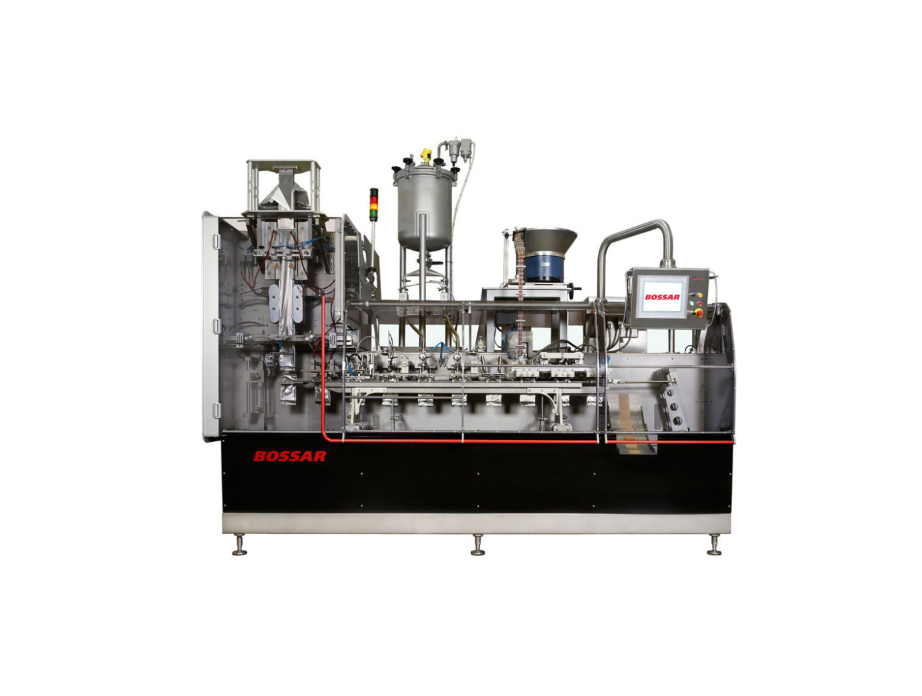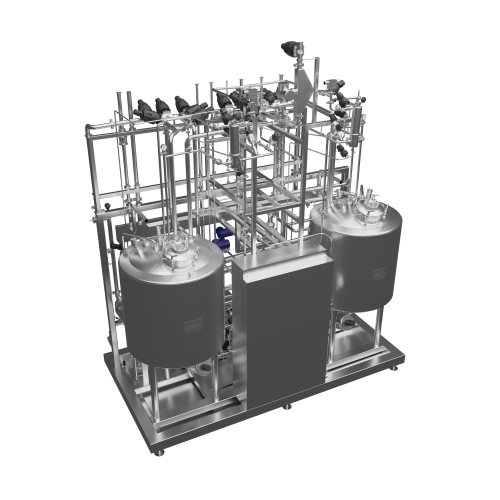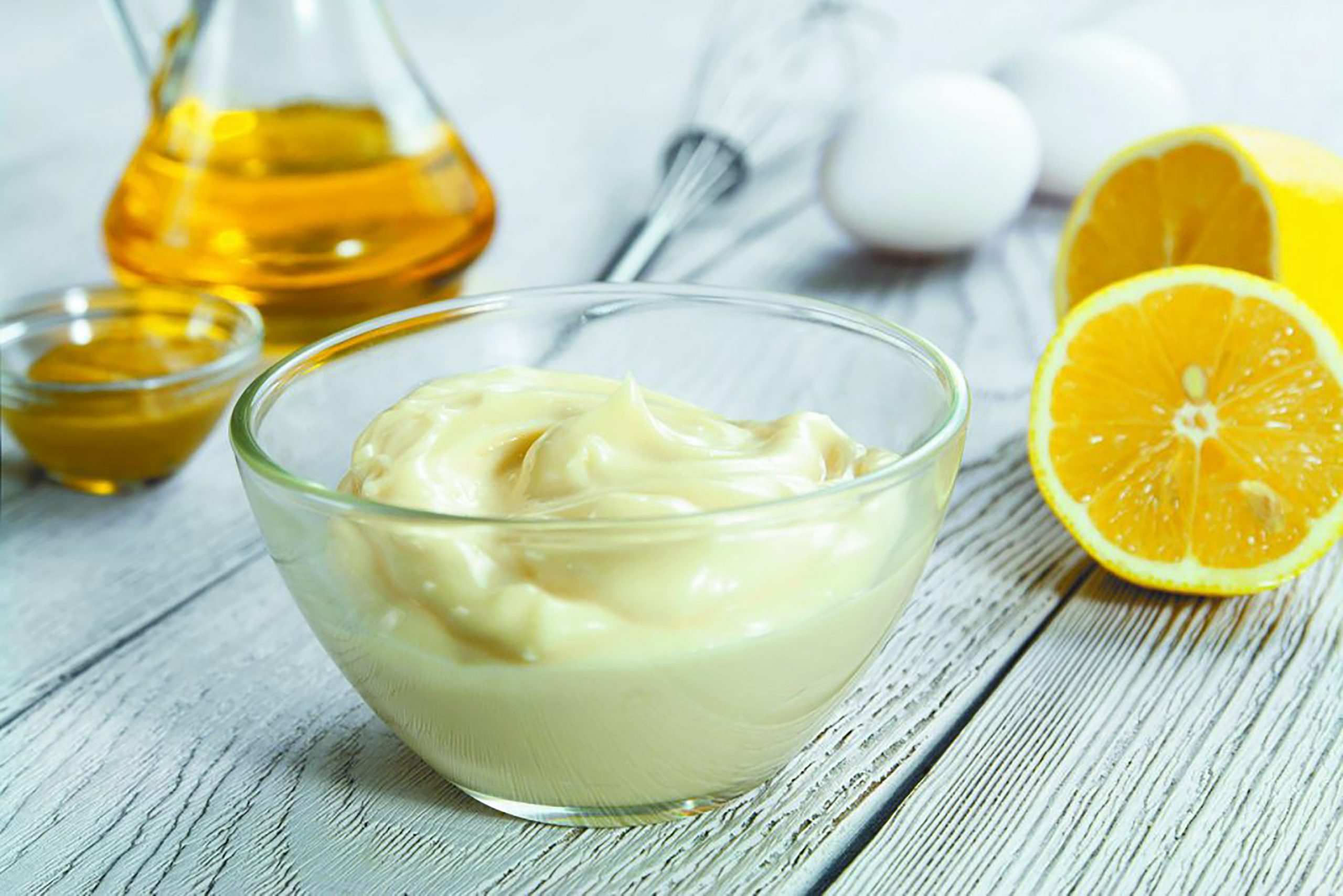
Mayonnaise Manufacturing Equipment
Find innovative production technology for making mayonnaise and connect directly with world-leading specialists
Mayonnaise is created by blending oil with eggs, and then flavoring with vinegar, mustard, herbs, and spices. The eggs are a natural emulsifier that creates a uniform mixture. Ingredients are pumped into mayonnaise manufacturing equipment. First, a dynamic mixer maintains the desired level of emulsification of the mixture, which then moves on to packaging and bottling once reaching a satisfactory consistency.
Tell us about your production challenge
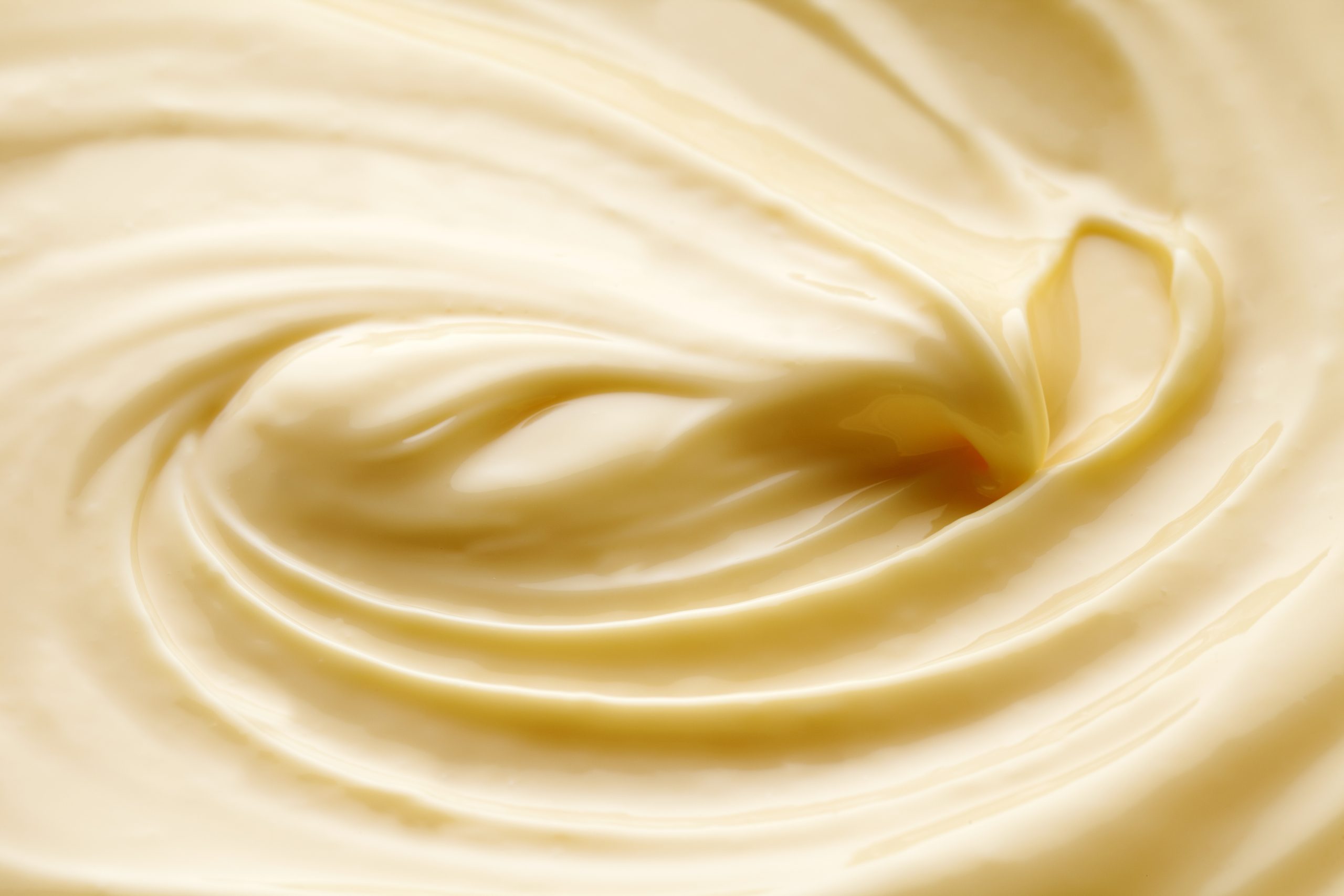
Improving your production process with mayonnaise processing equipment
The production process of mayonnaise is fairly straightforward. You prepare a stainless steel mixing tank with water and vinegar, to which ingredients may be pumped from other tanks. This emulsification mixer blends the ingredients into a uniform consistency. Once adequately combined, your mayo is ready to be pumped to your bottling equipment. Your filled bottles are capped, sent to your labelling machine, and ready for distribution.
Fundamentals of food safety
The production of mayonnaise employs the use of raw eggs, so food safety becomes a major point of concern due in particular to the risk of salmonella poisoning. All eggs used in the production of mayonnaise must be pasteurized. This process uses heat of approximately 60 °C to kill any bacteria present without cooking the egg. The mayonnaise making machine and equipment used in this step are pasteurization machines that significantly accelerate this process at an industrial scale.
Pasteurized eggs that are refrigerated should remain so, or condensation may stimulate bacterial growth into the egg. Eggs at room temperature, however, do not require refrigeration after pasteurization. In addition, maintaining pH below 4.1 will further help to prevent salmonella growth. Failure to ensure proper food safety of your egg ingredients can compromise the safety of your mayonnaise.

Eggs, the exceptional emulsifiers
The importance of eggs in the production of mayonnaise lies in their properties of emulsification. Traditionally mayonnaise contains only the yolk portion of the egg, but low-fat varieties will typically use the whites instead. The yolk emulsifies so well due to a protein called lecithin, but egg whites also have emulsifying properties from their albumin content, so either or both will suffice for this purpose.
The egg proteins envelope minute portions of vinegar, allowing it to disperse evenly within an oil base. The water-loving heads of lecithin are drawn to the vinegar, while the fat-loving tails extend into the oil. Any insoluble ingredients may be combined in this way to achieve uniform consistency. Interestingly, turmeric and saffron are prohibited from use in mayonnaise production for their ability to mimic the color of egg yolk.
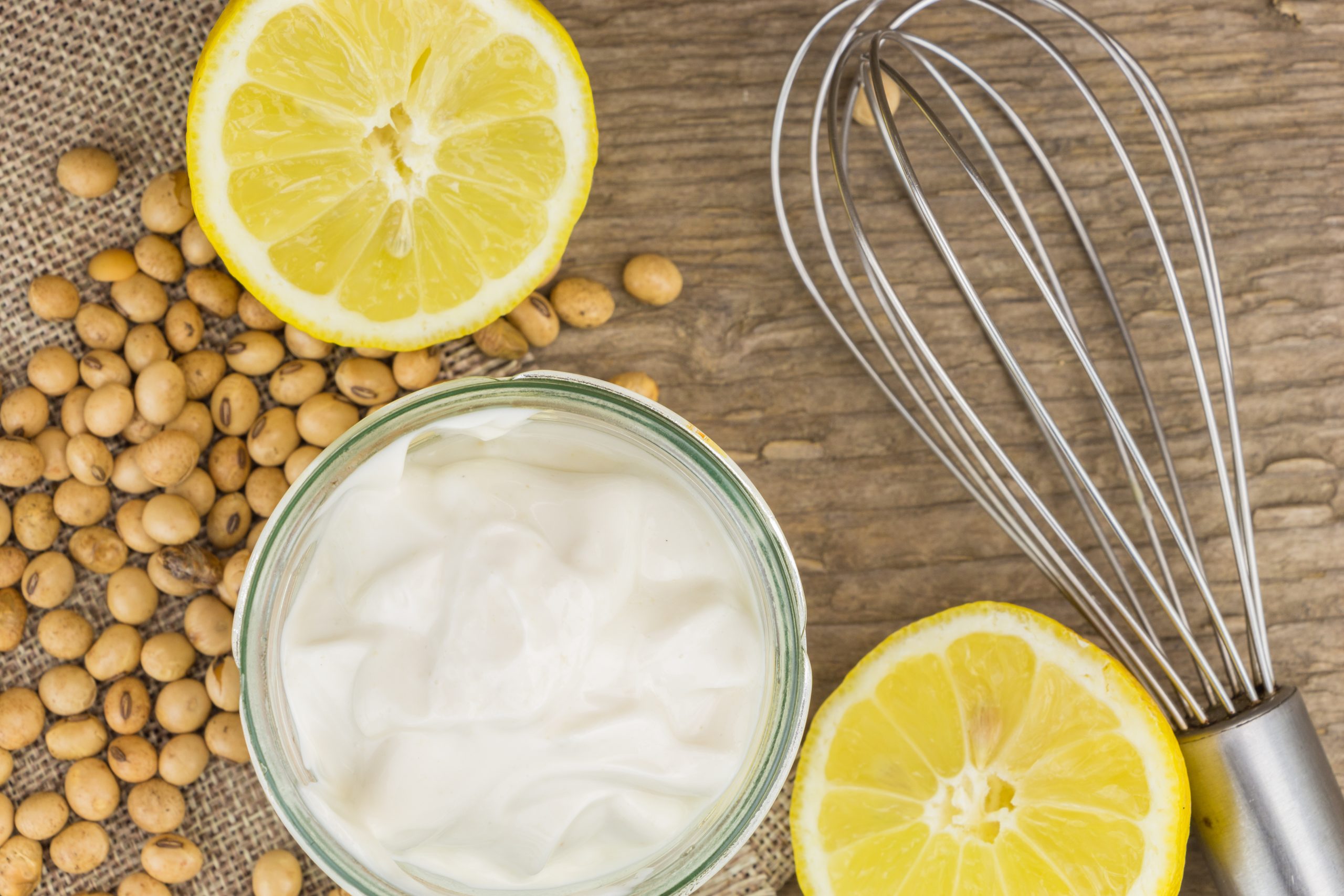
No eggs, no problem! Making vegan mayonnaise
Producing vegan mayonnaise comes with the challenge of achieving a similar emulsion to traditional mayo without the eggs. To do this, any emulsifier will work, but soy-derived lecithin is a common substitute. Vegan mayonnaise may also be produced in partial emulsions that separate slowly. If your mayo has separated, a quick mixing will reconstitute the ingredients into a uniform mixture for consumption. Without the eggs, this may not be considered true mayonnaise, as is the case in the United States. Even so, it is often indistinguishable in taste and texture.
Mayonnaise: the modifier of many mixtures
A variety of products incorporate mayonnaise for its rich flavor and creamy texture. Considering that mayo is mainly just a mixture of oil and eggs, it can be substituted for them in any recipe. Cakes and cookies are one such example. Mayonnaise can provide a protective coating to lock in moisture when cooking, or be used to create a more complex emulsion such as creamy salad dressings like creamy italian, or sauces such as mustard.
Fry sauce is a combination of mayonnaise and ketchup, spicy mayonnaise is a common ingredient in Asian cooking, and Aioli is essentially mayonnaise with garlic and other dried spices. Non-food uses also abound as a lubricant, cleaning agent, burn treatment, hair treatment, cosmetics and others. Though simple to make, mayonnaise is an exceptionally versatile ingredient.
Processing steps involved in mayonnaise making
Which mayonnaise technology do you need?
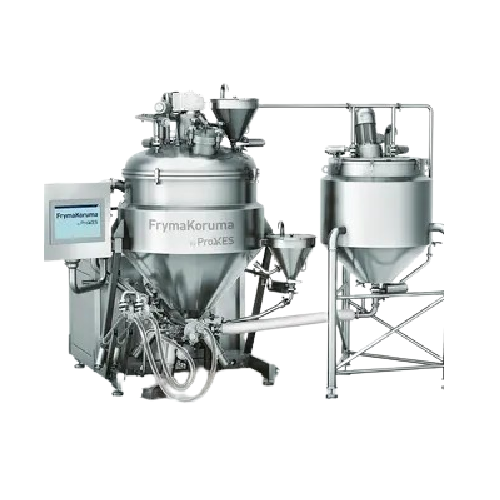
High shear emulsifier for mayonnaise production
Streamline your production of high-quality emulsions with this high-capaci...
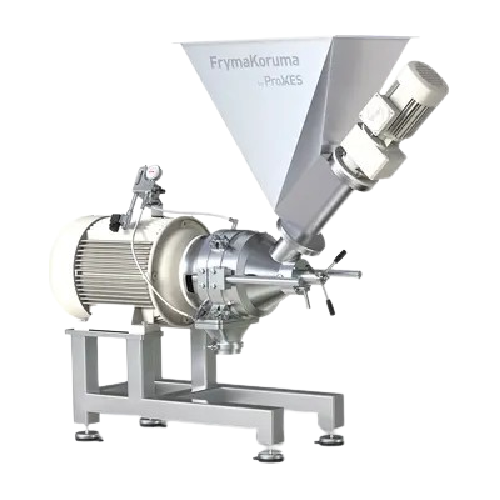
High shear emulsifier for food and pharmaceutical products
Optimize your production line with precise emulsification, ho...
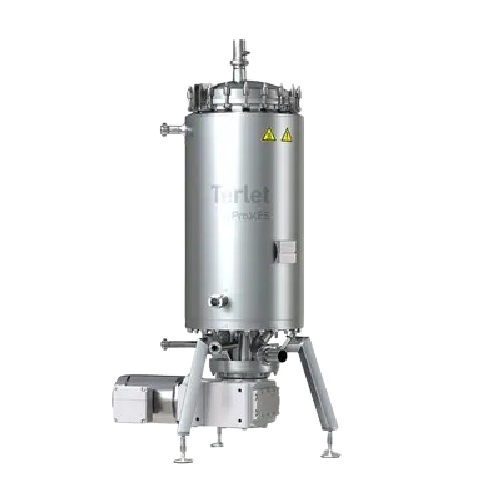
Heat exchangers for efficient heat transfer in industry
Achieve precise temperature control across diverse viscosities wi...
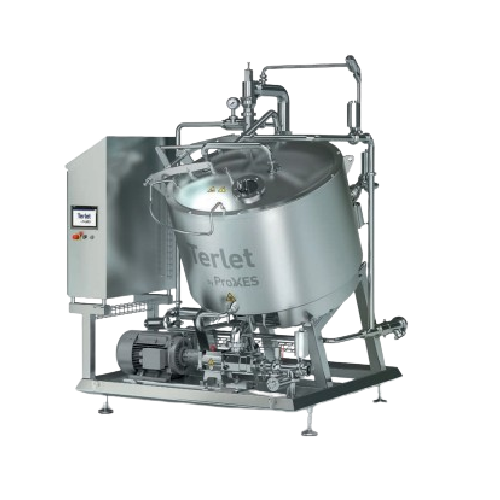
Precise liquid cooling solution for food processing
Ensure high-quality preservation of flavors and textures in liquid fo...
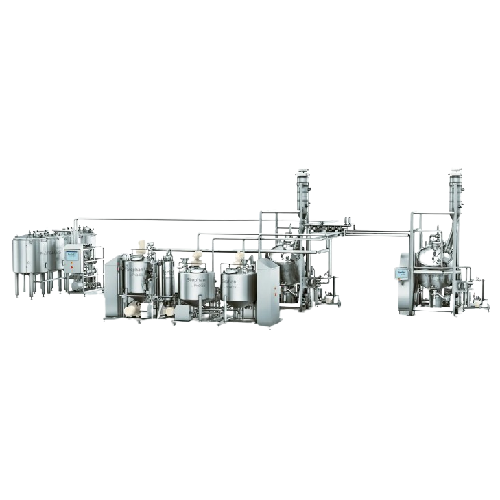
Continuous nut paste production line
Elevate your production efficiency with a versatile preparation line designed to seaml...
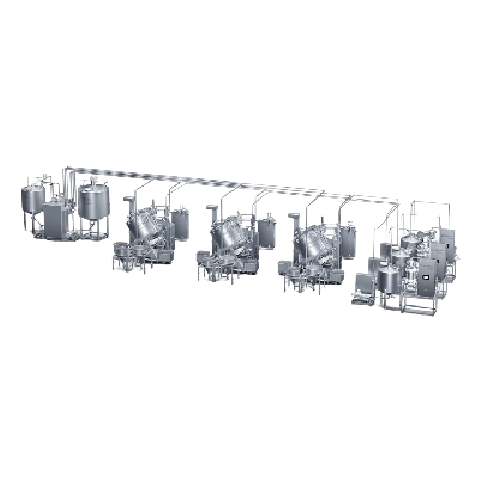
Continuous mustard production line
Optimize your condiment production with precision-engineered systems capable of transfor...
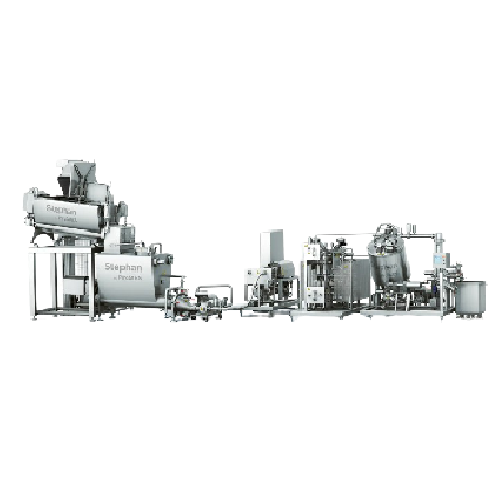
Cheese blending and heating line for processed cheese
Optimize your processed cheese production with a solution that seam...
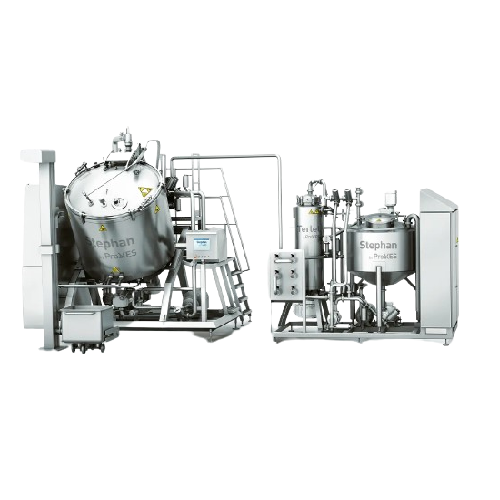
Continuous caramel production line
Optimize your caramel production with seamless integration, achieving precise fat meltin...
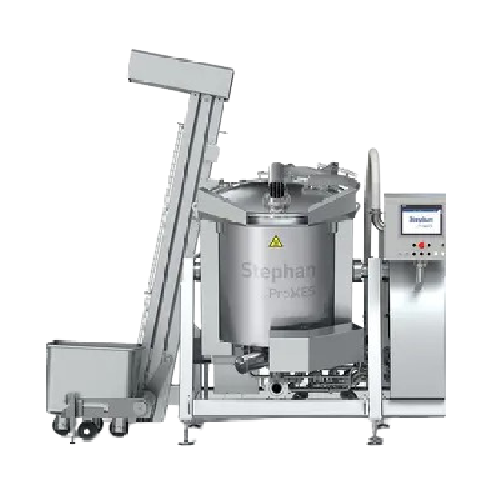
Industrial cooker for sauces and stews
When producing diverse culinary delights such as sauces and stews, achieving even he...
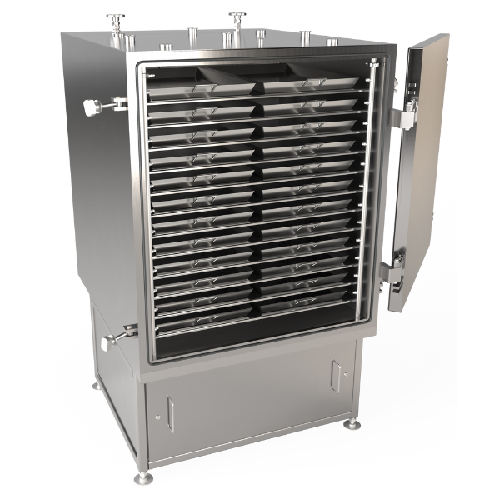
Continuous heat exchanger for soups and sauces
Optimize your soup and sauce production with a continuous heat exchanger th...
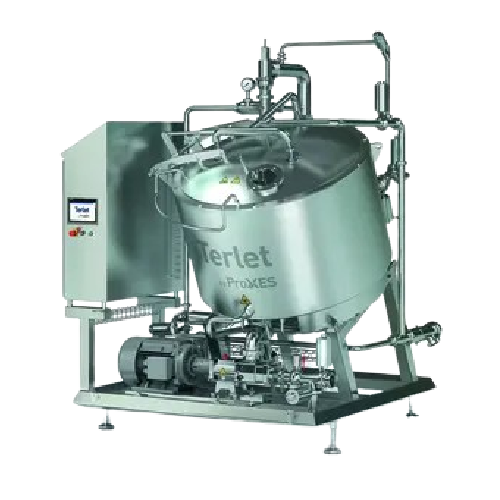
Efficient cooling and cooking systems for food processing
Streamline your production with integrated cooling and cooking...
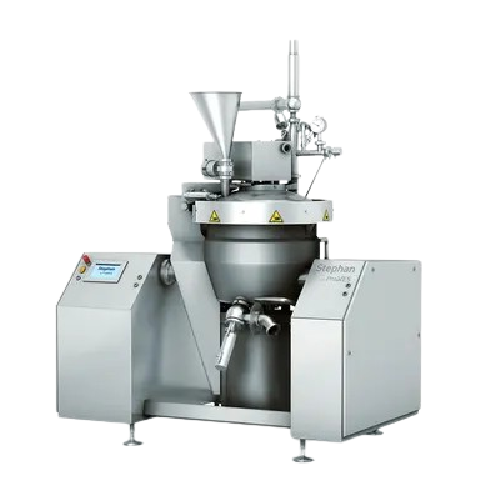
Industrial cutting system for fine emulsions
Optimize your production line with precision cutting and emulsifying, ensurin...
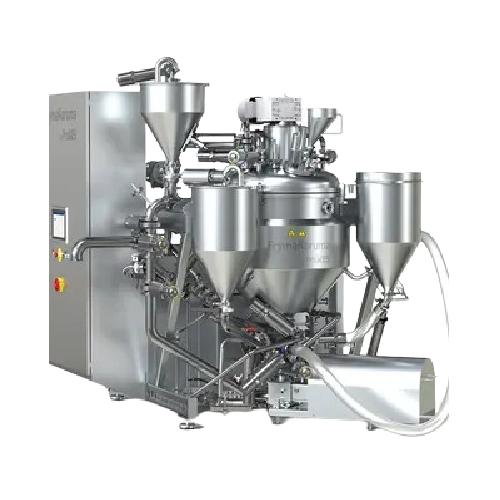
Vacuum deaeration system for mustard and liquid detergents
Ensure optimal product quality by effectively removing air fr...
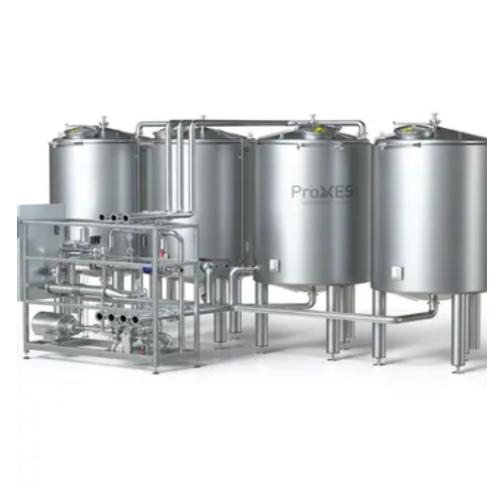
Cleaning systems for food, pharmaceuticals, and cosmetics
Ensure optimal hygiene and safety with advanced cleaning syste...
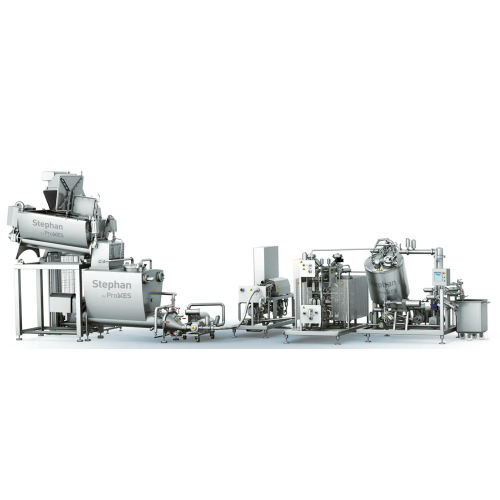
Continuous caramel process line
Optimize your continuous food processing with an engineered-to-order line tailored for preci...
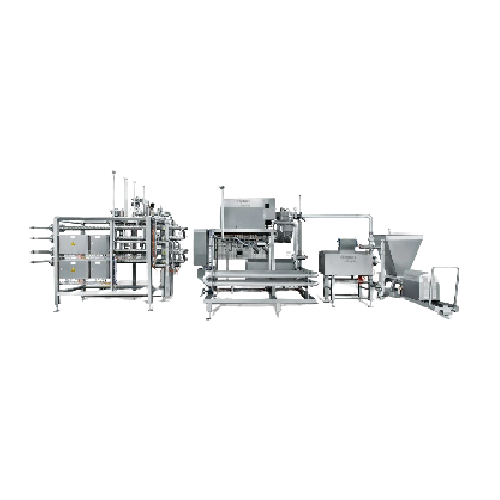
Continuous cheese line
Achieve precise temperature control and seamless product transitions with this equipment, ideal for en...
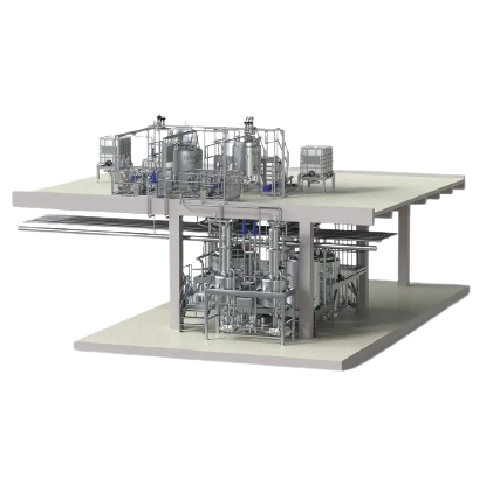
Continuous mustard line
Streamline mustard production with high-capacity continuous processing that reduces air pockets and e...
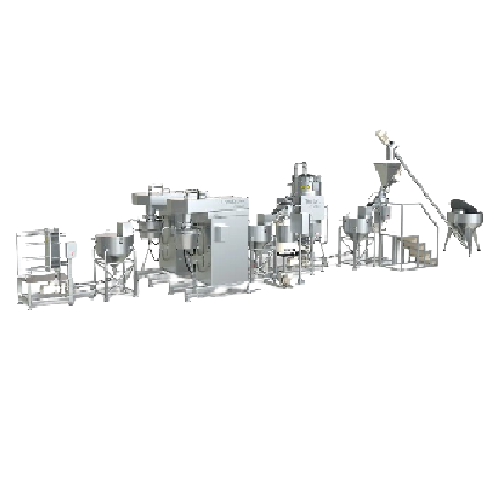
Continuous tahina production line
Streamline your tahina production with precise grinding and controlled cooling, ensuring ...
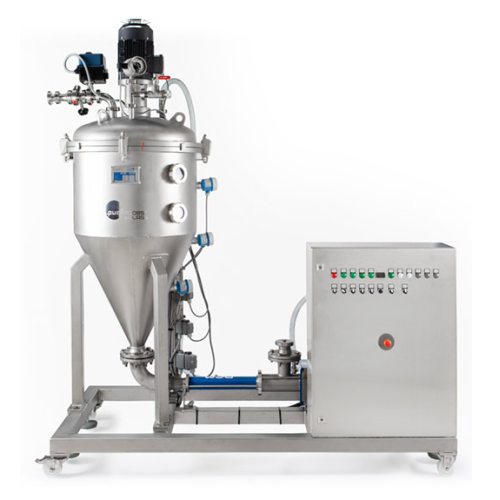
Vacuum de-aeration unit for liquid to pasty products
Optimize your product consistency and stability with continuous de-a...
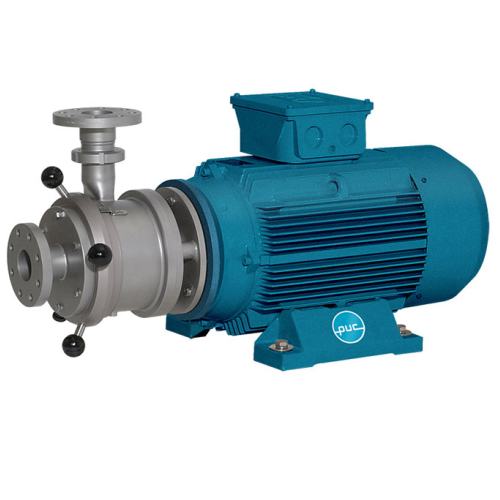
Colloid mill for emulsifying and wet milling applications
Achieve precise mixing and grinding with our colloid mill, des...
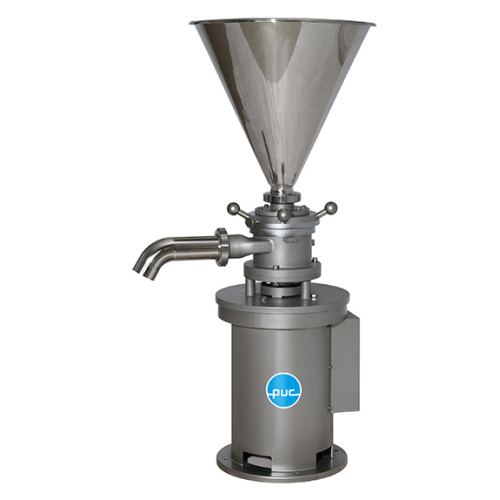
Vertical colloid mill for emulsifying and homogenizing
Optimize your production line with precise particle size reduction...
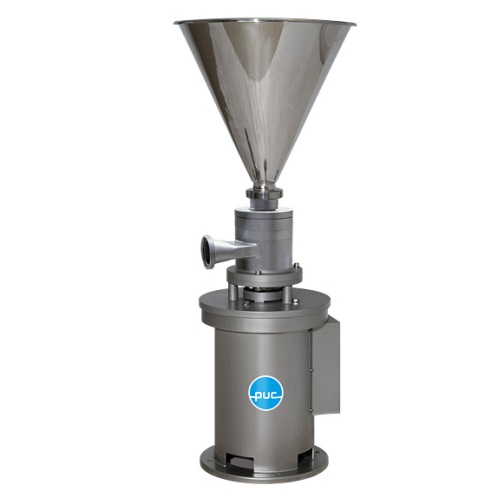
Multistage mixers for emulsions and dispersions
Experience efficient emulsification and dispersion processes with this ver...
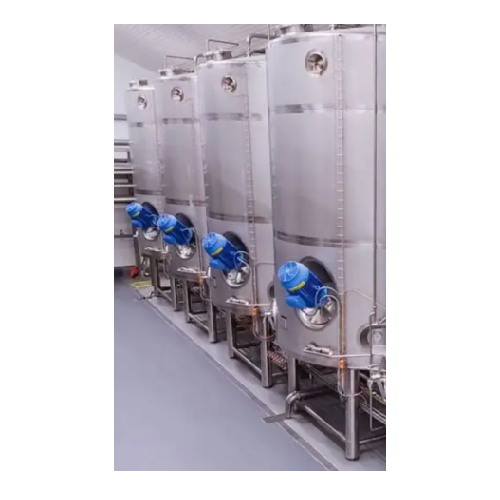
Turnkey food and beverage processing solutions
Optimize your production line with integrated processing systems designed t...
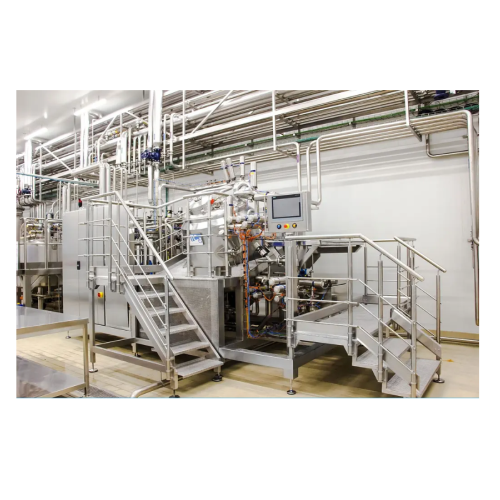
Mayonnaise production system
Ensure precise emulsification for low to full-fat mayonnaise and similar cold emulsions with a ...
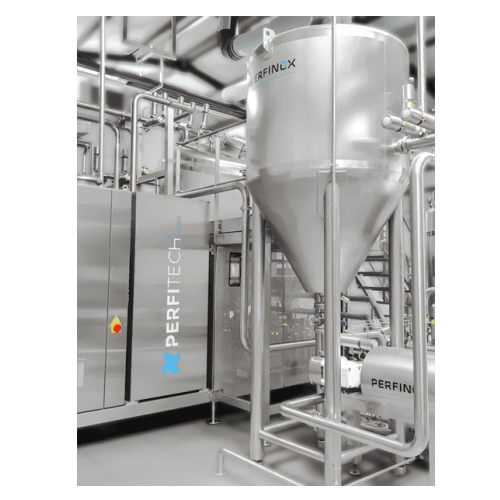
Compact production unit for liquid food products with varied viscosities
Streamline your batch production with this ver...
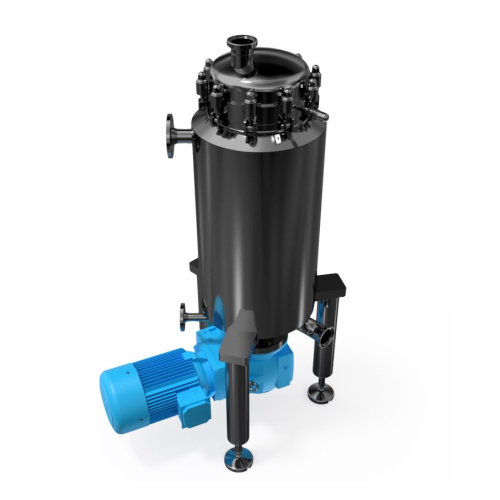
Scraped surface heat exchanger for food processing
Efficiently handle temperature-sensitive food products with a compact ...
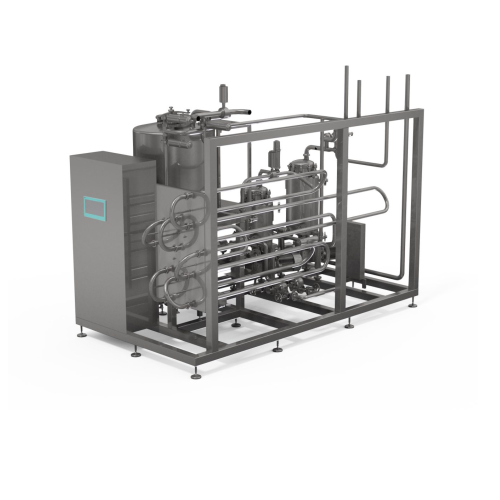
Aseptic thermal processor for high viscosity products
Optimize your processing of high viscosity products with precise te...
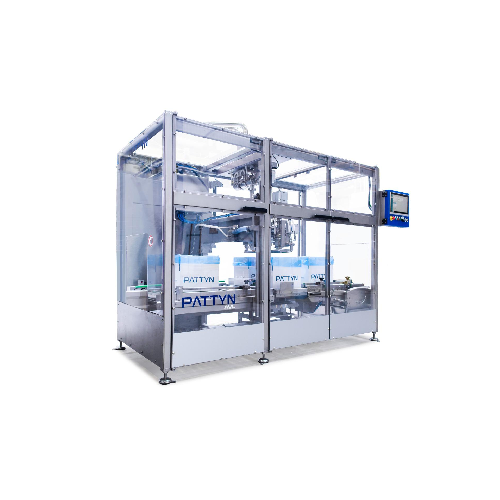
Semi-liquid weigh filler for edible oils & fats
Achieve precise weigh filling of semi-liquids while minimizing product was...
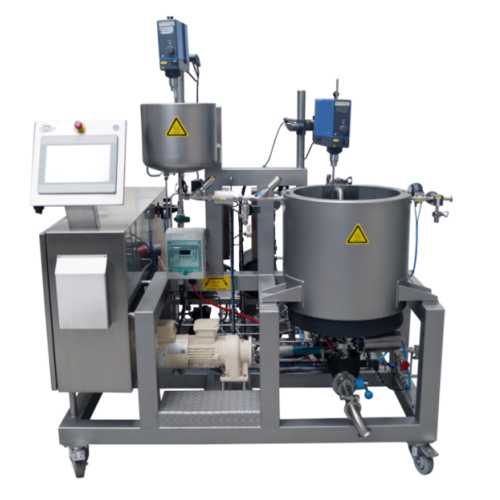
Atmospheric blending vessel for r&d activities
Optimize your liquid blending processes with this versatile vessel, designe...
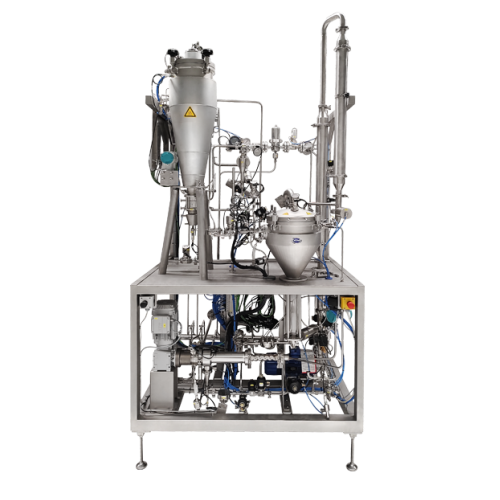
Direct steam infusion for high spore kill rate in sensitive food products
Achieve rapid, efficient sterilization and m...
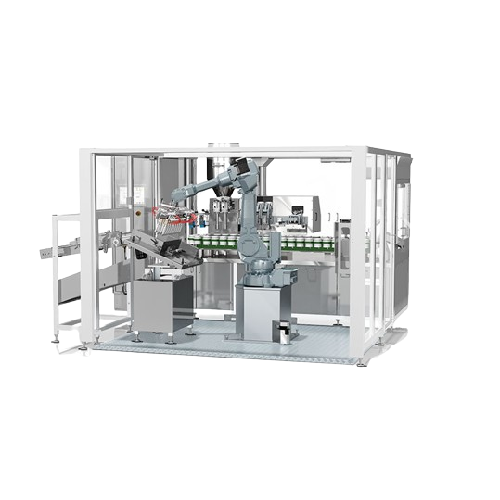
Tube filling machine for cosmetics and food products
Achieve precise and efficient packaging with this advanced twin-head...
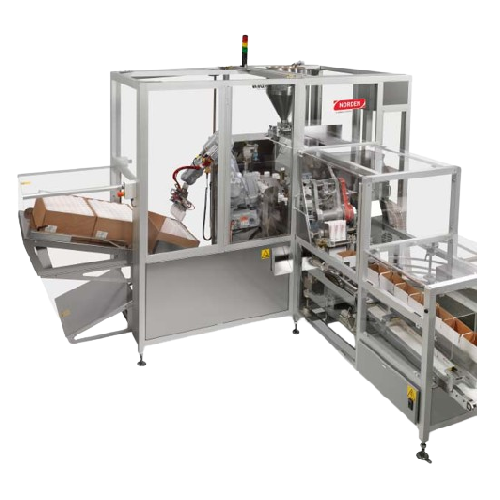
Pick & place robot for packing tubes in boxes
Efficiently streamline your packaging line with this compact case packer, de...
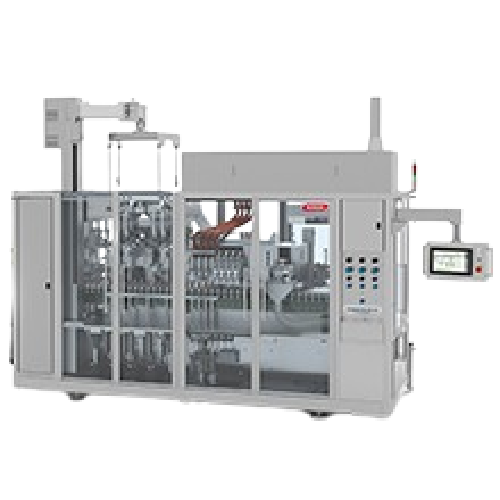
Tube filling station for plastic, laminate, and aluminum tubes
Efficiently seal and fill various tube materials, ensurin...
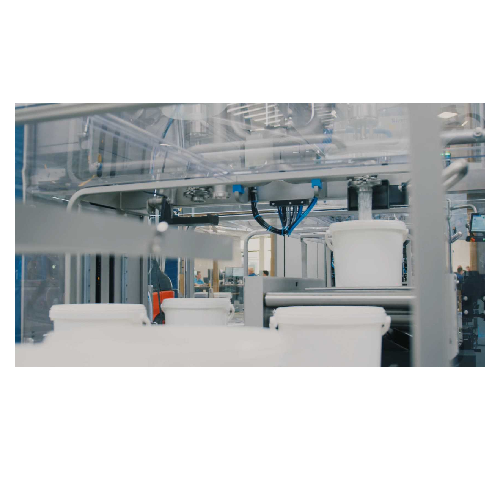
Oil and fat filling system for industrial use
Optimize your production line with this precise filling solution, designed t...
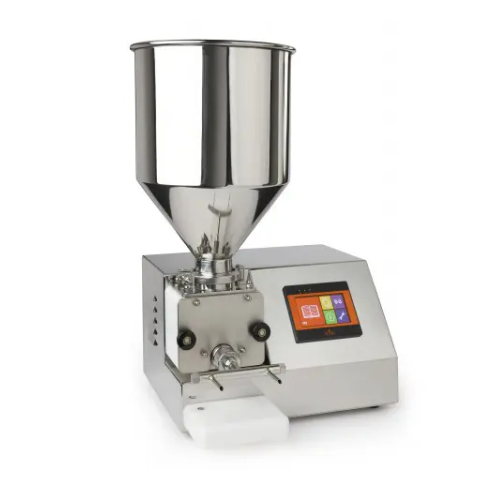
Professional dosing system for creams and sauces
Streamline your production with precise dosing of creams and sauces, tail...
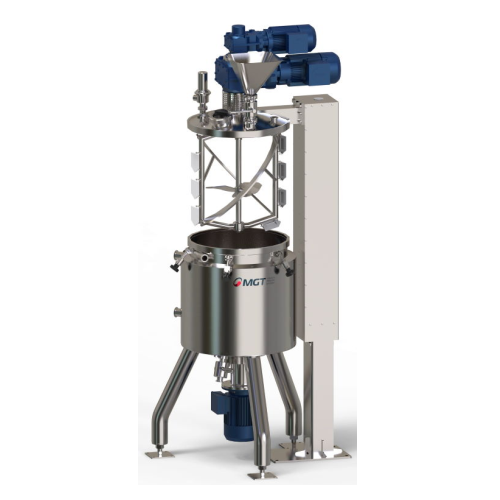
Vacuum mixing system for emulsion and homogenization
Achieve seamless emulsion and homogenization with precision: this sy...
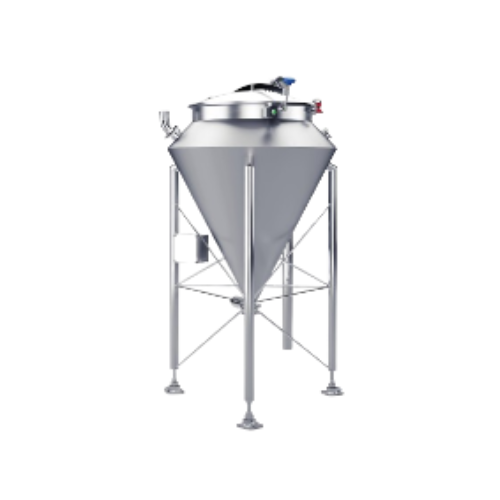
Precision weighing tank for liquid and dry ingredient blending
Enhance your production line with precision control over ...
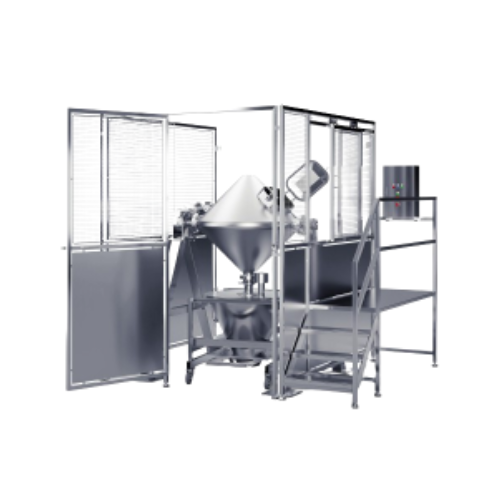
Industrial powder blender
Optimize your production with precise dry blending, ensuring efficient mixing processes and seamle...
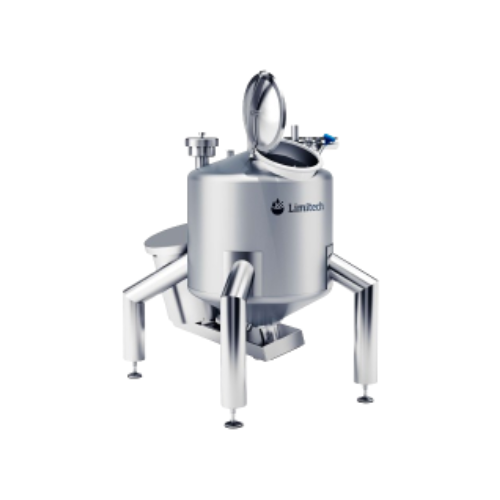
Industrial mixer for high shear mixing and emulsifying
Enhance your production line efficiency with versatile high shear ...
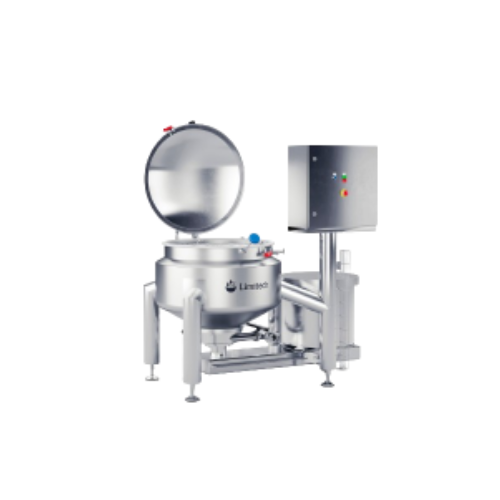
Inline high shear mixing for dairy and condiments
Streamline your production line with innovative inline high shear mixin...
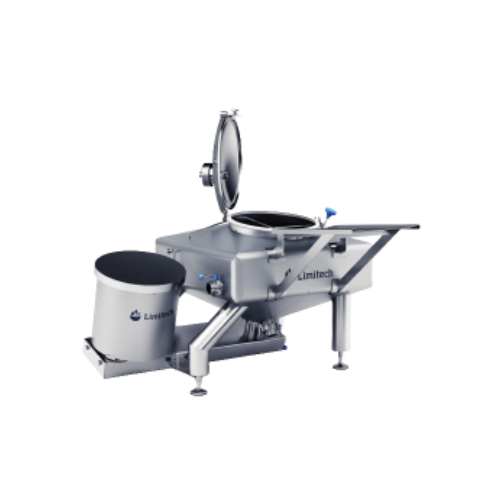
Batch mixer for dry and liquid ingredients
Achieve efficient blending of diverse ingredients with high shear mixing to str...
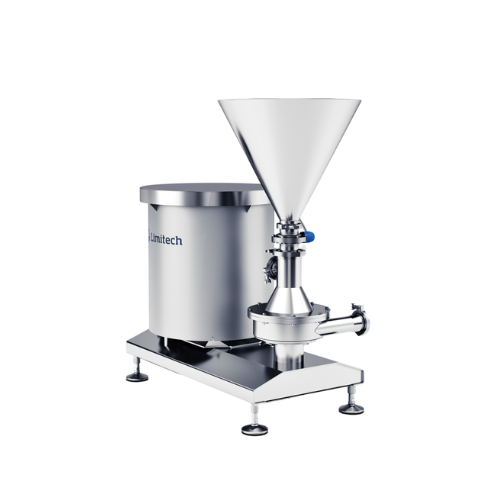
High-shear inline mixer for lump-free products
Achieve consistent texture and prevent clumping in liquid and powder blends...
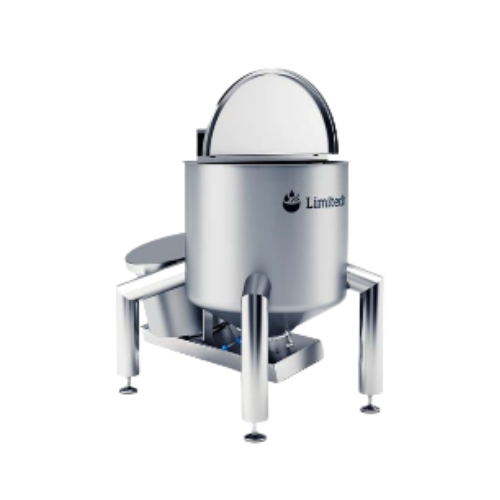
Pre-mixer for dissolving powders fast
Quickly dissolve powders without lumps or “fisheyes,” ensuring a smooth a...
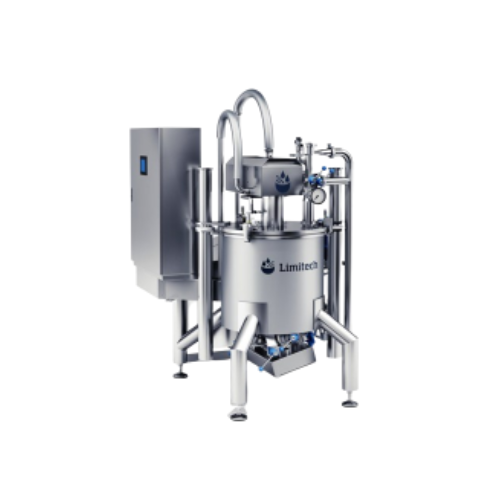
Multifunctional mixer for high volume batches
Efficiently handle complex mixing, emulsifying, and homogenizing tasks with ...
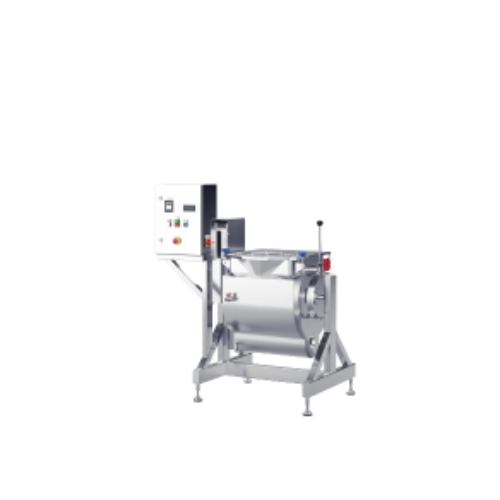
Industrial melting tank for diverse manufacturing applications
Optimize your production with this versatile melting tank...
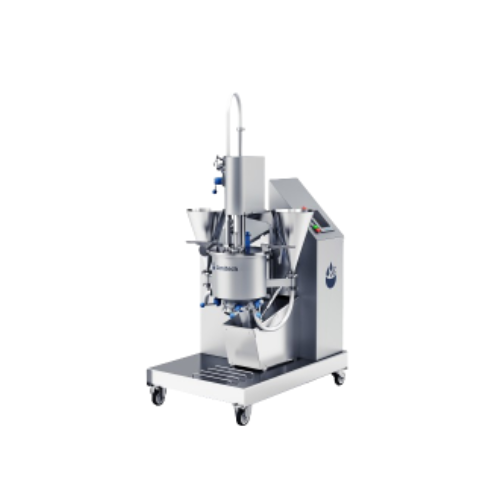
Blender for high viscous products
Tackle high-viscosity challenges with an advanced blending solution designed for efficien...
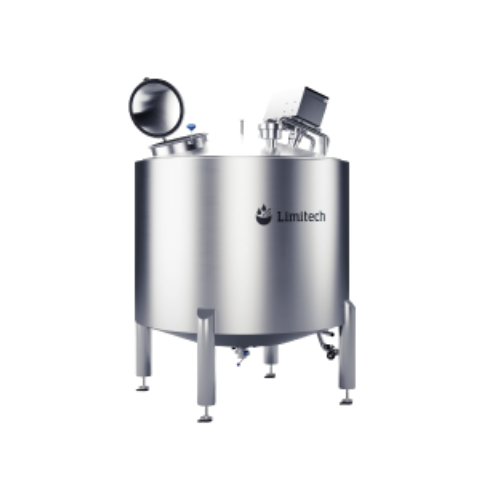
Customized oil storage tank for industrial use
Enhance production efficiency and ensure seamless integration with customiz...
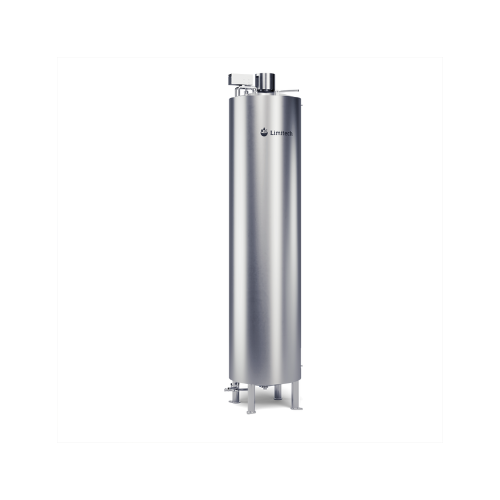
Large insulated oil storage tank
Ensure optimal temperature control for sensitive liquids like oils, sauces, and creams with...
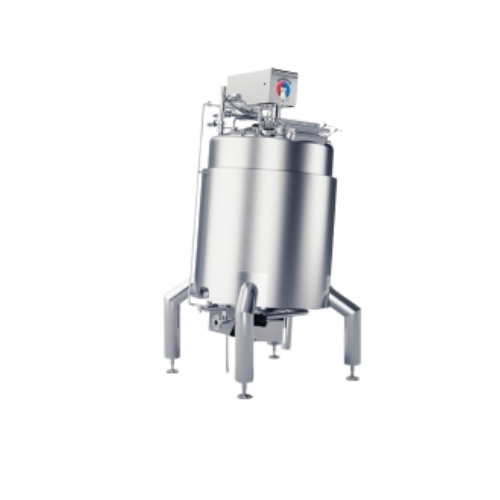
Heating solution for vegetable and meat products
Achieve efficient heating and optimal heat transfer for sauces and dairy ...
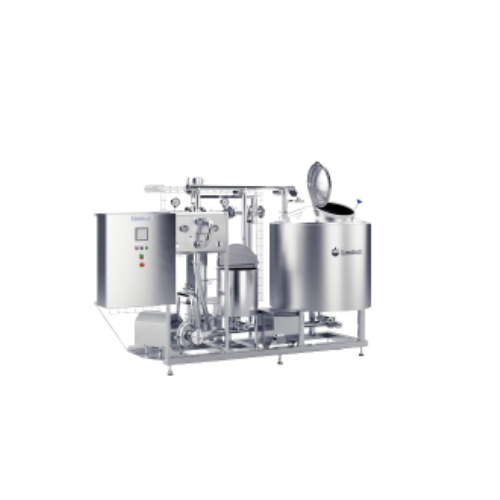
Cip dosing and water unit for industrial cleaning
Elevate your plant’s hygiene with this system, designed for seaml...
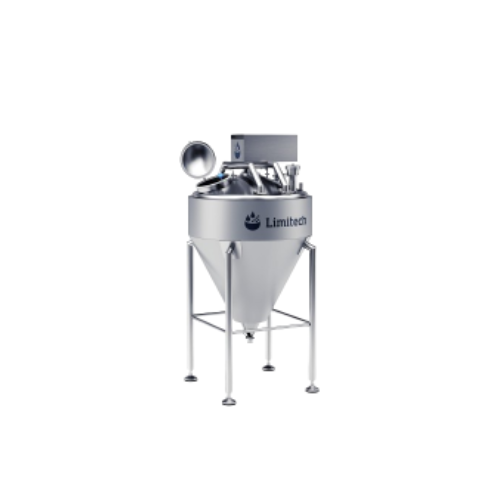
Conical buffer tank for hygienic dairy and food processing
Achieve efficient processing of high-viscosity products with ...
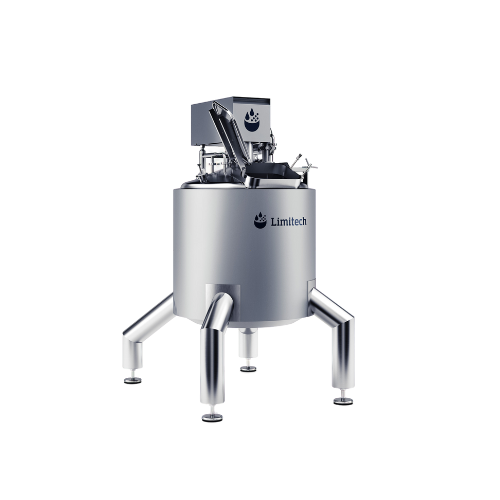
Powder dissolver for large liquid quantities
Achieve uniform powder blending swiftly with a vacuum-assisted system that pr...
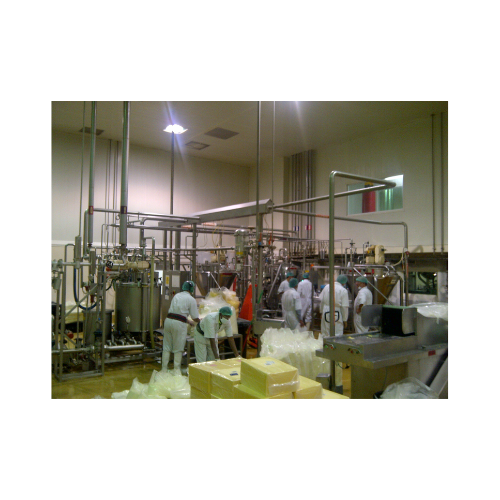
Ultra high temperature treatment system
Achieve extended shelf life and product stability with ultra high temperature treat...
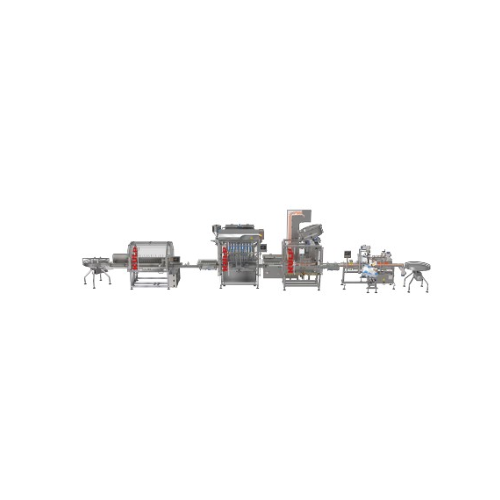
High capacity filling line for jars and bottles
Need to streamline your packaging line? This high-capacity solution proces...
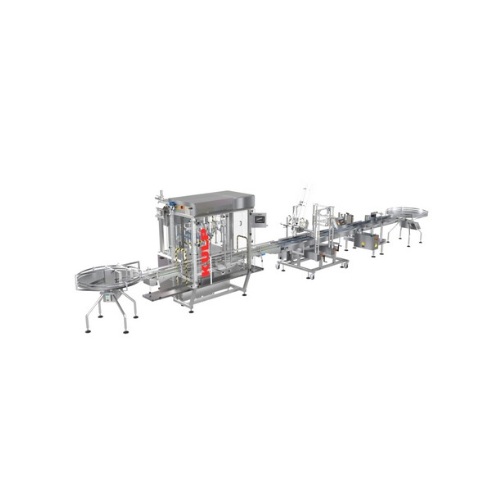
Large container filling line
Optimize your production line with a seamless solution for efficiently filling large containers...

Semi-automatic capper for twisting and screwing metal and plastic caps
Effortlessly achieve precise cap tightening with...
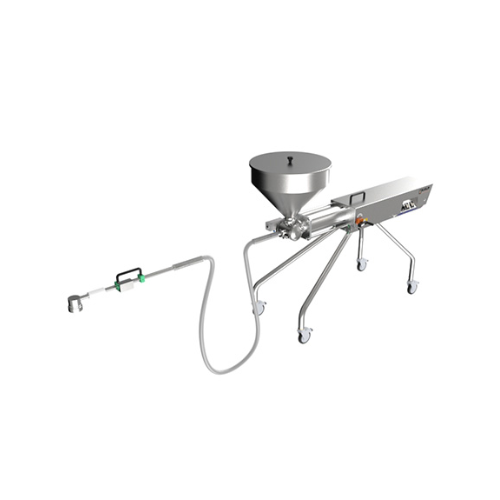
Volumetric filler for packaging liquids and semi-solids
Optimize your filling process with precision control and adaptabl...
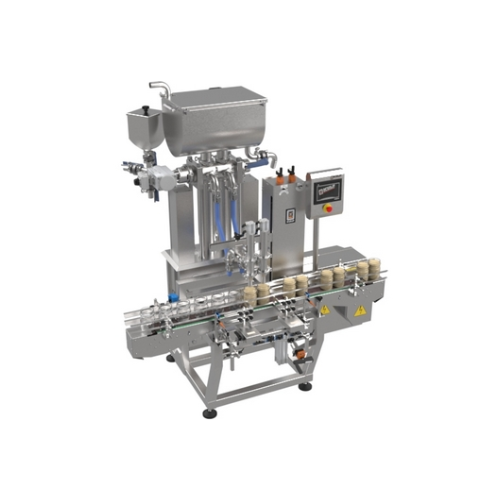
2-head liquid and viscous product filling system
Streamline your filling operations with precision and versatility designe...
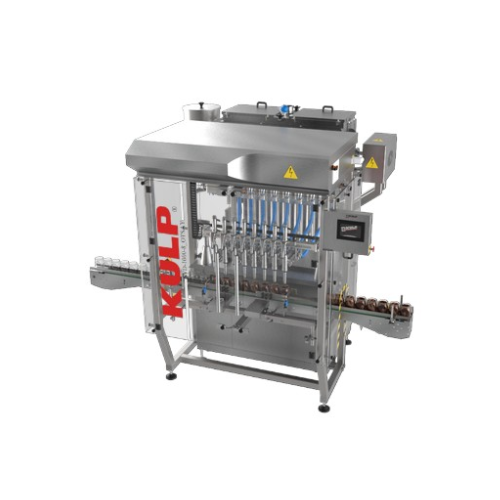
8 head liquid and viscous product filling system
When precision and speed are crucial, this 8 head filling machine ensures...

Automatic capping system for varied cap types
Enhance your packaging line efficiency with a high-speed capping machine des...
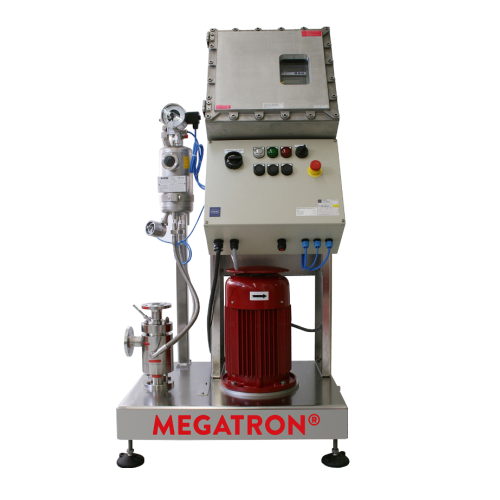
In-line disperser for high-volume liquid processing
Streamline your emulsification process with powerful rotor-stator hom...
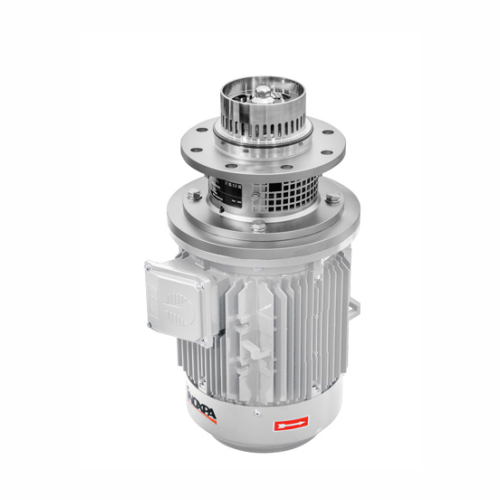
Tank bottom mixer for high viscosity applications
Achieve seamless emulsification and homogenization of high-viscosity pr...
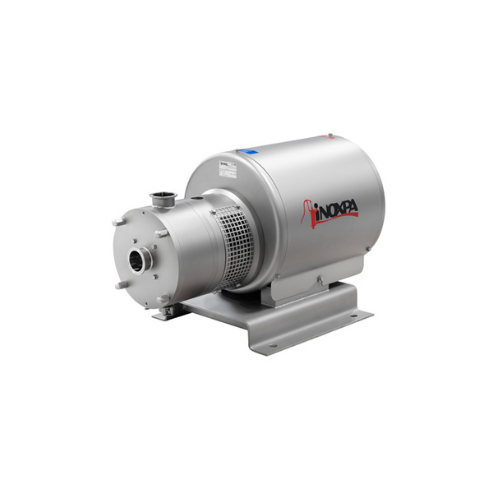
In-line high shear mixing solution
Achieve precise emulsification and particle size reduction with high shear capabilities,...
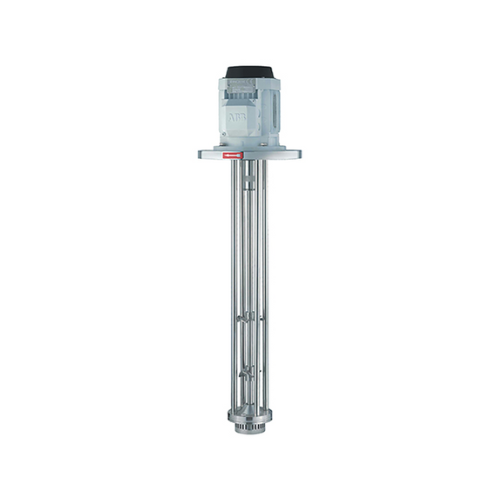
High shear vertical mixer for dispersion and emulsification
Achieve seamless emulsification and homogenization in divers...
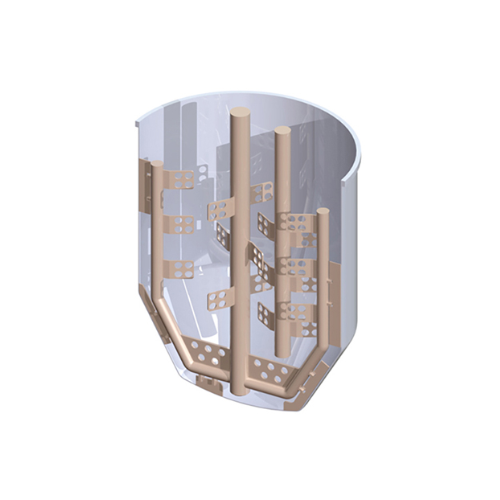
Agitators for mixing tanks
Optimize mixing operations with versatile agitators designed for various viscosities and fluid ty...
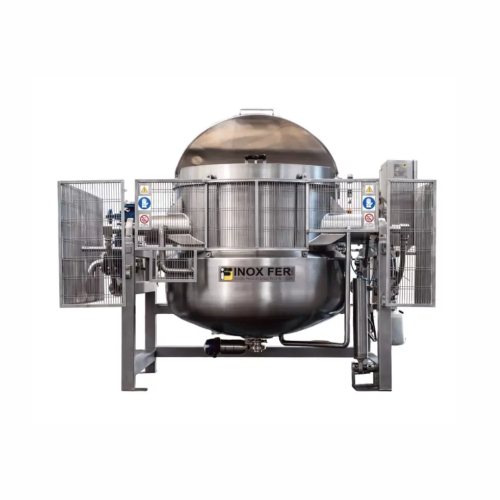
Steam jacketed kettle for cooking sauces and dressings
Enhance your sauce production with a steam jacketed kettle that en...
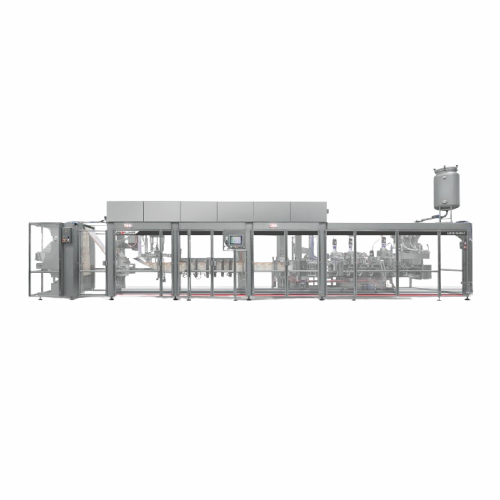
High-speed drift-dwell motion doypack forming system
Optimize your liquid packaging efficiency with a dual-motion system ...
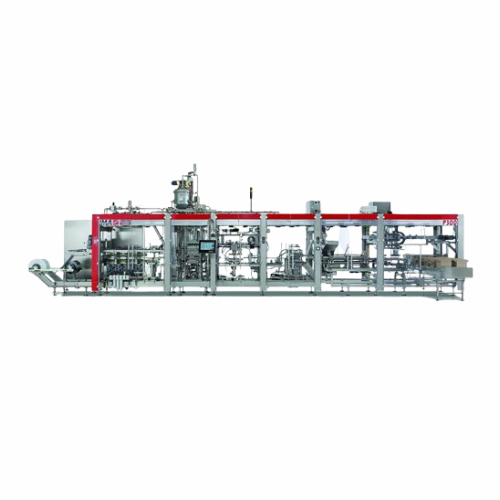
Form fill and seal machine for portion packs
Streamline your portion packaging with a compact system that efficiently form...
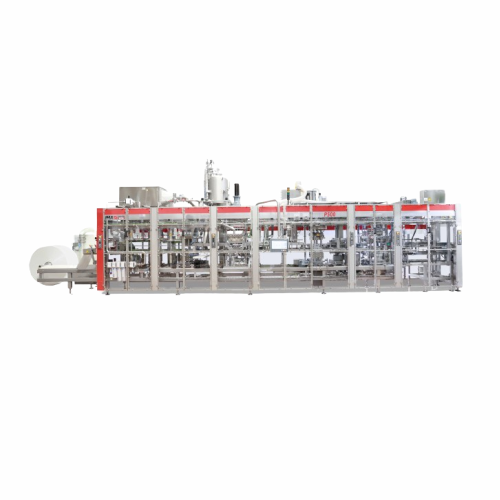
Form fill and seal solution for dairy portion packs
Optimize your production with precision portion packing, reducing mat...
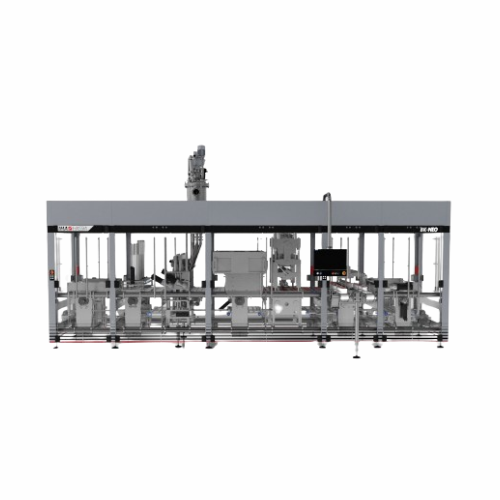
Filling and sealing system for pre-formed cups
Experience seamless integration of hygienic filling and sealing with adapta...
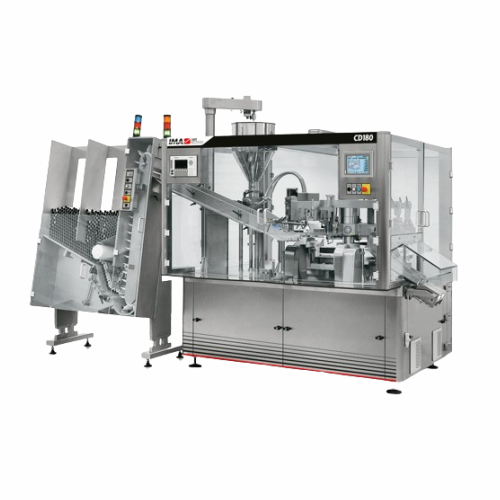
Automatic tubefiller for food and dairy products
Achieve precise dosing and seamless tube filling with high-speed efficien...
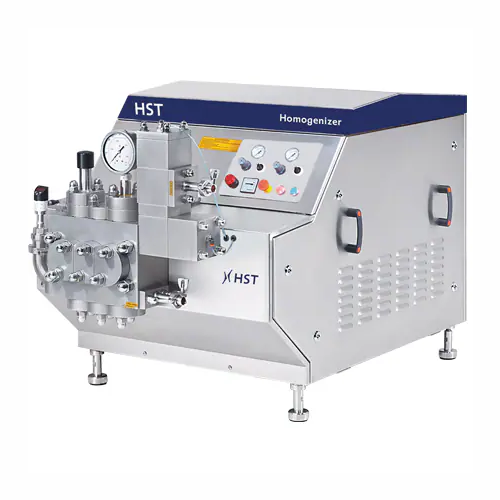
Industrial homogenizer for food and pharmaceutical applications
Ensure product consistency and stability with high-press...
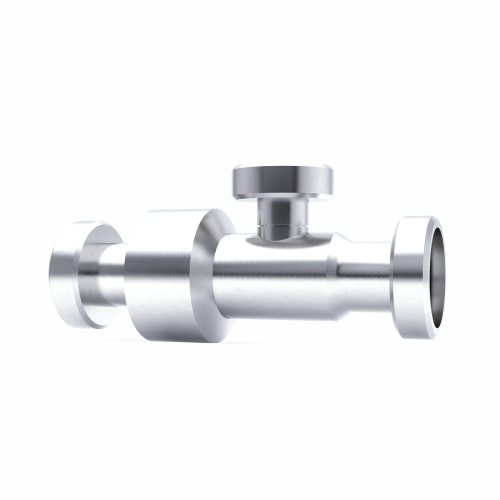
Magnet for emulsion technology for lump-free blends
Achieve perfectly smooth and stable emulsions in a single pass with a...
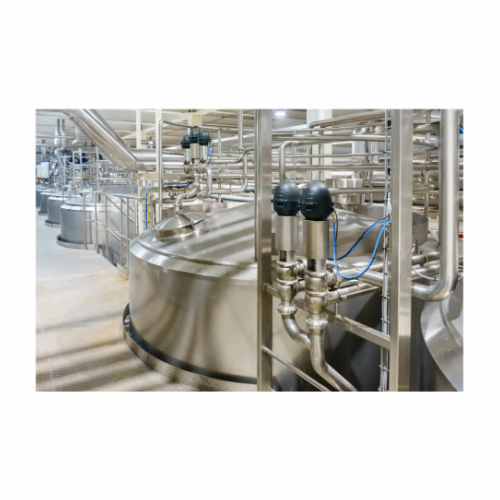
Filtration system for Cip cleaning in food production
Optimize your cleaning processes with a state-of-the-art filtration...
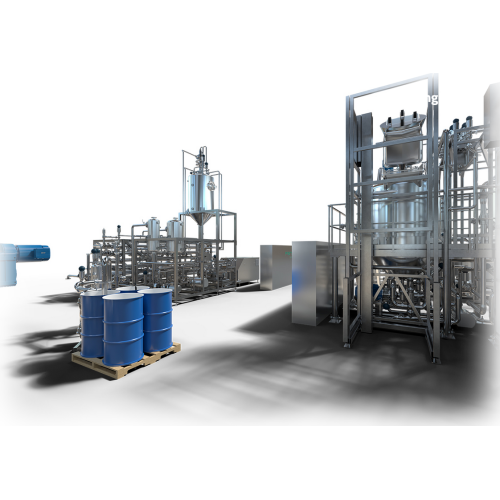
Steam-heated hemispherical bottom cookers for sauce production
Streamline your sauce and condiment production with multi...
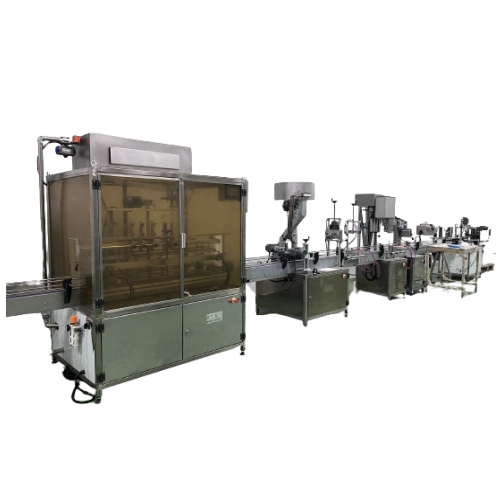
Liquid food filling solutions
Maximize efficiency in your packaging line with versatile filling machines designed for precis...
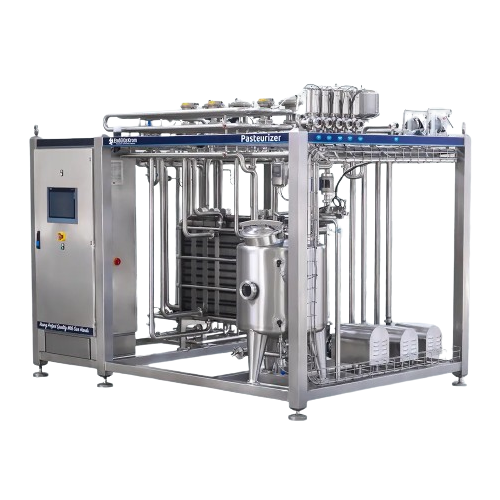
Industrial pasteurizer for dairy and beverage processing
Enhance product quality and safety with efficient heat treatment...
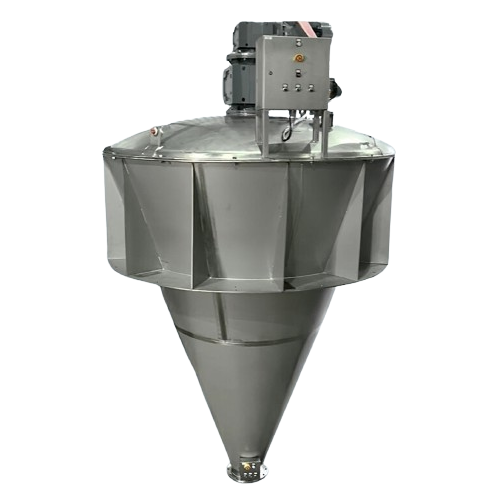
Conical powder mixer for uniform powder blending
Achieve consistent powder blending while preserving the integrity of deli...
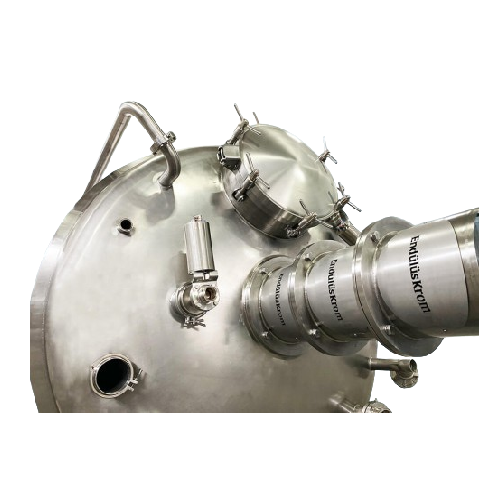
Industrial storage tanks for chemical and cosmetic industries
Need reliable storage that withstands aggressive chemical ...
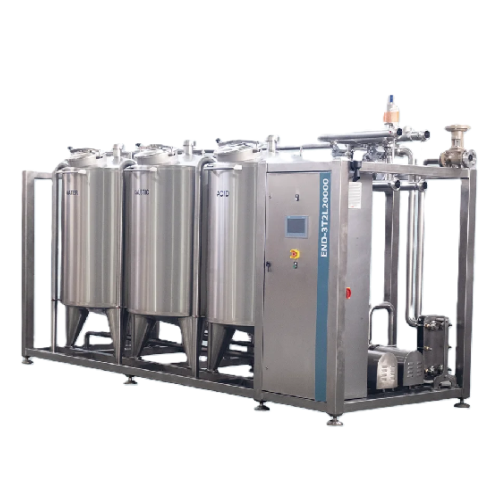
Automated cleaning in place (cip) systems for beverage processing
Optimize your production with automated CIP systems t...
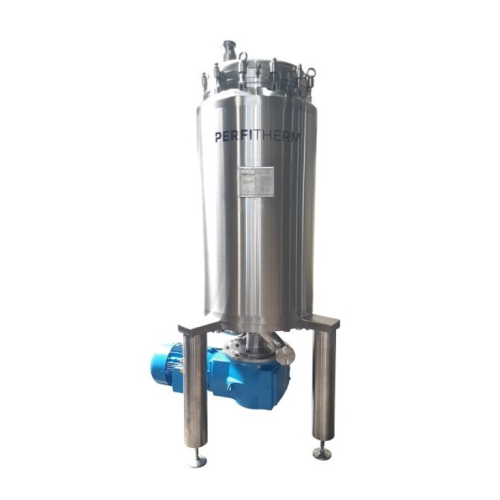
In-line mayonnaise emulsifying system
Streamline your sauce and dip production with a system designed for efficient emulsif...
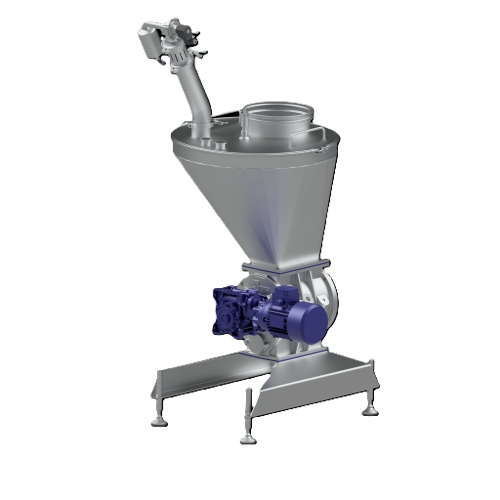
Dilute-phase conveying solution for powder handling
Efficiently transfer powders and granules with robust leak containmen...
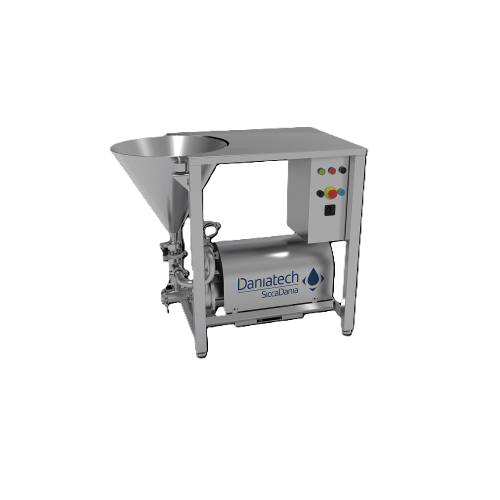
Inline high-shear mixer for powders and liquids
Achieve efficient mixing and homogenization in your production line with a...
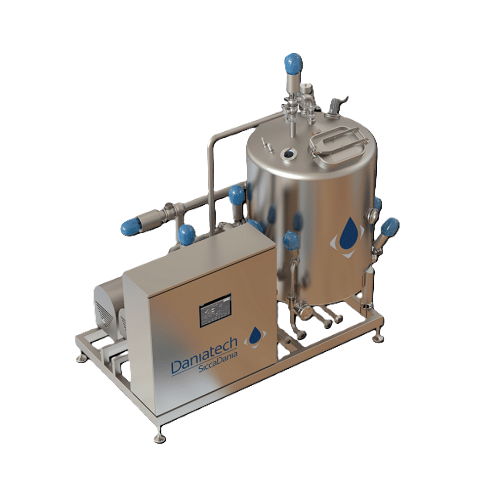
High-capacity inline mixer for dairy and beverages production
Achieve a rapid and homogeneous mix in high-capacity produ...
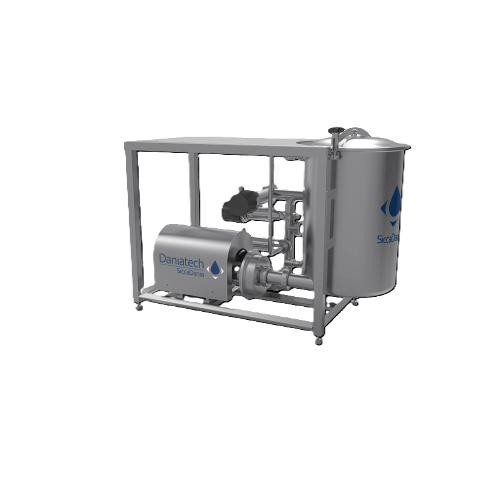
Mixer for low to medium viscosity products
Optimize your mixing, dosing, and homogenization processes with a versatile mix...
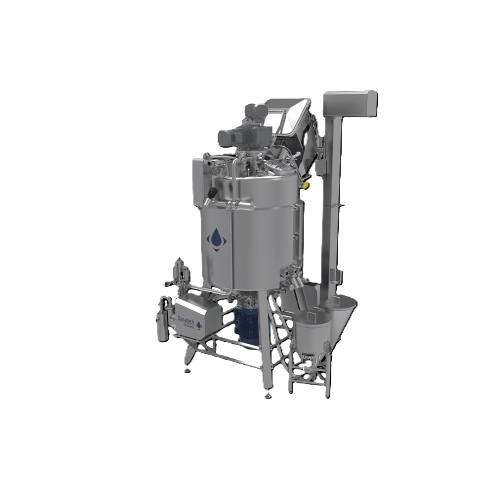
High-shear mixer for high viscosity products
Achieve consistent, homogeneous mixtures of high-viscosity products with a ve...
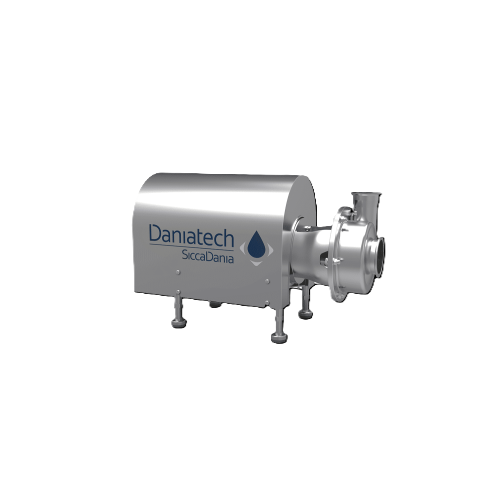
Ultra-high shear mixer for emulsification and homogenization
Optimize your production with ultra-high shear mixing, acce...
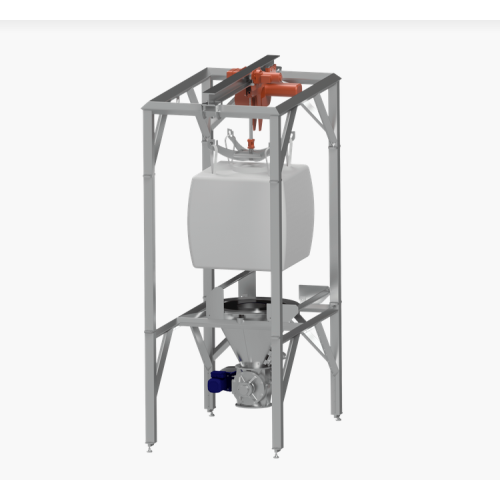
Bigbag discharge system for food, chemical, and pharmaceutical industries
Ensure precise and dust-free handling of bul...
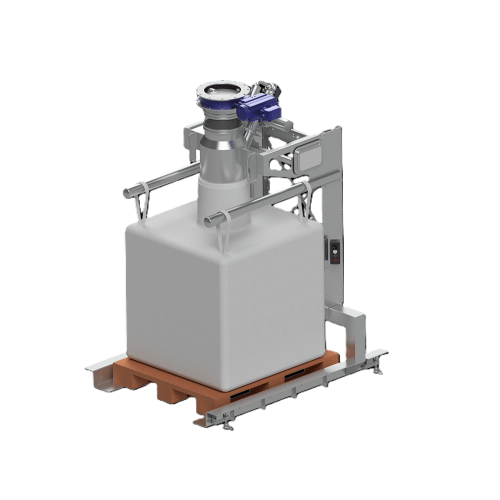
Bigbag filling system for powder and bulk materials
Ensure precise and dust-free bigbag filling with this versatile syste...
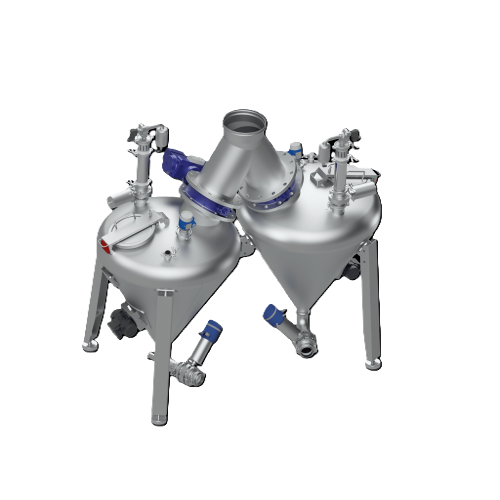
Dense-phase powder conveying system
Optimize your powder processing with a system designed to handle abrasive and fragile m...
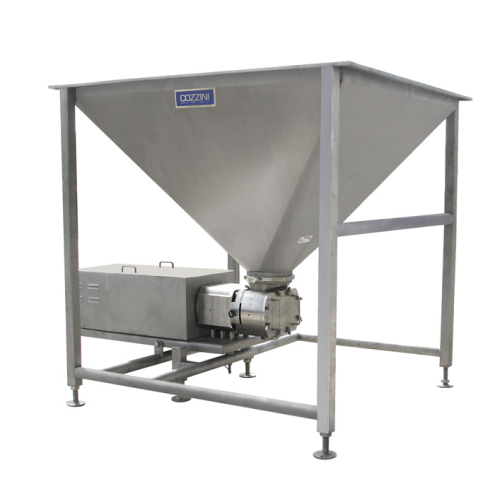
Transfer hopper with stainless Pd pump for food processing
Eliminate spillage and maintain continuous flow with a positi...
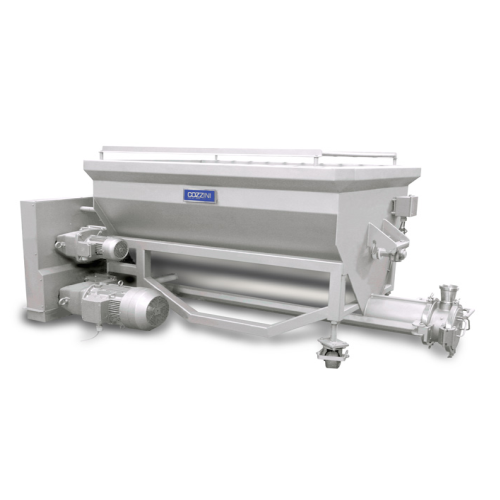
Horizontal screw loader for food processing
Optimize your production flow with a smooth-loading solution designed to effic...
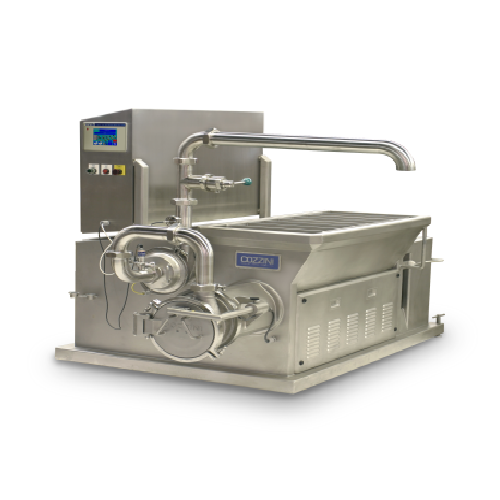
Compact food emulsion and reduction system
Achieve precise control over product texture and temperature with a compact sol...
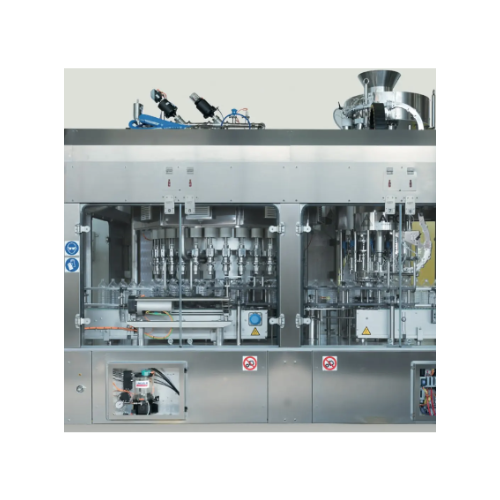
High-precision rotary weight filler for edible oils and sauces
Achieve exceptional filling precision with solutions desi...
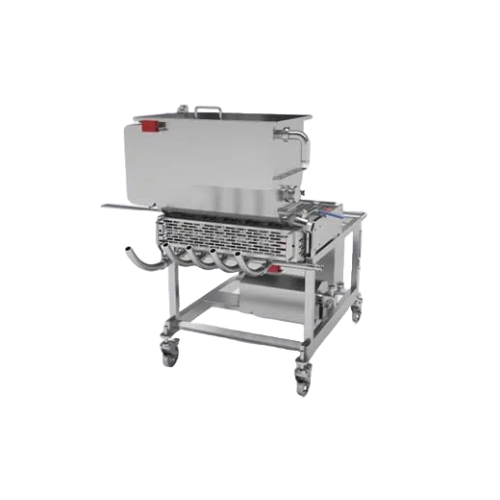
Automatic piston fillers for liquid products
Optimize your liquid filling process with high-precision piston fillers, engi...
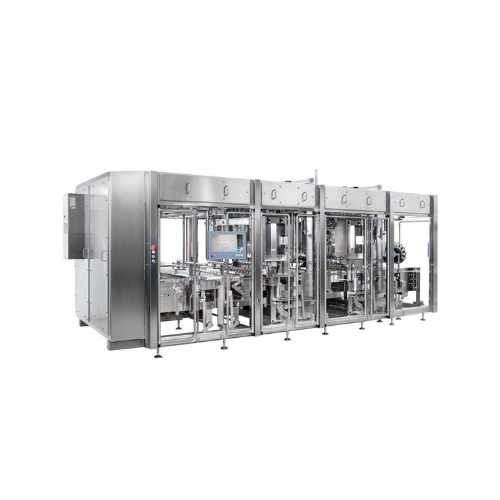
High-capacity filler and closer for pumpable products
Efficiently handle pumpable, flowable, and pasty products with this...
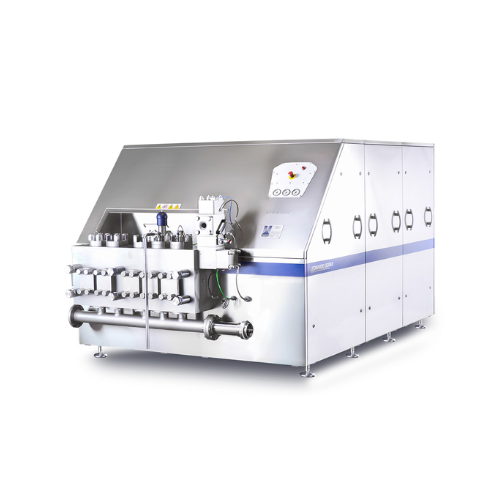
High-pressure homogenizer for dairy and food production
Optimize your product consistency and stability with a high-press...
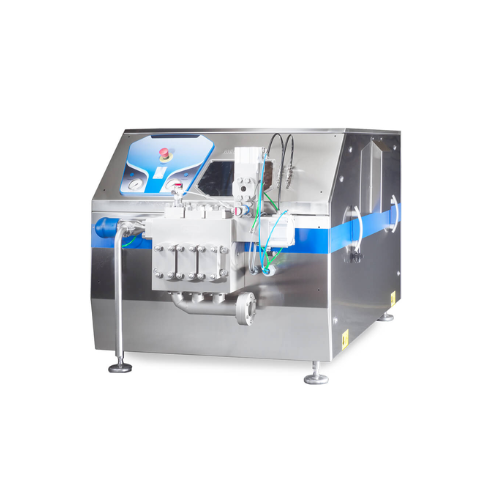
Industrial homogenizers for high-pressure applications
Optimize homogenization with high-pressure solutions designed for ...
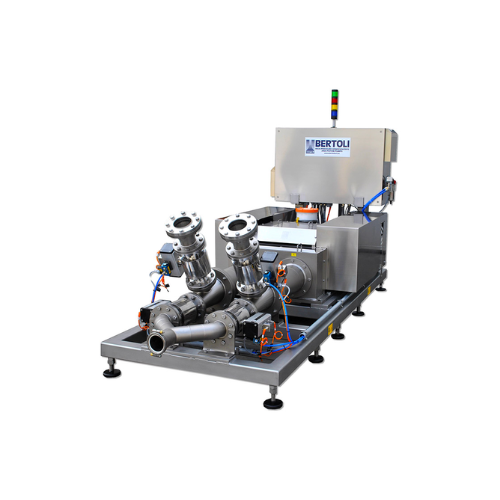
Industrial homogenizer for food and beverage applications
For manufacturers seeking consistent quality, this homogenizer...
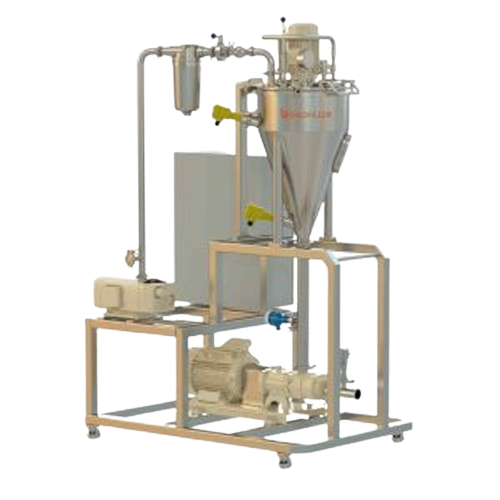
Vacuum deaerator for elimination of gases
Optimize your product quality by eliminating occlusive gases with this advanced ...
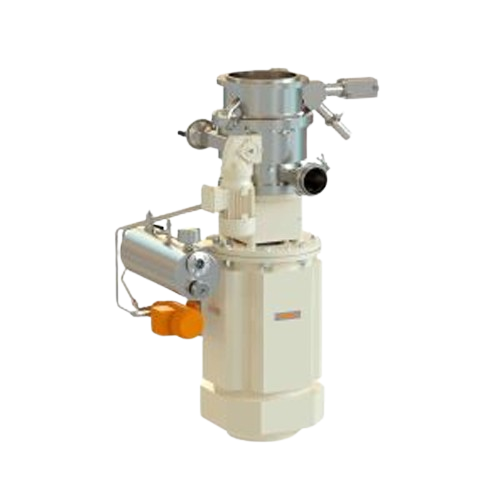
Homogenizer for high viscosity emulsion and dispersion
Achieve unparalleled dispersion and emulsification with a system d...

Industrial vacuum mixer and reactor for liquids
For manufacturers needing precise blending and stability, this advanced va...
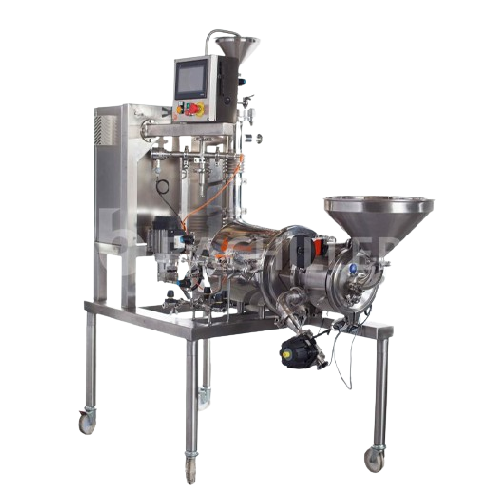
Colloidal mill for fine grinding and homogenisation
Optimize your liquid and semi-solid processing by achieving precise p...
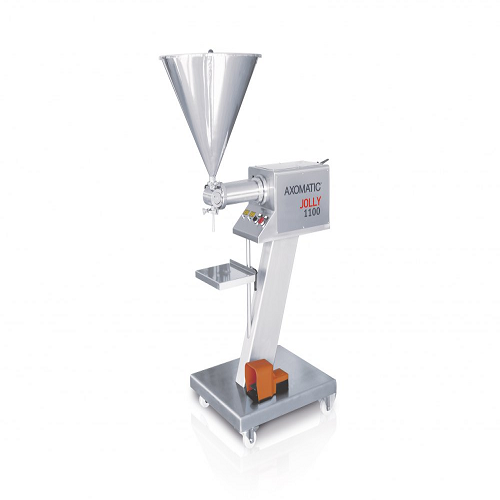
Pneumatic dosing system for dense and semi-dense products
For precise dosing of dense and semi-dense liquids, this pneum...
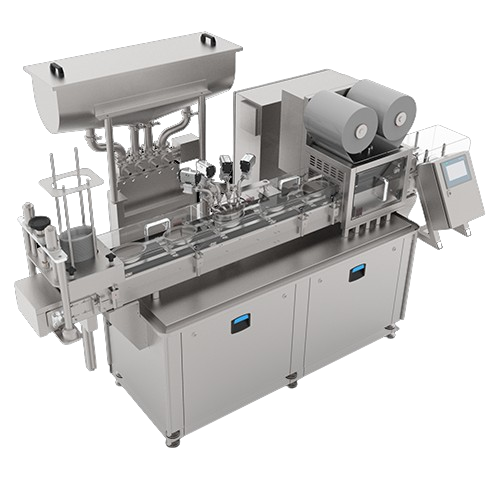
Linear filler for preformed containers
Streamline your packaging process with a compact solution that ensures precise filli...
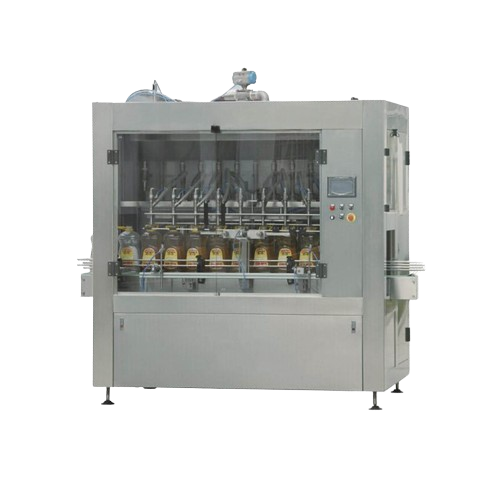
Automatic food cooking oil bottling solution
Ensure precise volumetric filling for a range of liquid products, enhancing y...
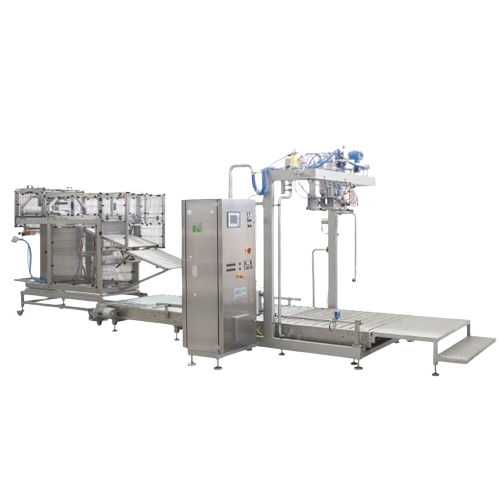
Flexible bag-in-box filler for liquid and viscous products
Optimized for flexibility and efficiency, this bag-in-box fil...
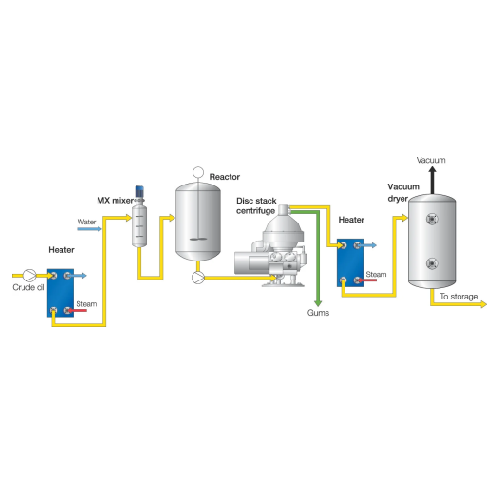
Degumming systems for edible oils
Achieve superior oil quality with innovative degumming systems that effectively eliminate...
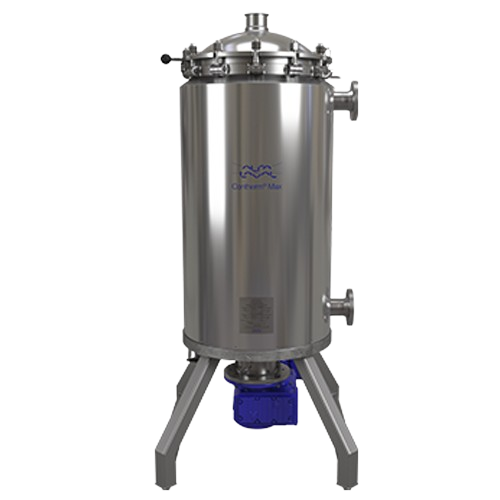
Double-wall scraped surface heat exchanger
Achieve high-capacity processing with gentle handling for shear-sensitive produ...
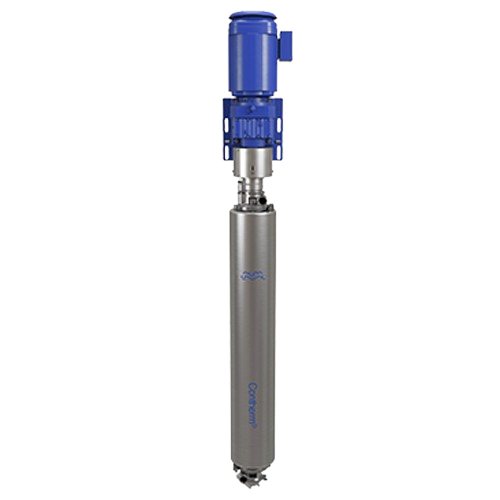
Scraped surface heat exchanger for viscous products
Efficiently handle challenging viscosities and heat-sensitive product...
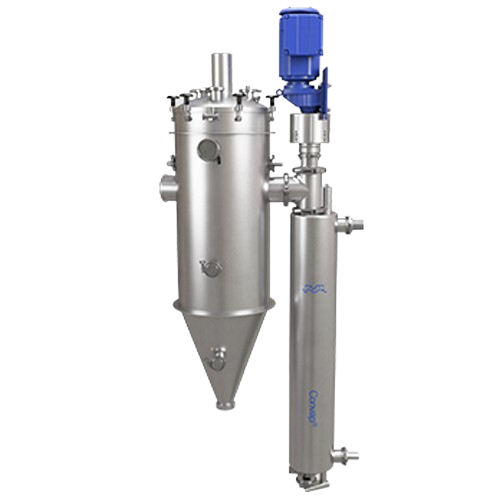
Scraped surface evaporator for high-viscosity materials
Efficiently concentrate high-viscosity and hard-to-handle materia...
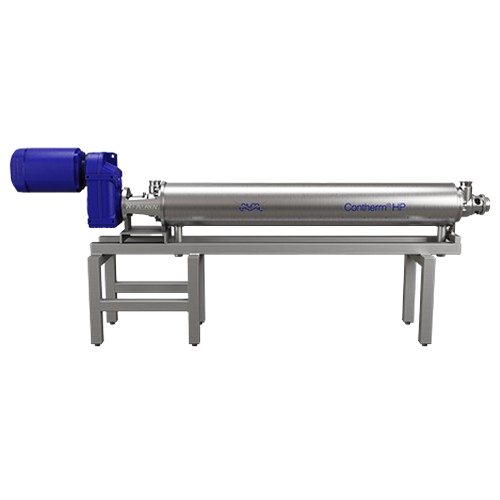
Scraped surface heat exchanger for high-pressure applications
Handle high-viscosity and particulate-rich products with p...
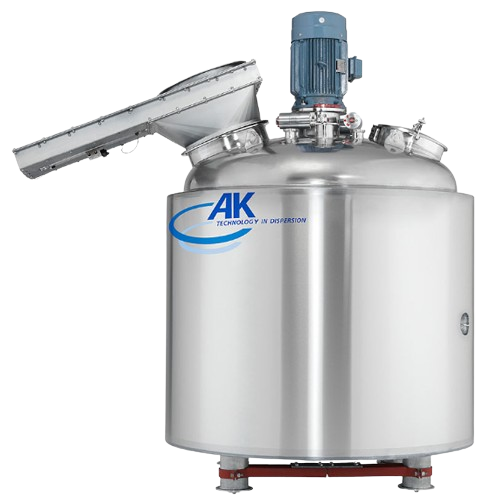
Emulsion processing system for homogenizing solids into liquids
Achieve precision in emulsifying and homogenizing proces...
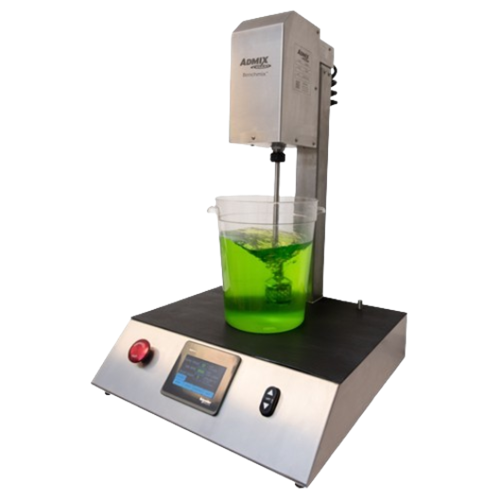
Benchtop mixer for lab-scale product development
Easily scale up your formulations with precise and repeatable lab-scale m...
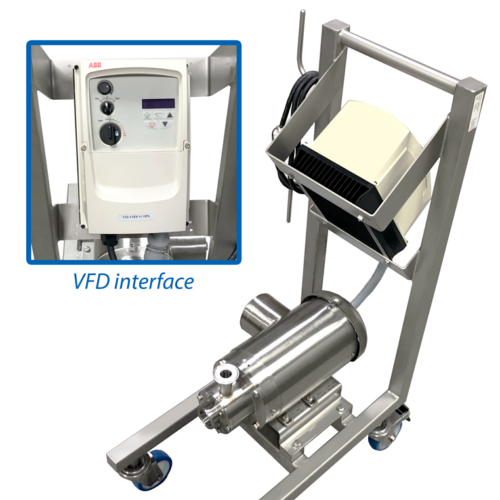
Inline continuous mixer for dairy and beverage processing
Achieve precise emulsification and particle size reduction for...
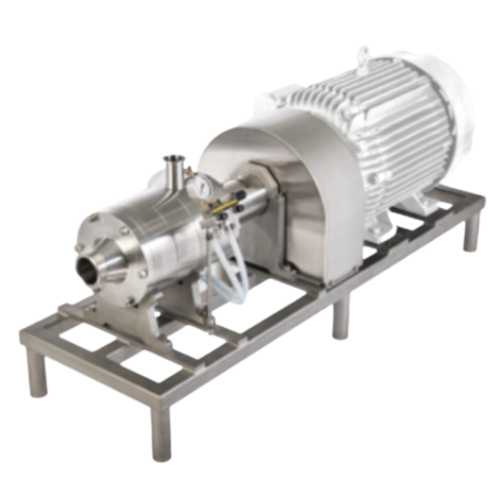
Inline wet mill for mayonnaise emulsions
Eliminate the challenges of achieving stable, uniform emulsions in your sauces and...
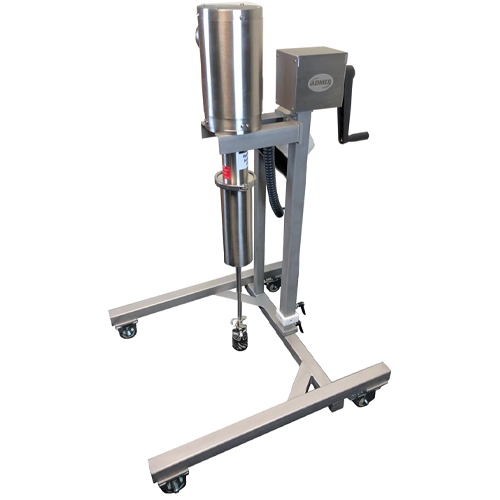
Pilot scale mixers for product development and small production runs
Optimize your mixing processes with precision cont...
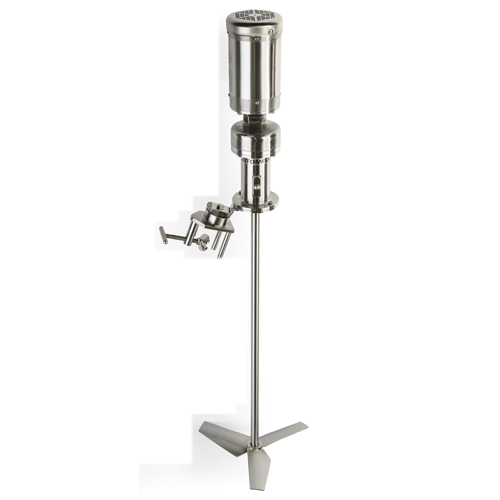
Low-shear portable mixer
For processes demanding strict hygiene, this mixer eliminates rust and chipped coatings by offering ...
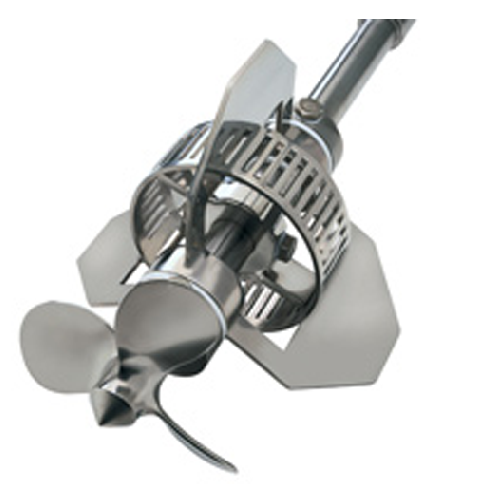
High shear emulsifier for hygienic applications
Achieve precise emulsification and consistent mixture quality with enhance...
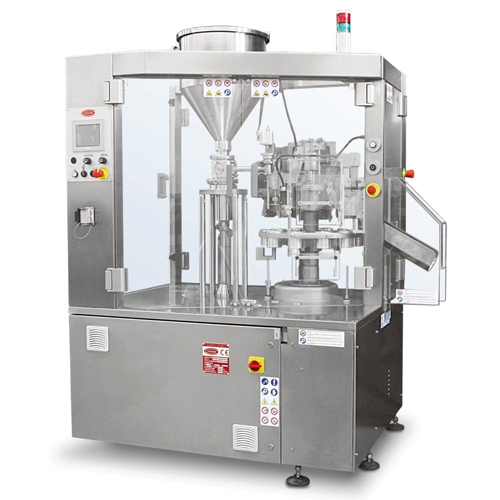
Efficient tube filler and sealer
Optimize your production line with a semi-automatic tube filling and sealing solution, desi...
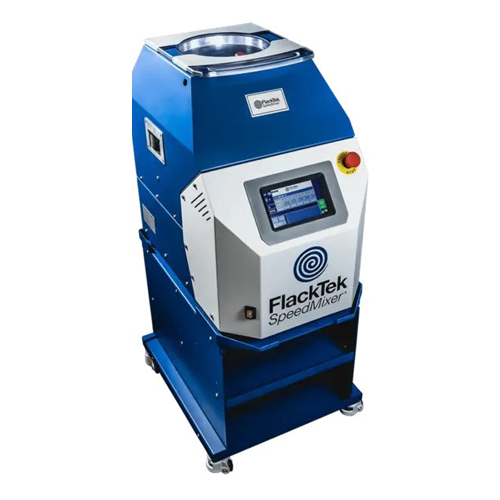
Dual asymmetric centrifugal mixer for epoxy and slurry mixing
Achieve precise mixing and consistency in your formulation...
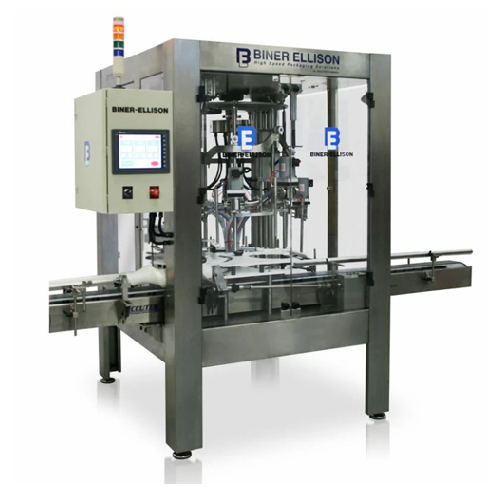
Automatic positive displacement bottle filler
Streamline your liquid filling operations with precision and flexibility, id...
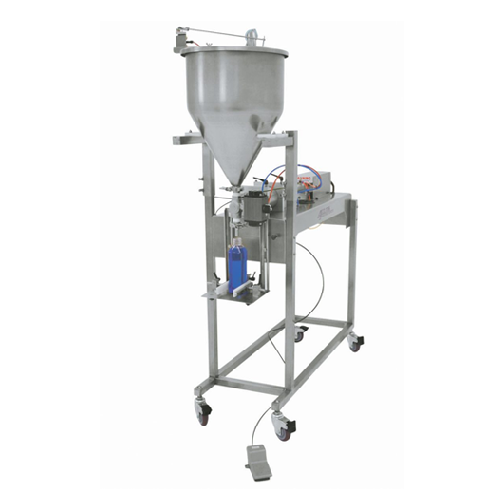
Semi-automatic volumetric piston filler
Achieve precise filling of diverse liquids and viscous products while minimizing wa...
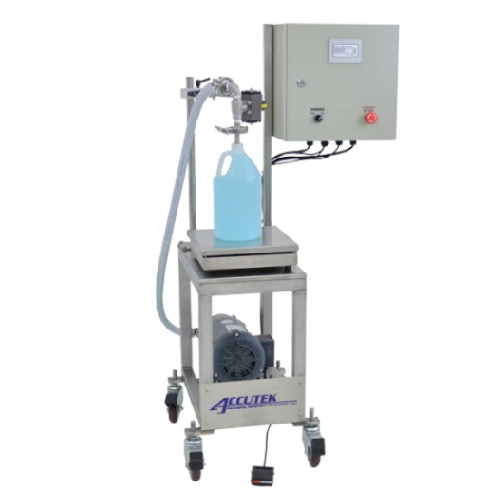
Accurate net weight filling for liquid and semi-liquid products
Ensure precise filling of diverse viscosities, from thin...
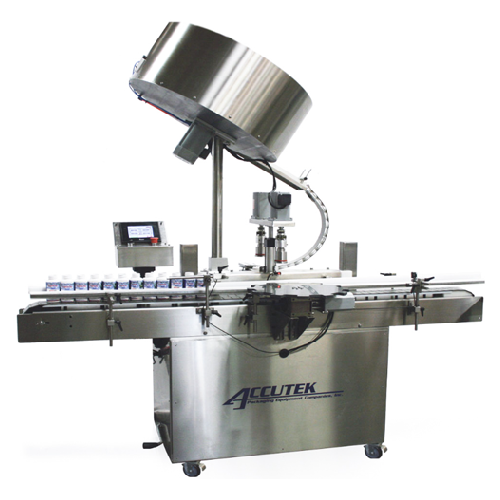
Automatic capper for dual head o-ring chuck
Ensure precise cap application with dual-head precision, handling various bott...
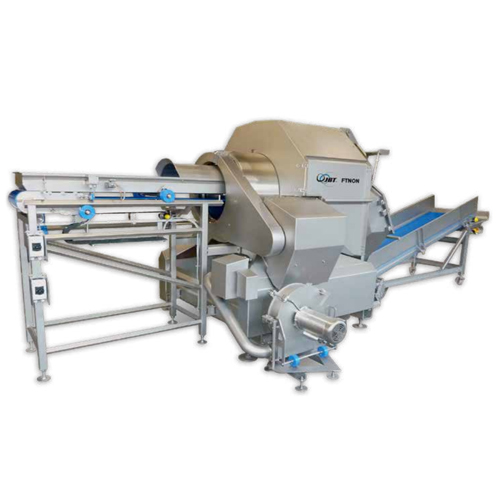
Centrifuge for drying fragile salads
Achieve consistent drying of delicate leafy greens with minimal damage, enhancing prod...

Mixing tank for soups, sauces, and dressings
Streamline your soup and sauce production with advanced mixing technology des...
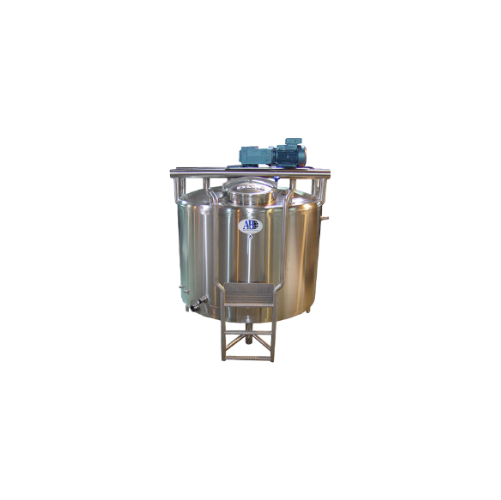
Industrial mixing tanks for liquid, slurry, and gas dosing
Optimize your production with versatile mix tanks, designed t...
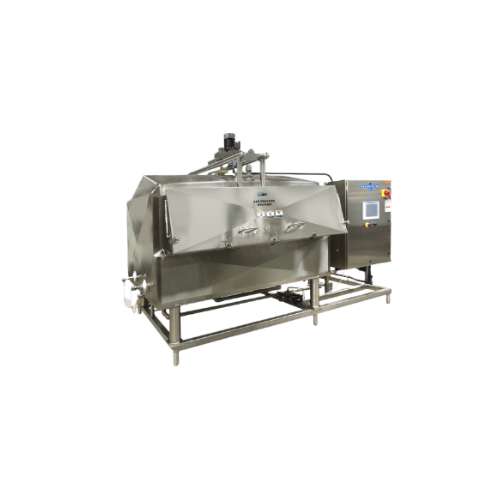
Industrial block melt system for butter and chocolate
Efficiently transition solid blocks of butter, chocolate, or waxes ...
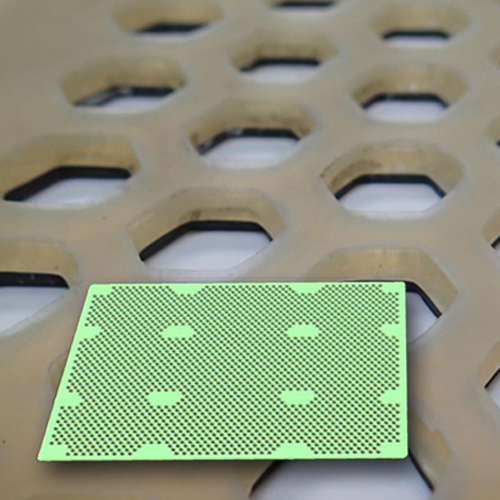
Layer pad for agitating retorts in food processing
Efficiently secure and process irregularly shaped containers in retort...
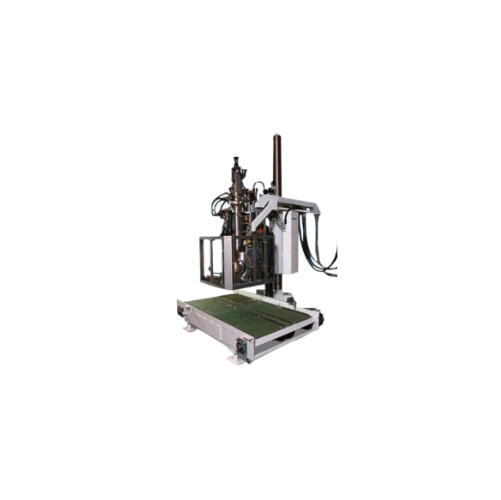
Aseptic bag filler for bulk containers
Eliminate spoilage events and ensure sterility in high-speed filling of bulk aseptic...
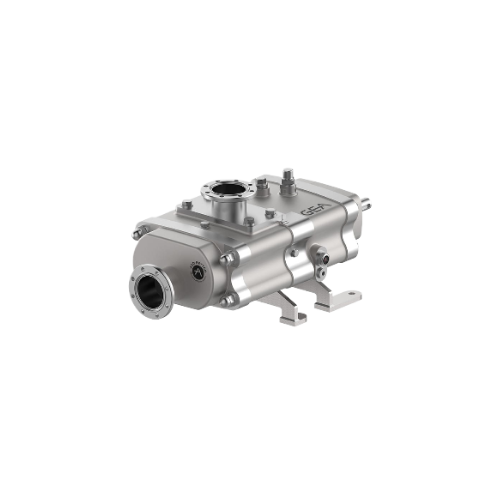
Twin screw pump for viscous media
Streamline your production with a twin screw pump that effortlessly handles viscous media...
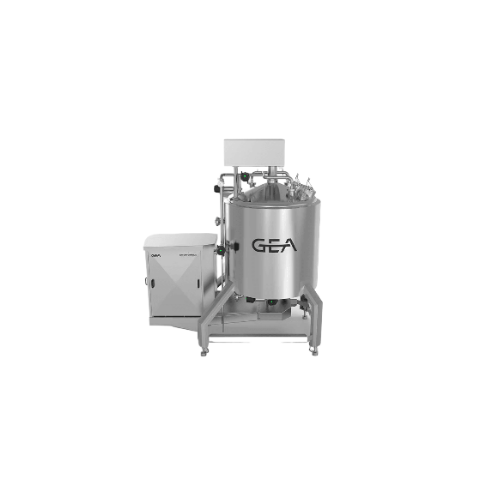
High shear mixer for dairy and personal care products
Achieve consistent emulsification and stable homogeneity with high ...
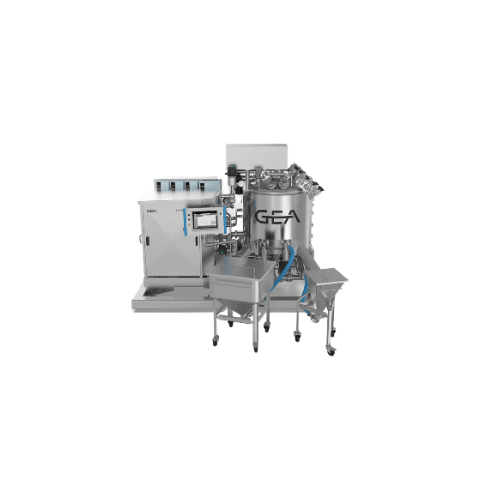
High shear test mixers for developing new products
Streamline product development with high shear test mixers, allowing y...
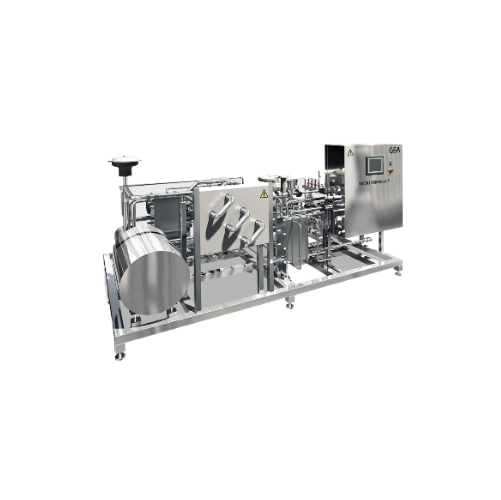
Microparticulation unit for whey protein processing
Enhance your dairy and food formulations with optimized whey protein ...
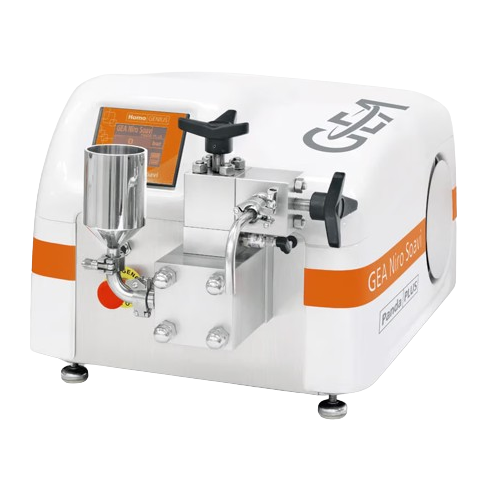
Laboratory homogenizers for nanoparticles and emulsions
Tackle the challenge of achieving consistent nano-scale dispersio...
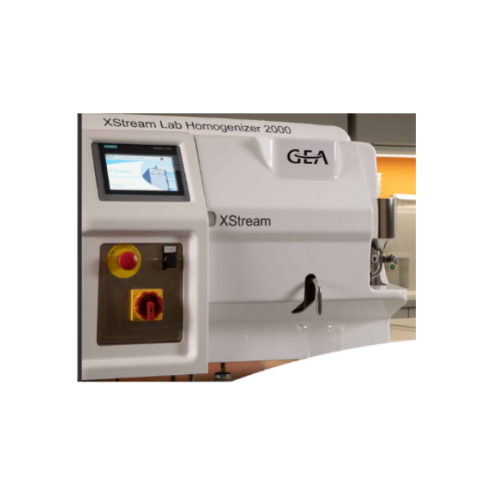
Laboratory homogenizer for scaling nisox-valve benefits
Achieve reliable scaling from lab to production with this precise...
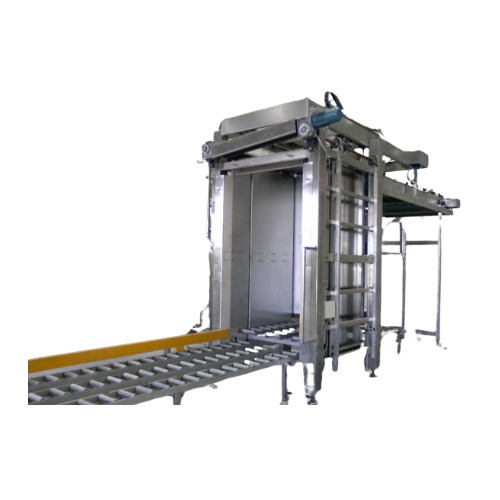
Complete filling and closing line for food containers
Optimize your production line with a versatile solution that ensure...
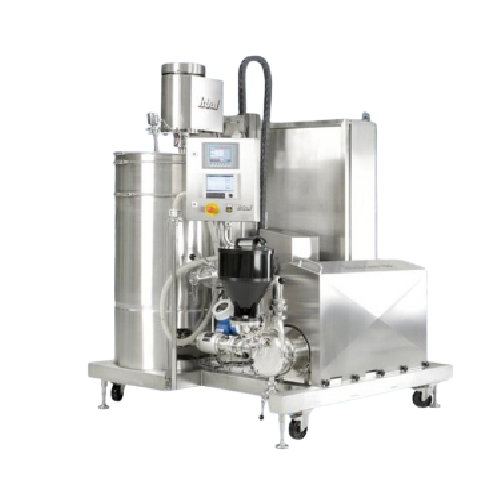
Inline disperser for food production
Quickly achieve stable, agglomerate-free dispersions and emulsions with minimal manual...
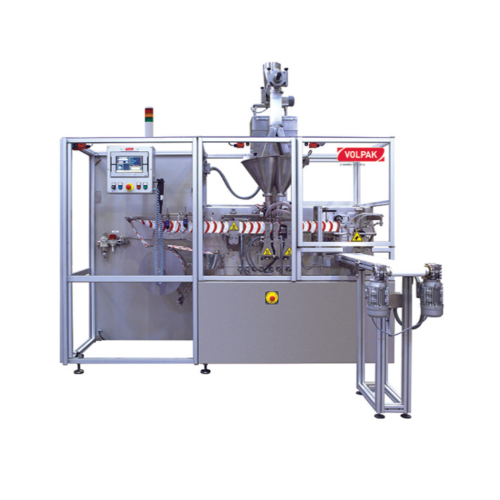
Horizontal flat pouching solution for foods and chemicals
Achieve precision in pouching liquids and powders with high-sp...
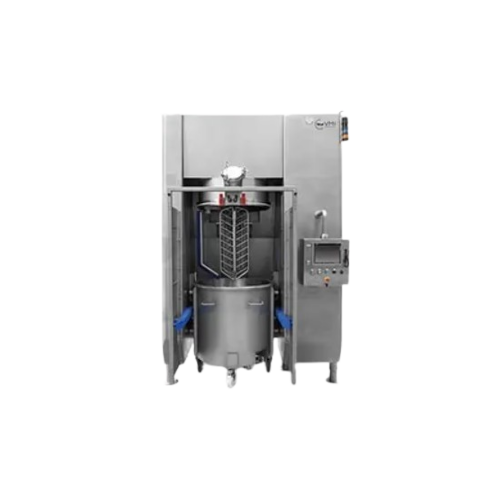
Planetary mixers for baking and food industries
Achieve precise mixing and consistency across a range of products with adv...
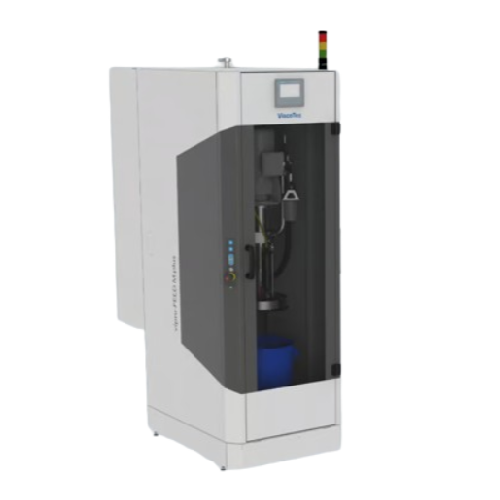
Emptying systems for high viscosity fluids and pastes
Efficiently empty high-viscosity fluids and pastes with precision, ...
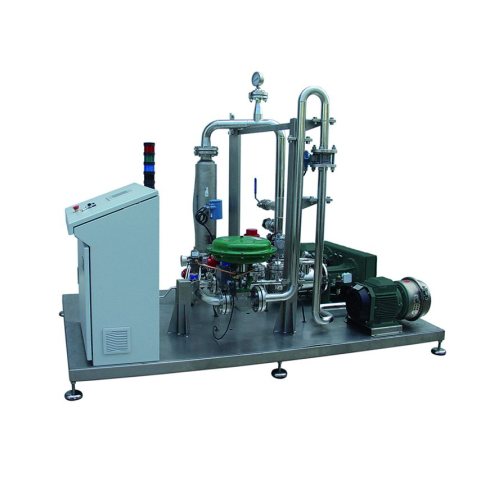
Complete mixing systems for industrial applications
Optimize your production efficiency and product consistency with adva...
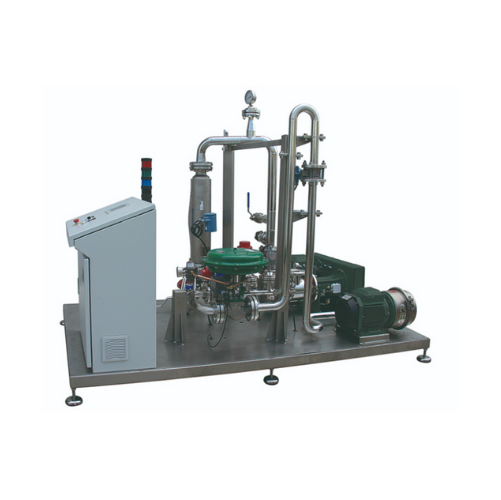
Complete mixing solution for food, cosmetics, and chemical industries
Optimize your production line with a system that ...
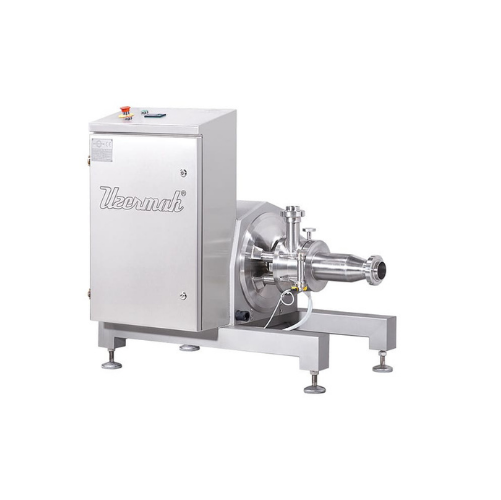
Inline mechanical homogenizer for food processing
Achieve precise particle size and uniform texture in your emulsions and...
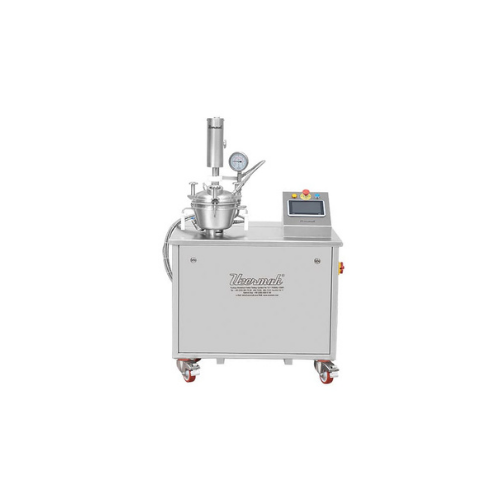
Multifunctional industrial food mixer
Efficiently handle complex food processing tasks from mixing to homogenizing with a m...
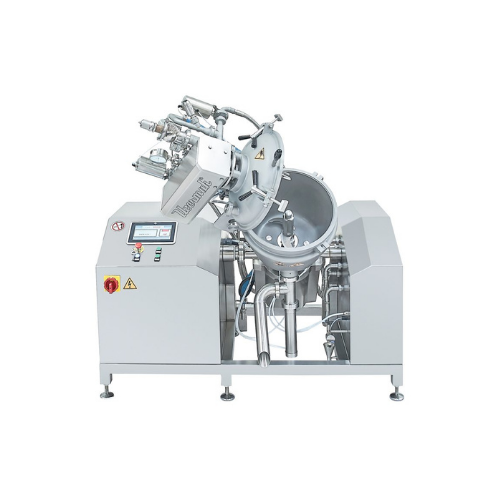
Multifunctional cheese and sauce processor
Optimize your production of sauces, dressings, and confectionery fillings with ...
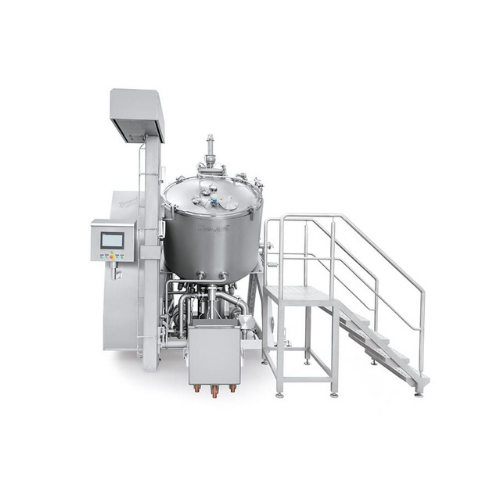
Multifunctional industrial mixer for processed cheese and sauces
Optimize your batch production with a versatile solutio...
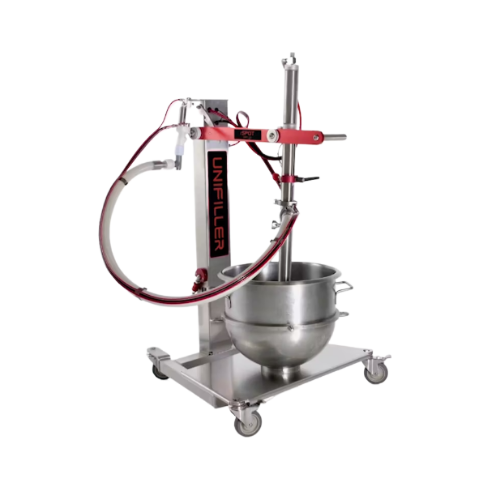
Compact food depositor for direct container use
Streamline your depositing process with a versatile solution that handles ...
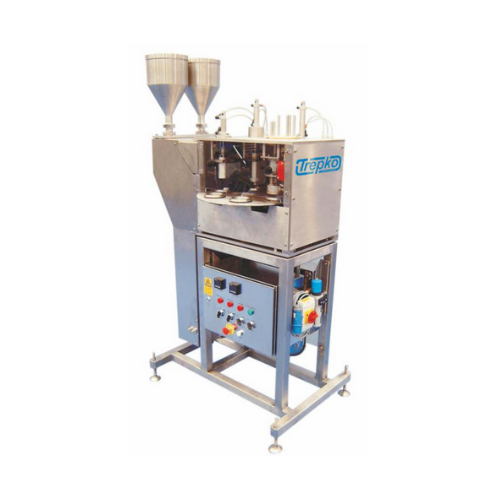
Rotary cup filling and closing system
Maximize production efficiency with a system that offers precision filling and secure...
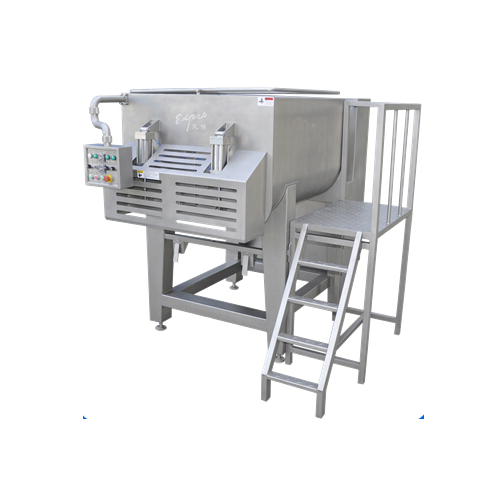
Commercial food mixers for versatile culinary applications
Streamline your food production with mixers and kneaders desi...
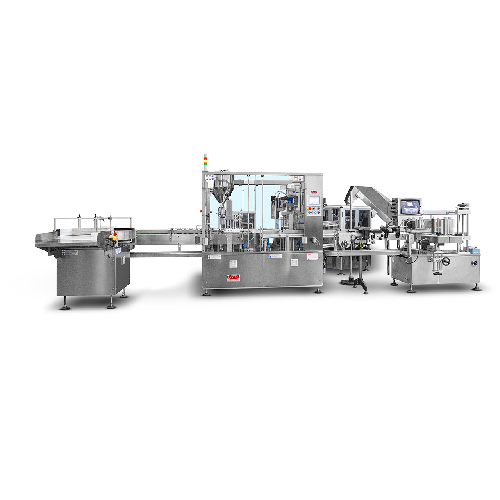
Medium volume bottle and jar filling system
Efficiently manage filling operations for diverse liquid and semi-dense produc...
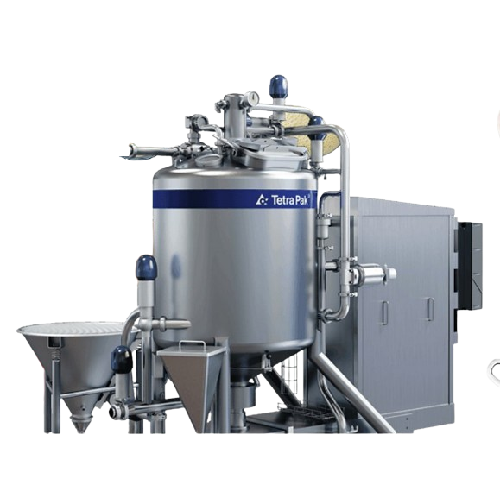
High shear mixer for emulsions and dispersions
Achieve precise emulsification and dispersion with advanced high-speed mixi...
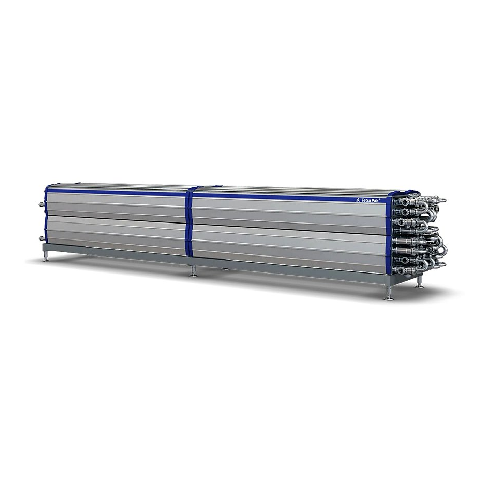
Tubular heat exchanger for food processing
Optimize energy consumption and ensure unparalleled food safety during heat tre...
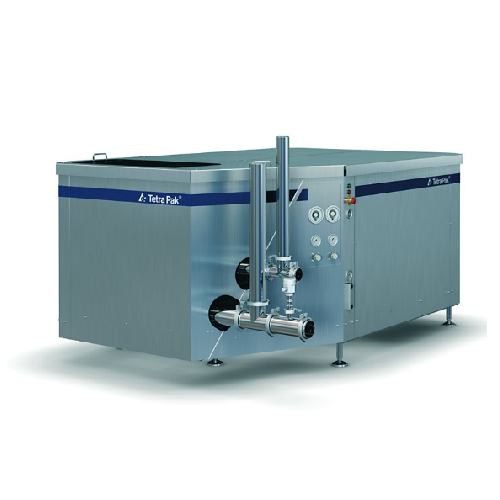
Industrial homogenizer for liquid food applications
Achieve unparalleled product consistency and quality with high-speed ...
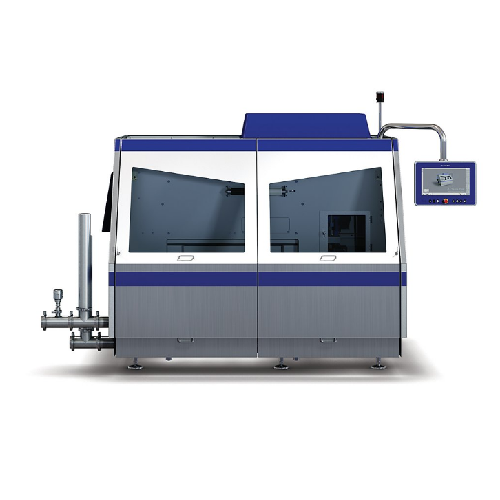
Homogenizer for high-capacity food processing
Achieve superior emulsification and suspension handling with this high-press...
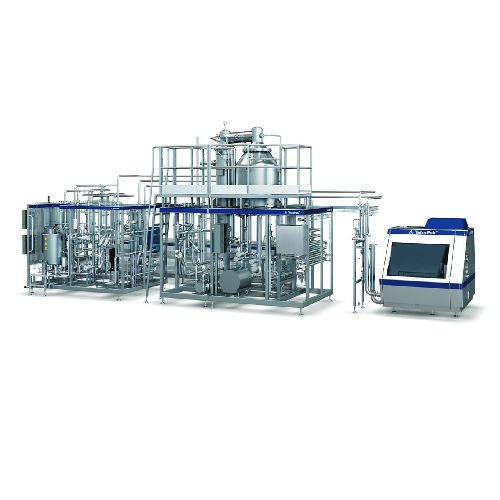
Ultra-high temperature processor for premium liquid foods
Achieve superior product quality and flexibility with advanced...
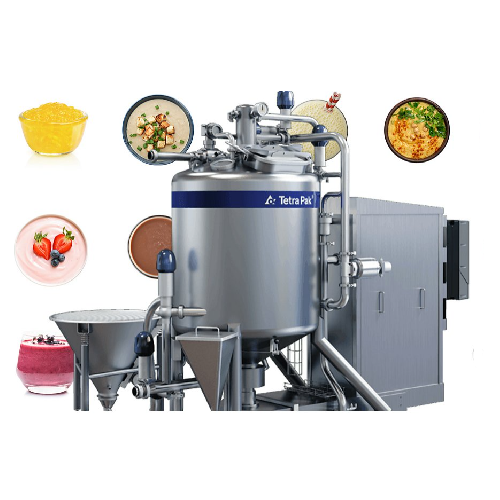
High shear mixer for dairy and beverage industry
Achieve consistent product quality with a high shear mixer, enabling seam...
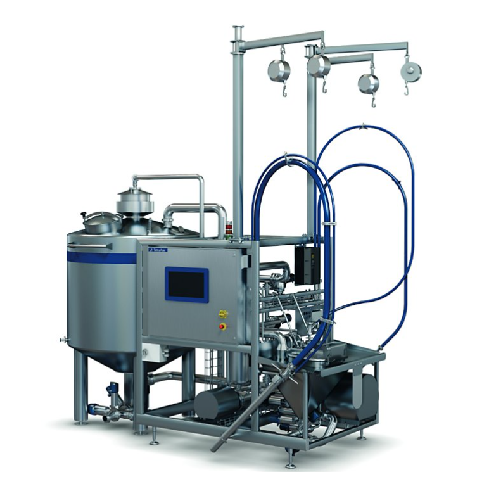
Batch mixer for soft drinks ingredients
Effectively manage diverse ingredient formats with a high-performance mixing system...
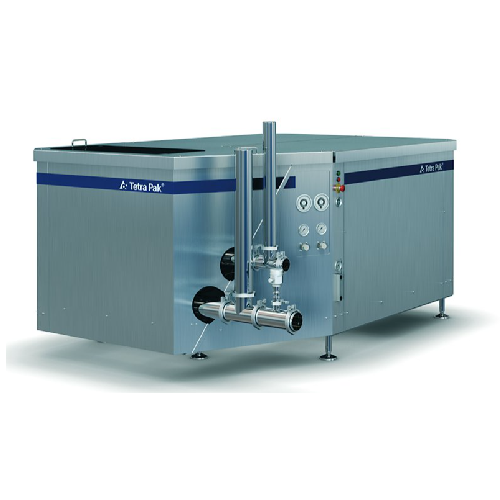
Industrial homogenizer for dairy and beverage applications
Enhance product quality and reduce operational costs with a h...
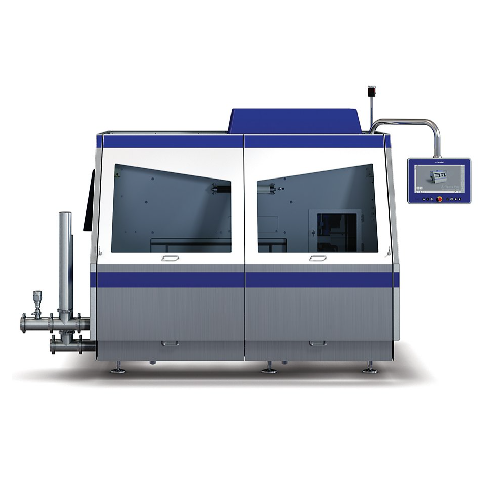
High-pressure homogenizer for dairy and beverage products
Achieve optimal product consistency and extend shelf life with...
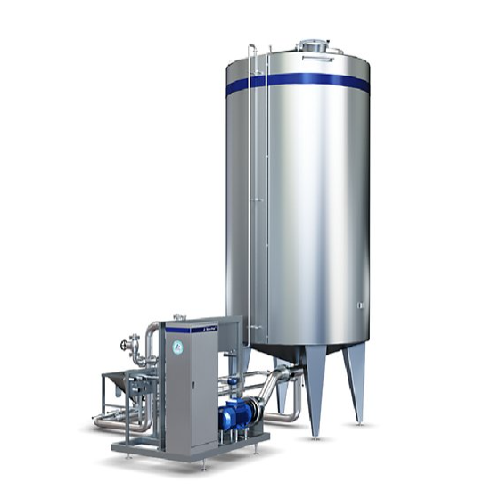
Batch dissolver for sugar or dextrose
Efficiently dissolve crystalline substances like sugar and dextrose with precision, e...
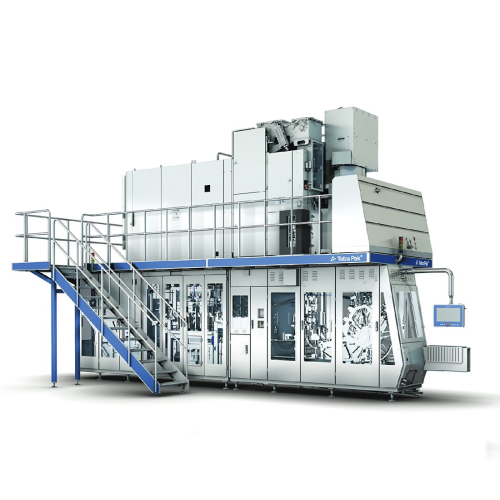
Versatile filling system for aseptic packaging
Achieve seamless integration in high-speed aseptic packaging with this flex...
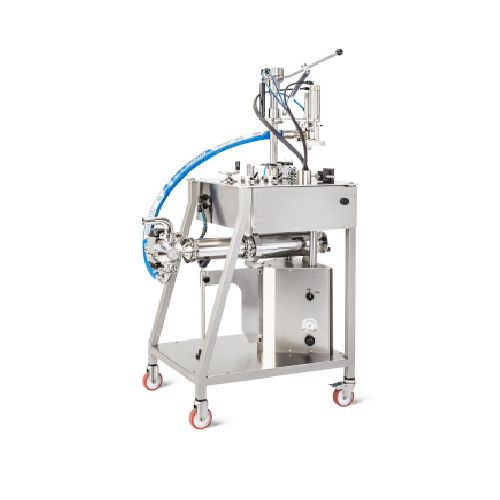
Manual monoblock for filling and capping jars
Optimize your jar filling and capping processes, even with high-temperature ...
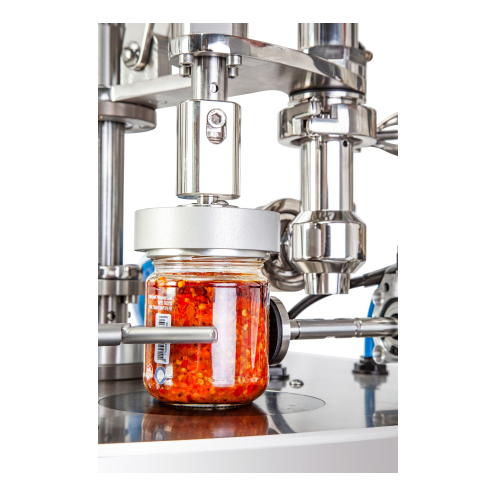
Manual system for filling and capping jars
Ideal for efficiently handling liquid and semi-dense products, this manual syst...
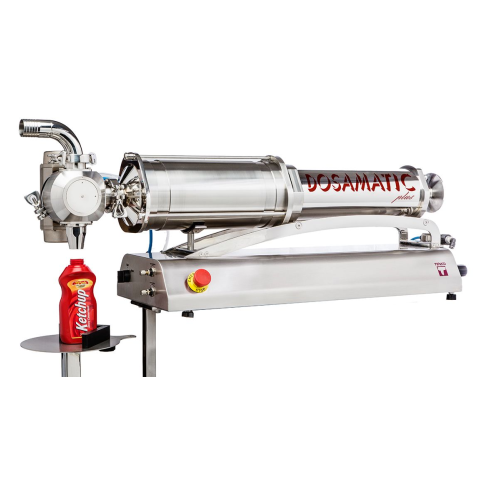
Accurate volumetric filler for liquid and semi-dense products
Achieve precise dosing and filling of various liquid and s...
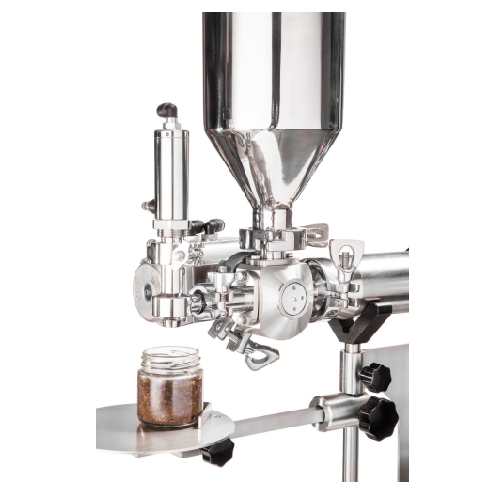
Bench-top piston filler for liquid and semi-dense products
Optimize your filling precision with a versatile piston fille...
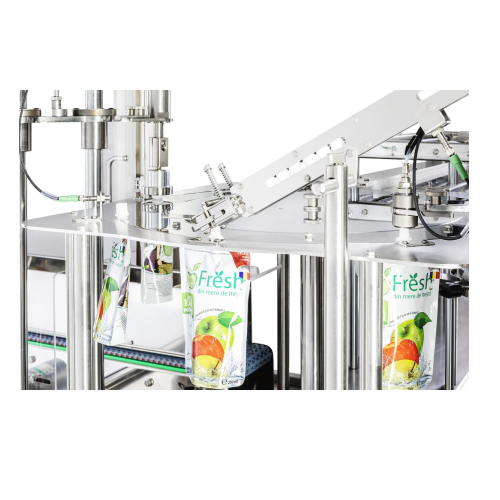
Automatic line for filling and capping spouted pouches
Streamline your production line with high-speed filling and cappin...
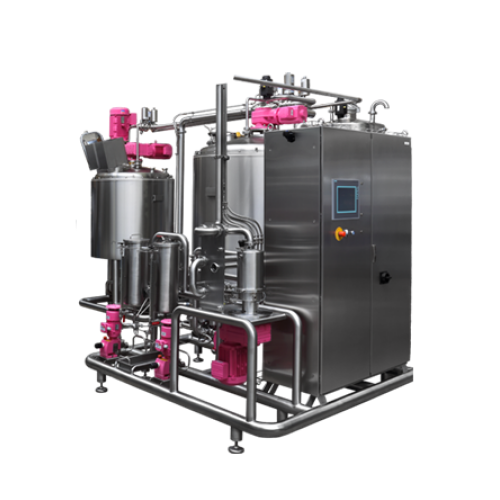
Inline blender for liquid ingredients
Optimize your production line with seamless liquid blending, enhancing flavor consist...
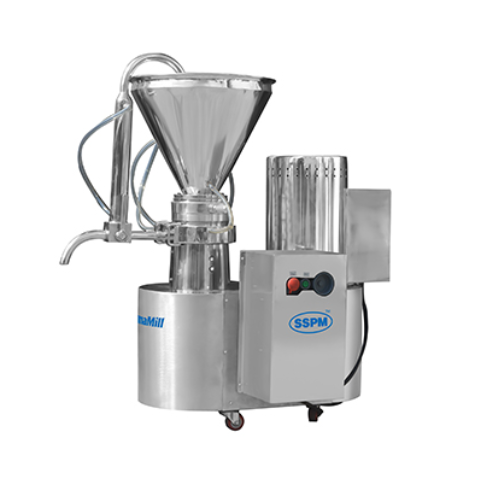
Colloid mill for particle size reduction and emulsification
Achieve precise particle size reduction and stable emulsions...
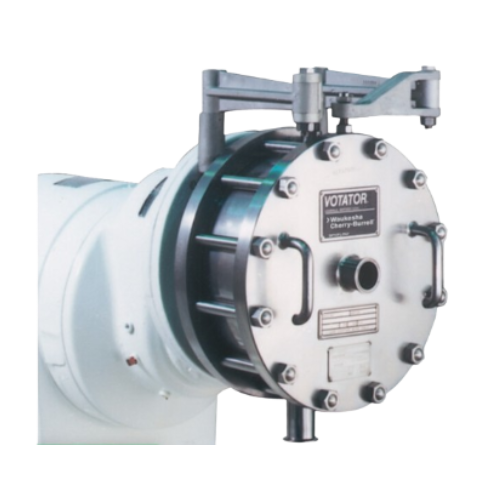
High-shear mixer for emulsions, dispersions, and foams
Achieve precise emulsions and dispersions effortlessly with high-s...
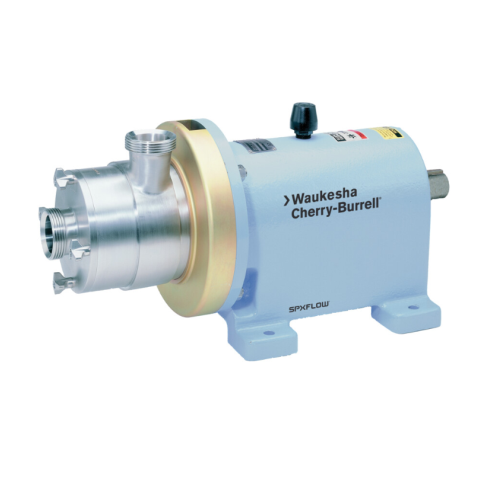
Shear pumps for continuous on-line dispersion
Effortlessly achieve consistent shearing and mixing with versatile shear pum...

Scraped surface heat exchangers for high viscosity products
Ideal for continuous processing, these heat exchangers effic...
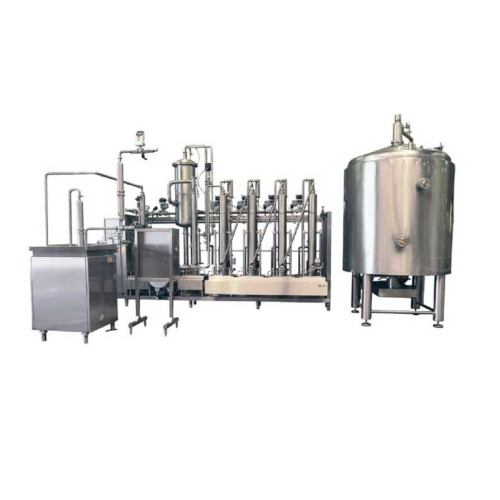
Scraped surface heat exchanger for high-viscosity products
Designed for handling high-viscosity products, this system en...
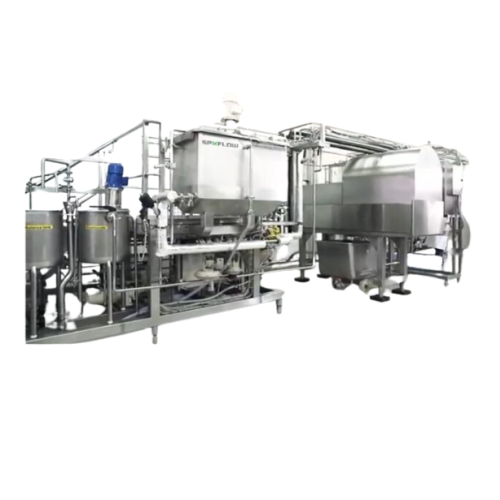
Soymilk processing plant
Enhance your plant-based production with our tailored soymilk processing plants, designed to efficie...
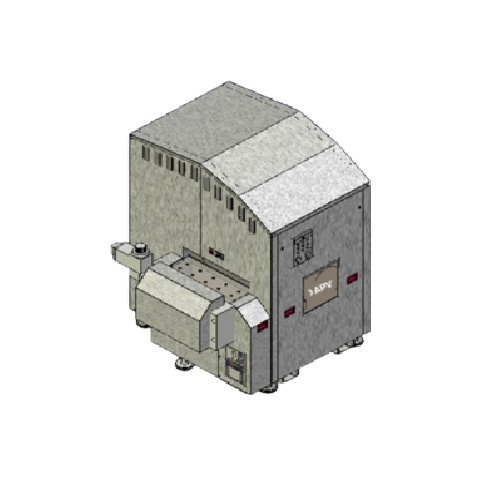
High pressure homogenizer for food and beverage processing
Optimize your production line with a versatile high-pressure ...
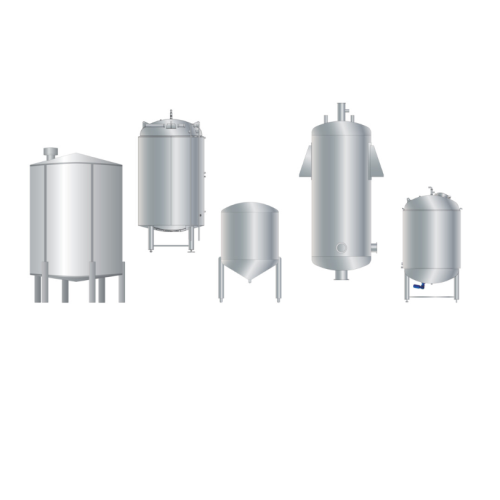
Hygienic tanks for various processing needs
Achieve optimal processing and storage with customizable hygienic tanks, desig...
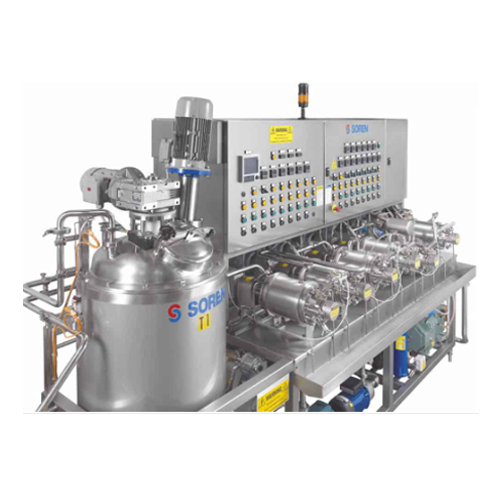
Pilot plants for small-scale viscous product processing
Optimize your product development with pilot plants designed for ...
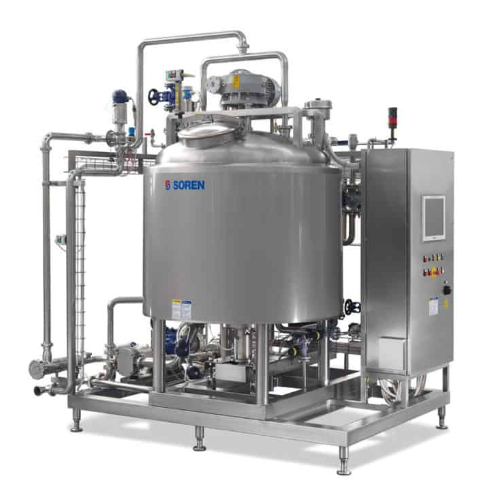
Process tanks for mixing, cooking, and cooling applications
Efficiently tackle viscous product challenges with advanced ...
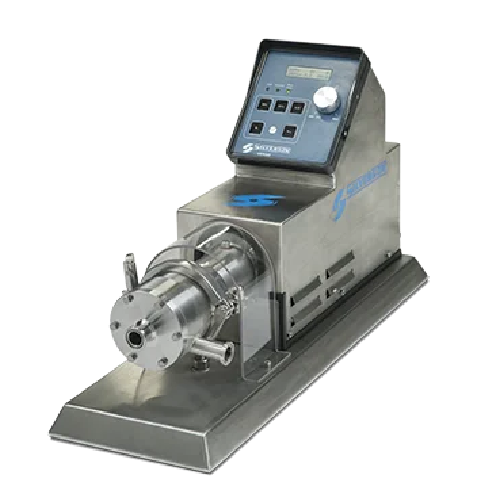
Laboratory in-line mixer for precise mixing and reproducibility
Achieve precise laboratory-scale mixing with rapid proce...
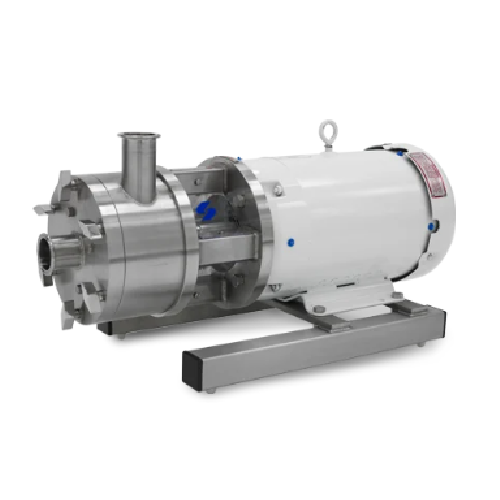
In-line ultra sanitary mixer for pharmaceutical and food applications
Enhance your liquid formulations with precision m...
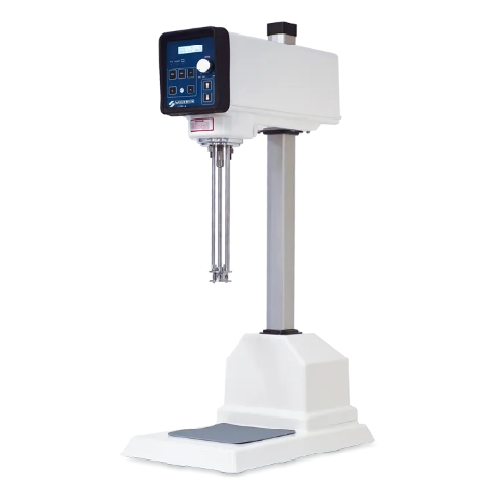
High shear lab mixer for laboratory work and r&d
Achieve unparalleled precision and consistency in laboratory and pilot-sc...
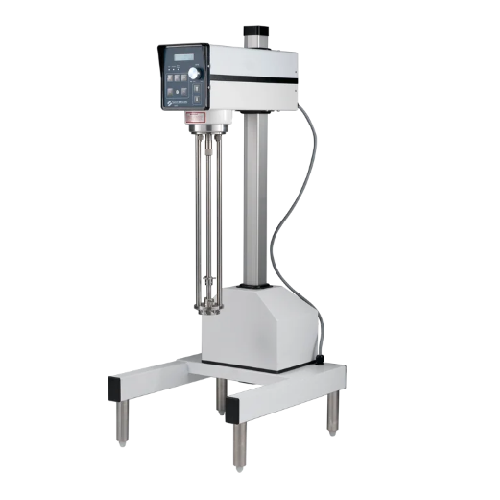
Pilot scale batch mixer for small scale production
Achieve precise control and consistency in small-scale production with...
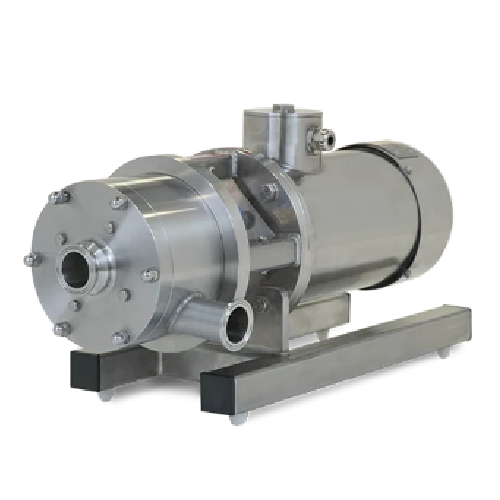
Sanitary high shear mixers for pharmaceutical production
Achieve unparalleled hygiene and efficiency in your mixing proce...
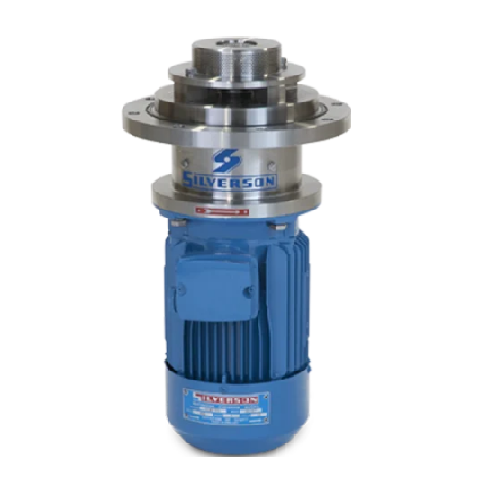
Bottom entry mixers for high viscosity products
Optimize your production line with mixers designed to handle both high and...
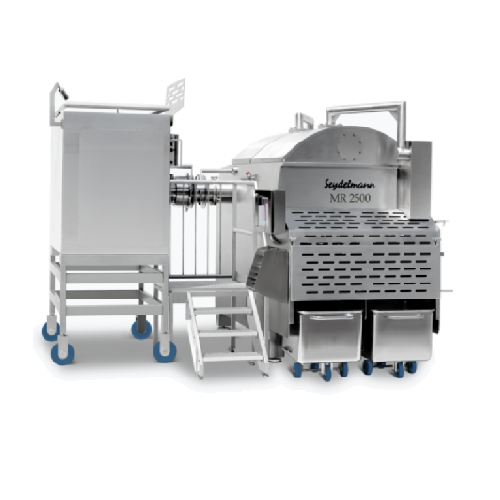
Automated production line for ground meat products
Enhance your meat processing efficiency by seamlessly integrating grin...
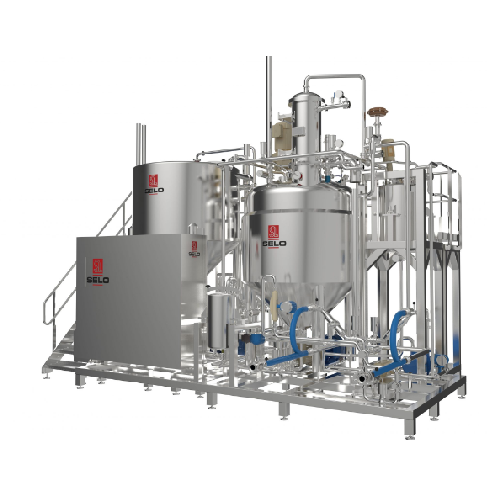
Mayonnaise production line
Streamline your high-capacity mayonnaise production with precise mixing, emulsifying, and pasteur...
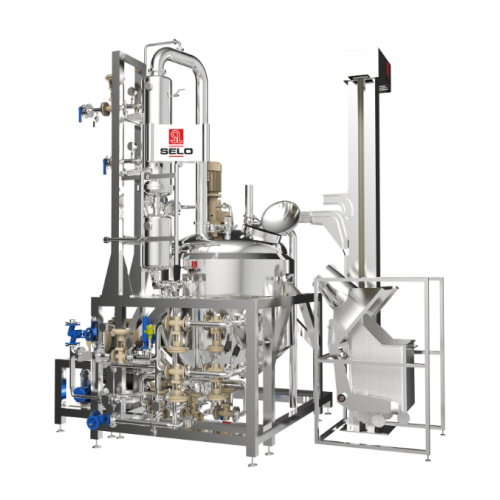
Automated mayonnaise and dressing production line
Ensure the consistent quality of your mayonnaise, dressings, and sauces...
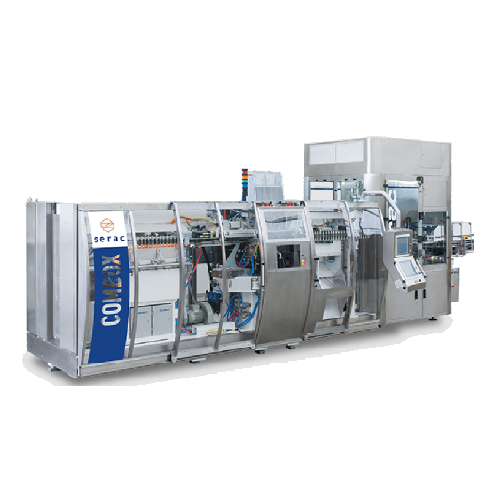
Blow-fill-cap solution for low/medium batch production
Streamline your production line with a compact blow-fill-cap syste...
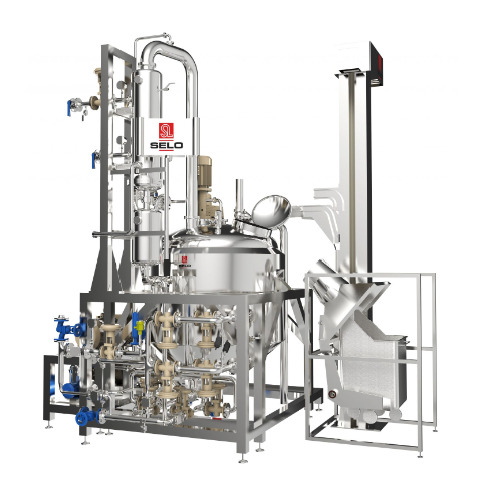
Ketchup manufacturing line
Streamline your sauce production with precision-engineered efficiency, allowing for seamless reci...
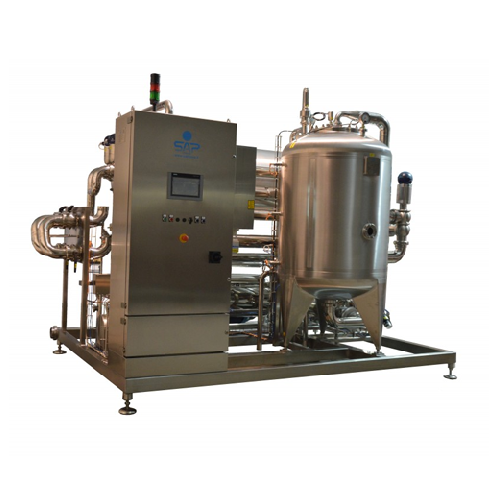
Industrial solutions for beverage mixing and carbonation
Optimize your beverage production with precise mixing and carbon...
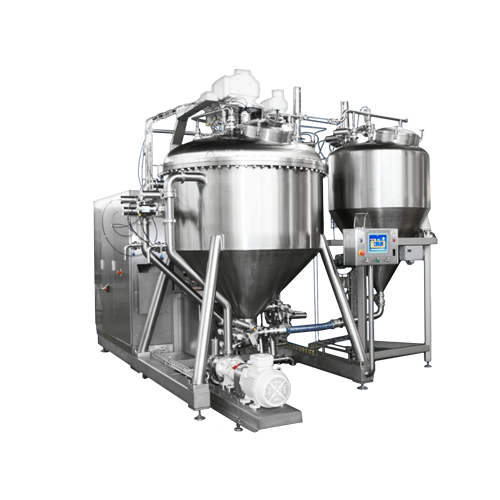
Vacuum process system for food product mixing and emulsifying
Optimize your production of sauces, dressings, and condime...
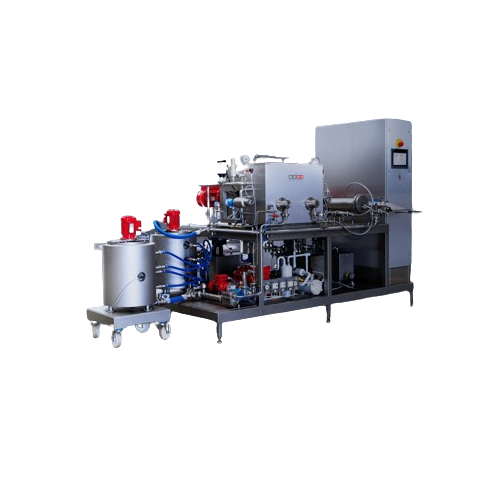
High pressure plunger pump for continuous food processing
Achieve consistent texture and quality in spreads and sauces w...
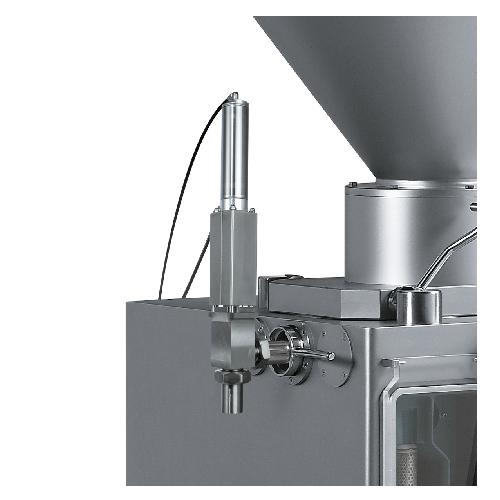
Vertical dosing valve for accurate food portioning
Ensure precision in portioning liquid and semi-liquid food products wi...
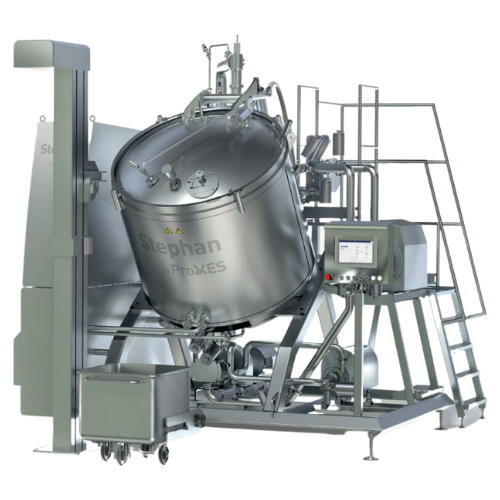
All-in-one system for making emulsions
To make smooth batches of mayonnaise or ketchup you need to use process equipment fo...
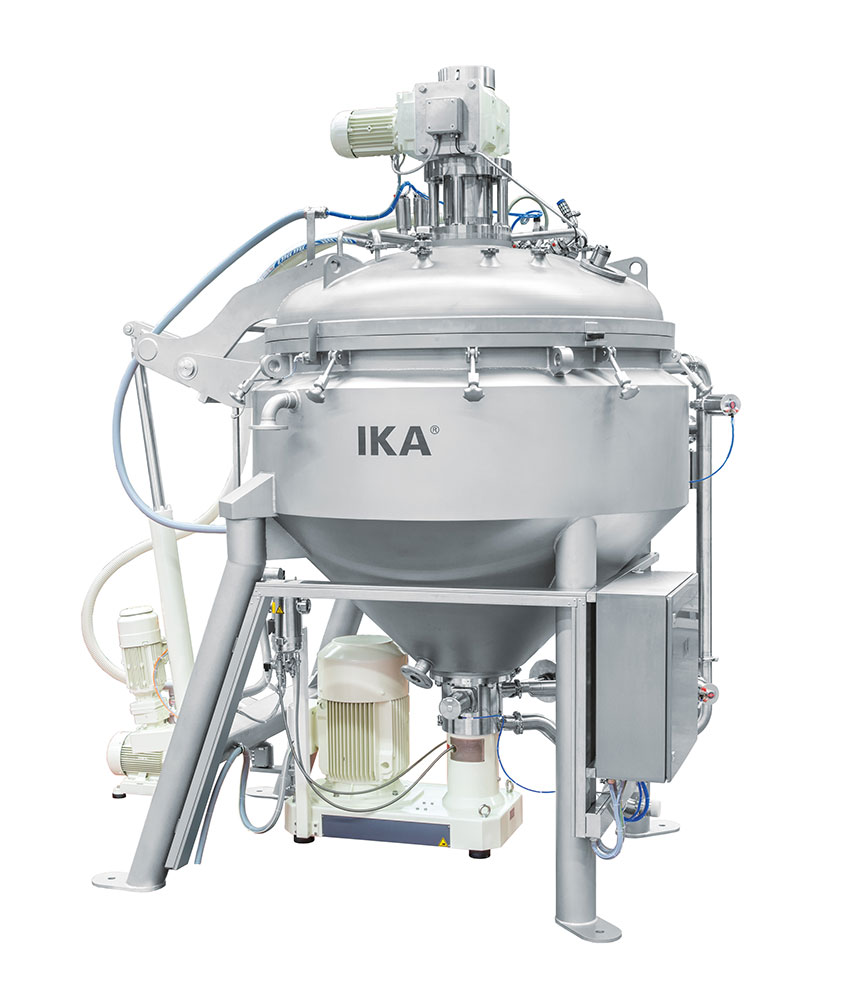
Homogenization and emulsifying system for fine foods
Texture and consistency are critical to foods with delicate composit...
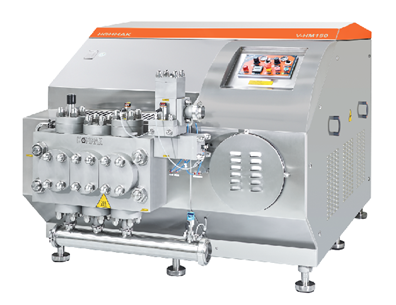
Pilot plant homogeniser
From food to pharma, homogenization is an essential step in the production process that provides unif...
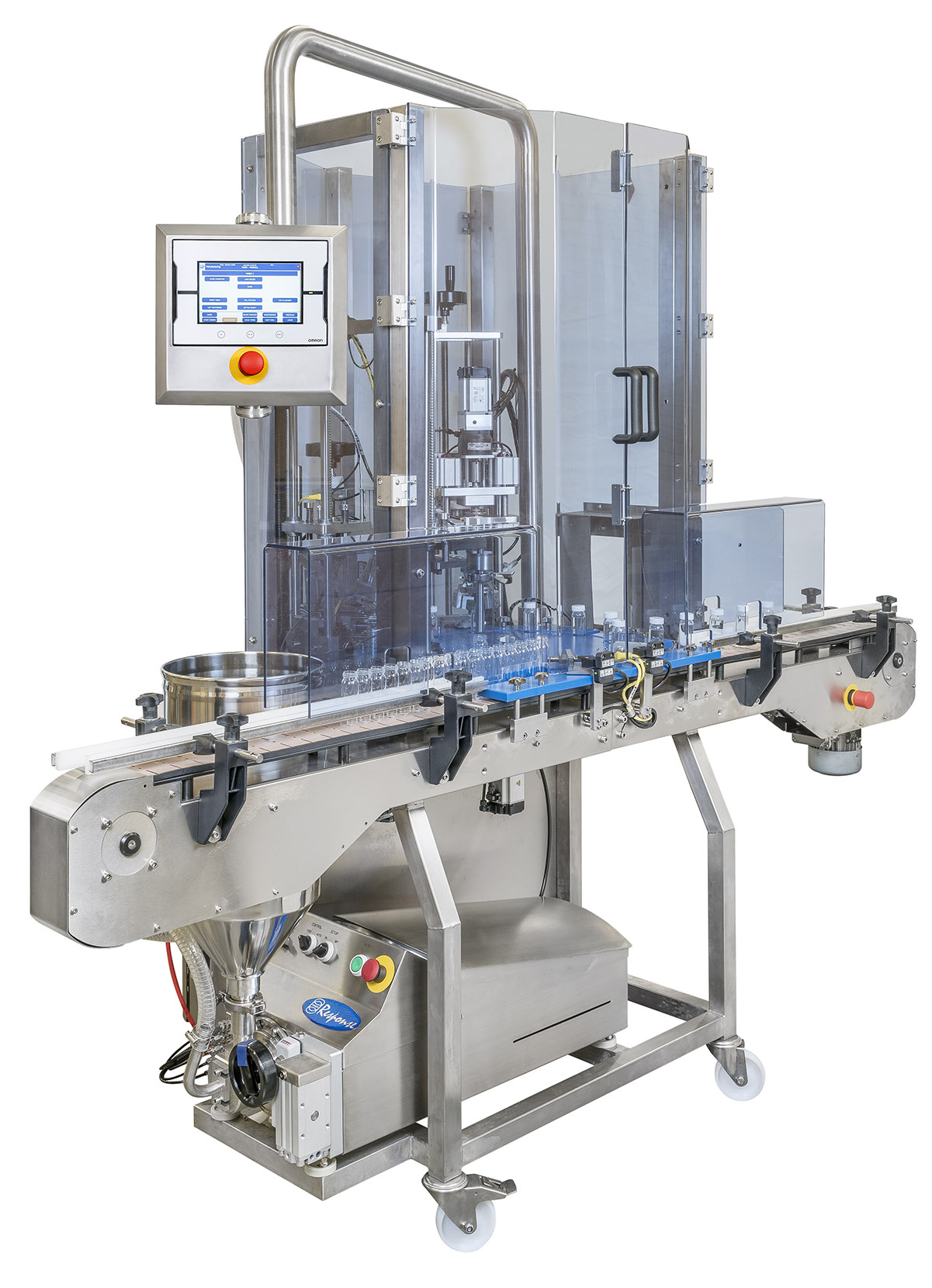
Monobloc filler and capper
If you have separate filling and capping stations you may experience lower throughput rates due t...
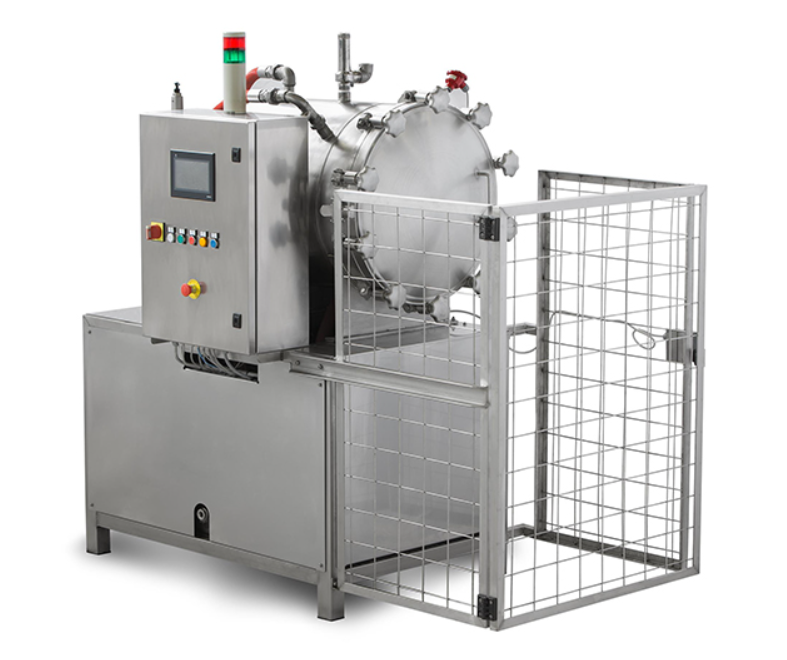
Autoclave sterilizer for food cans and jars
An autoclave is a must-have machine for canned food production lines. It perfo...
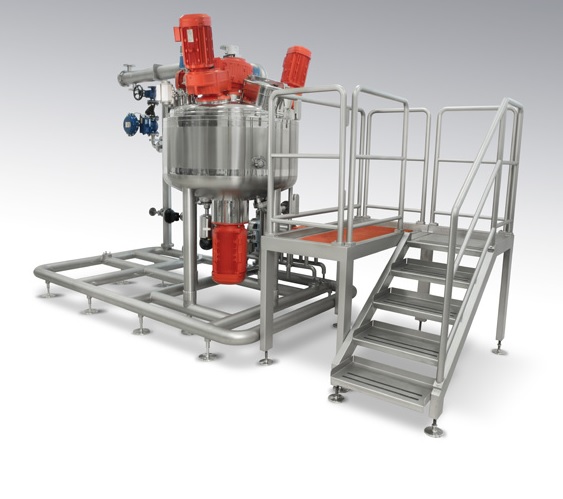
Temperature-treatment mixer for bakery & gastronomy
The production of creams, sauces, ragouts, ready-to-bake, and sim...
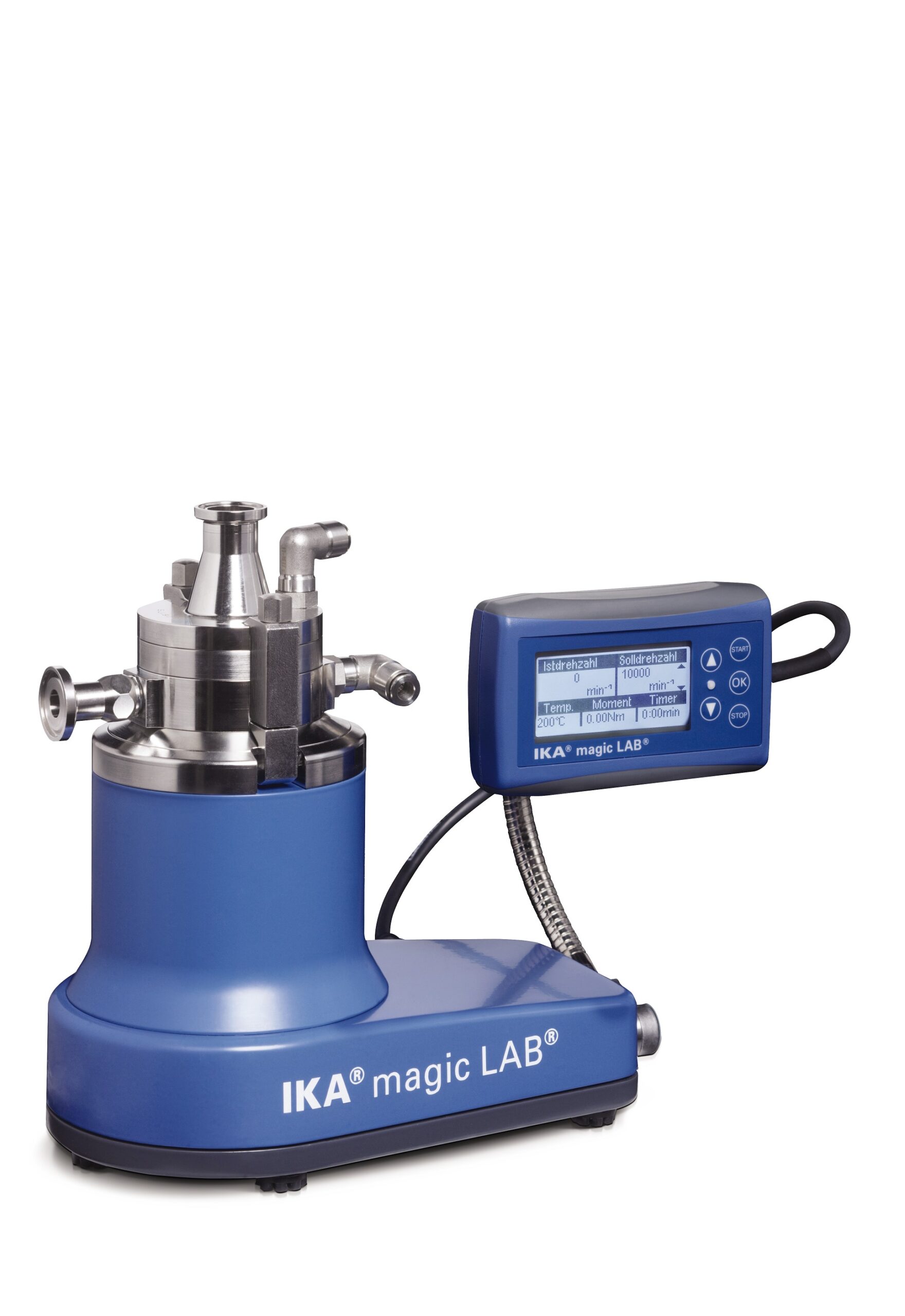
Small-scale laboratory dispersing machine
Developing and validating new processes requires reliable and highly versatile e...
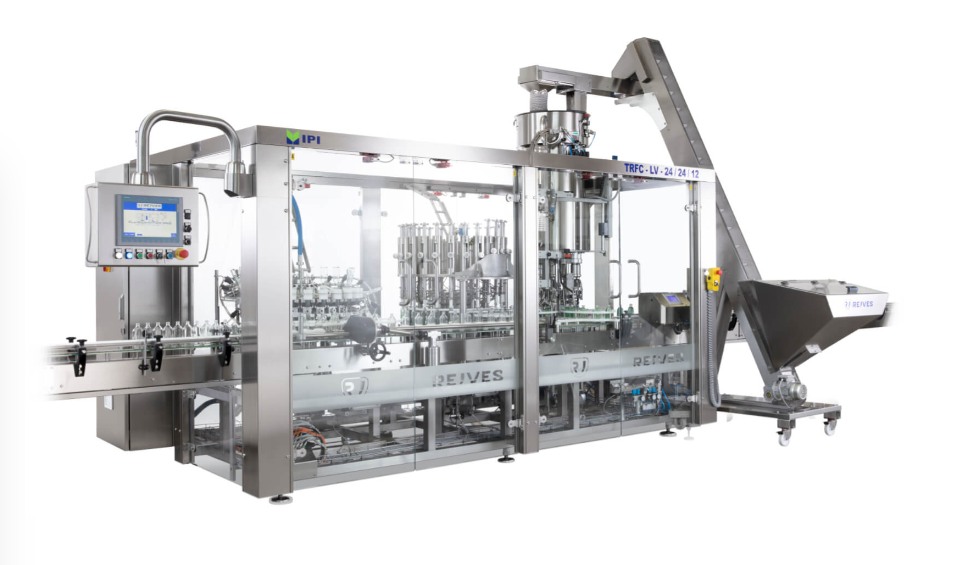
Bottle filling and capping monobloc
Spillage and overfilling are common problems in most production lines for bottled produ...
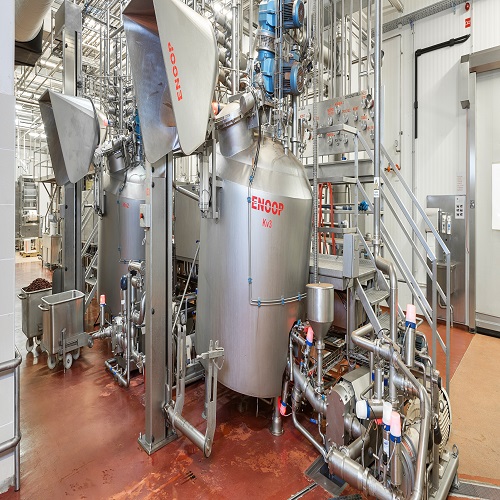
Industrial vacuum cooker
Batch cookers can be highly inflexible and inefficient, relying on maximum fill levels to operate we...
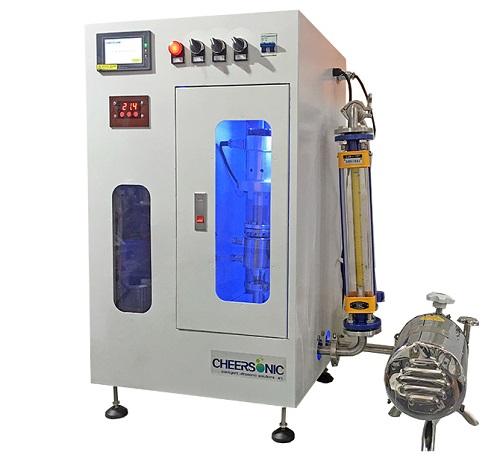
Pilot ultrasonic extractor
In the herbal medicine industry, an ultrasonic extractor is a valid alternative to conventional e...
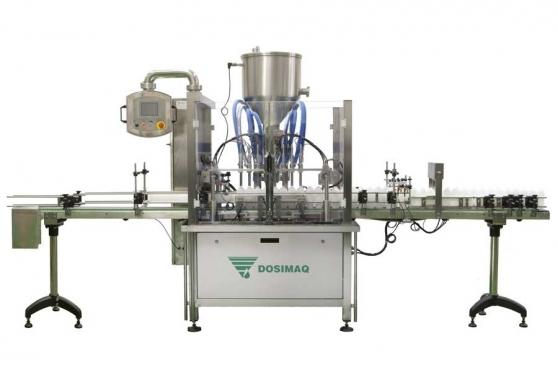
Automatic filling machine for sauce
Traditional sauce filling units can struggle to maintain a high quality of output in ca...
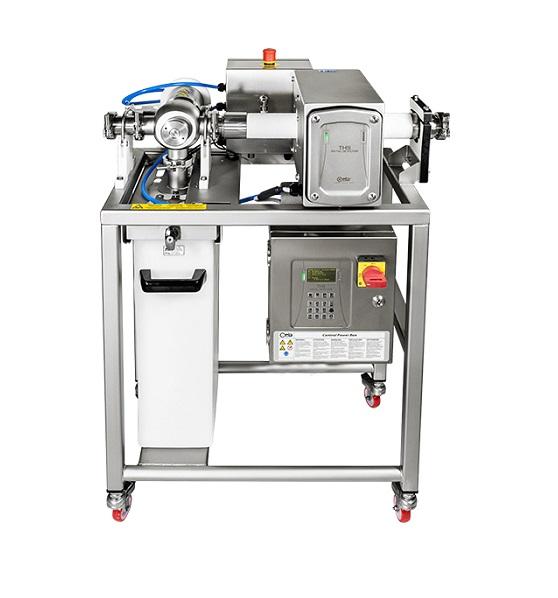
Pipeline metal detector for sauces
Ensuring liquid and viscous products such as sauces, soups, juices and meat are contamin...
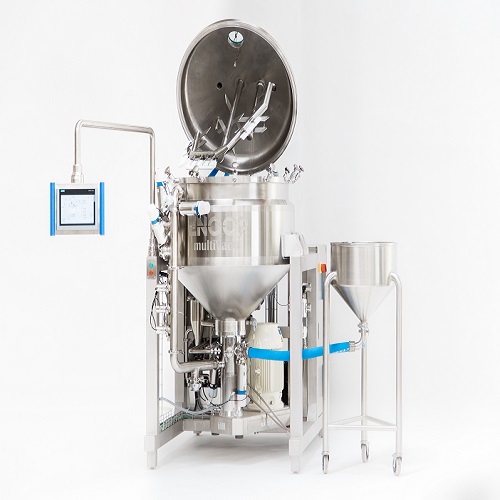
Vacuum based homogenizer
When producing liquid and viscous products such as mayonnaise, sauces, dressings and ketchup it’s vi...
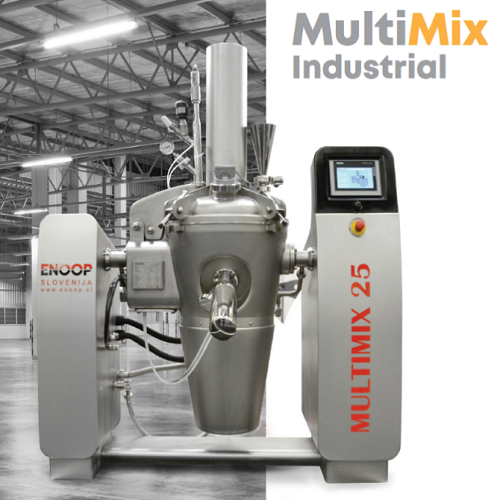
Universal Mixer and Cooker for Sauces
Sauce cookers and mixing machines have traditionally been designed to suit one proces...
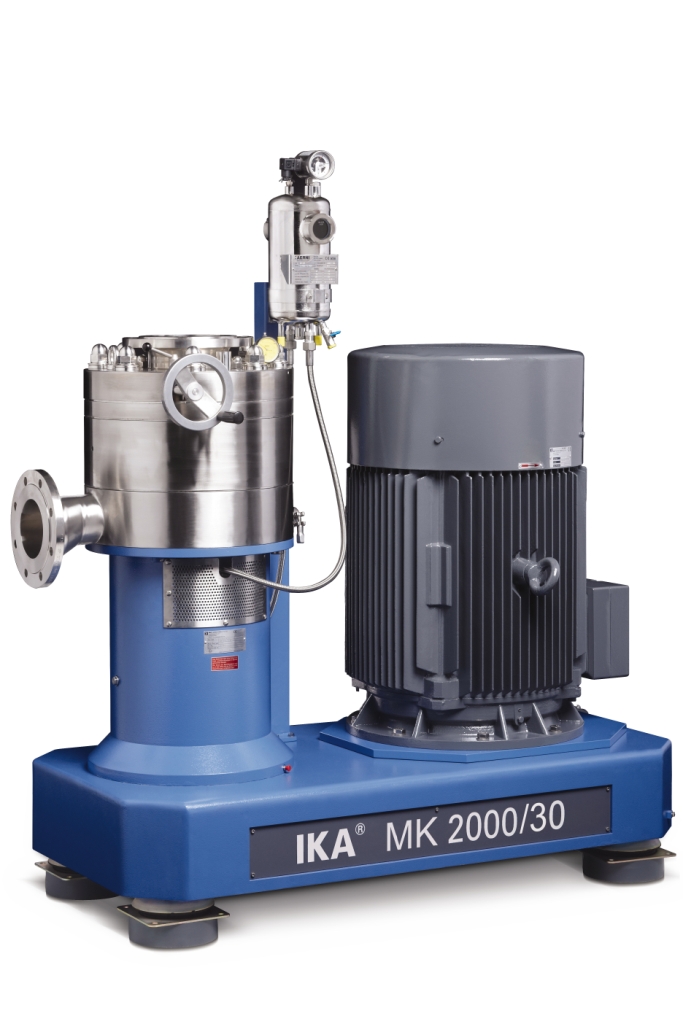
Colloid mill
For creating extremely fine emulsions and high quality dispersions a high pressure homogenizer is often chosen. ...
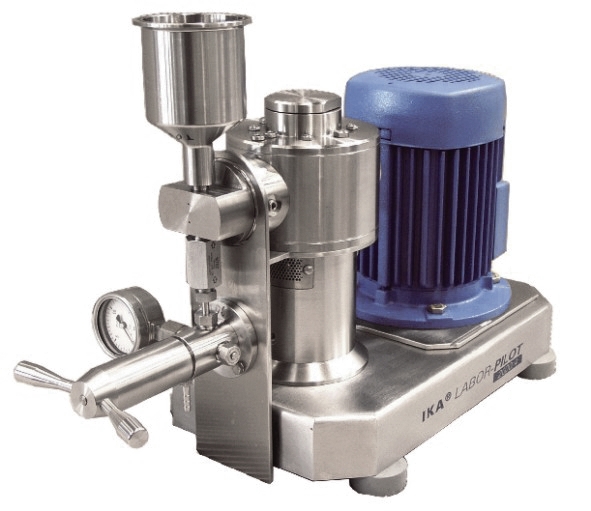
High-pressure homogenizer
When processes call for homogenized emulsions with extremely fine particle sizes the traditional t...
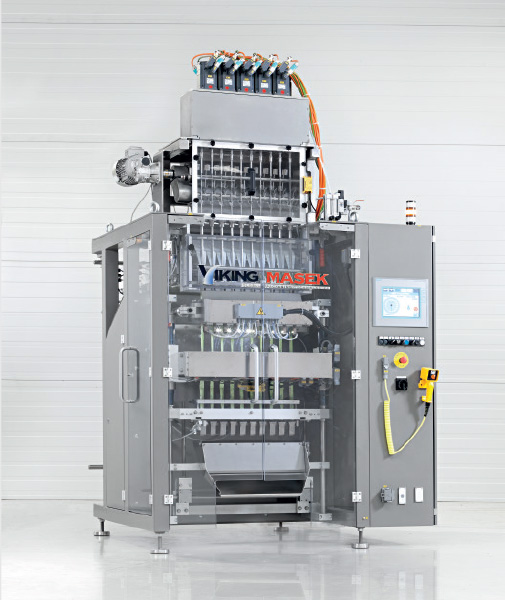
Stickpack Machine
If you are looking to pack your product into stick packs from 17 x 40 mm to 100 x 200 mm in size, you may b...
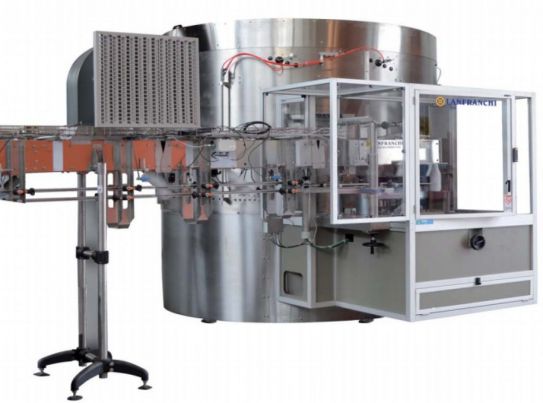
High-speed unscrambler for small bottles
Large-scale production of smaller volume bottled product needs a gentle, accurate ...
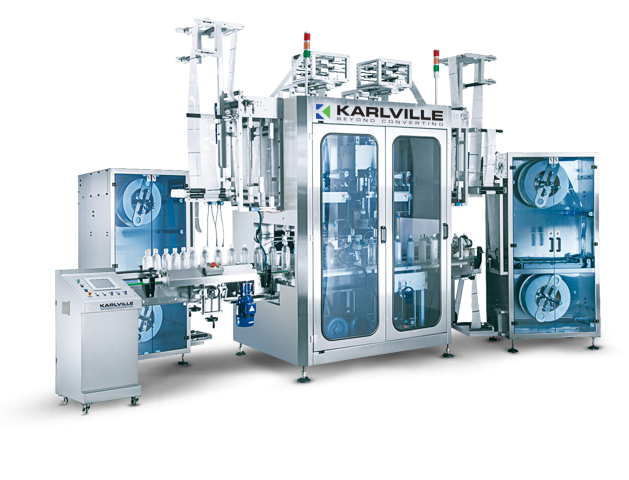
Shrink sleeve applicator - 800 per minute
High speed, in-line shrink sleeving systems require dual head capability with hi...
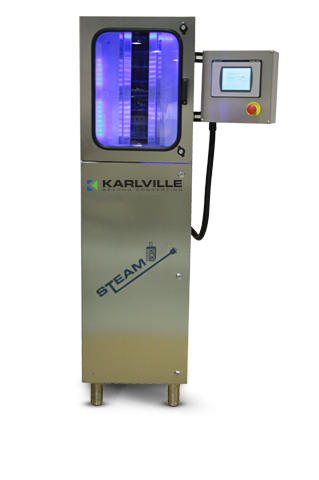
Advanced auto-steam shrink system
Design and development of shrink sleeves could be made much easier if small batches of sa...
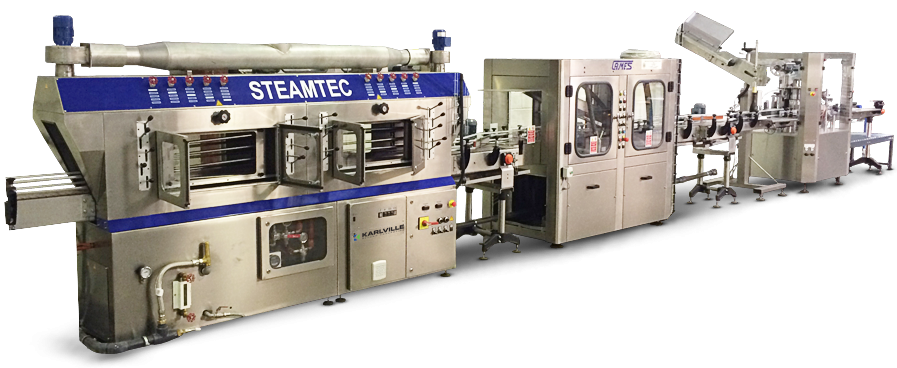
Premium steam tunnel for sleeve application
Maximum flexibility in terms of pressure, temperature and ramp setting and adj...
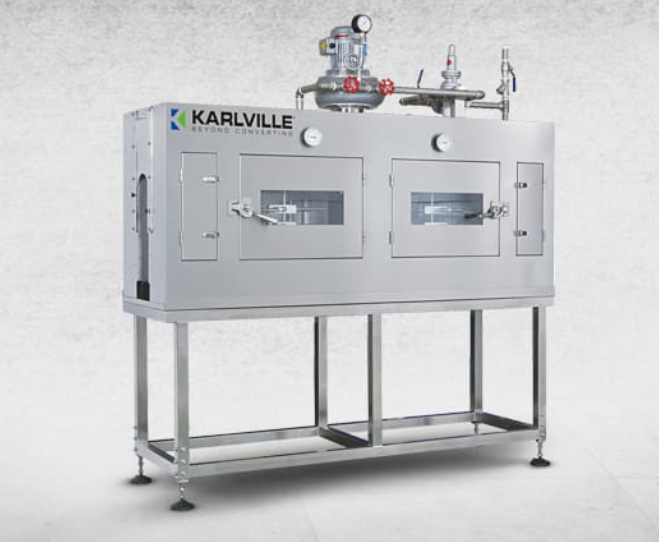
Shrink tunnel for applying sleeves to different containers
Maximum flexibility is required when setting pressure and dir...
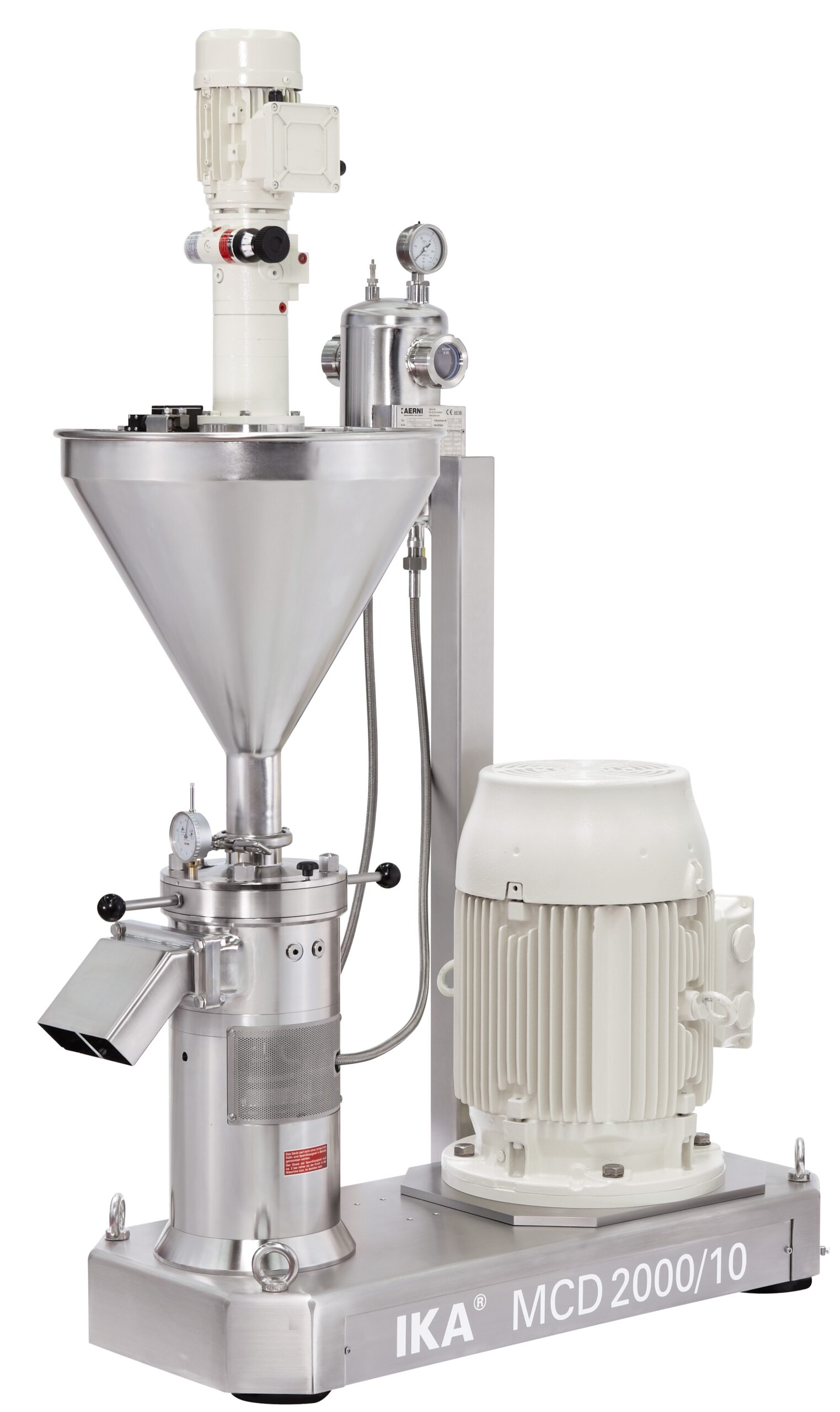
Corundum disk mill
Wet milling and grinding of viscous liquids or pastes containing solid particles such as peanut butter,mus...
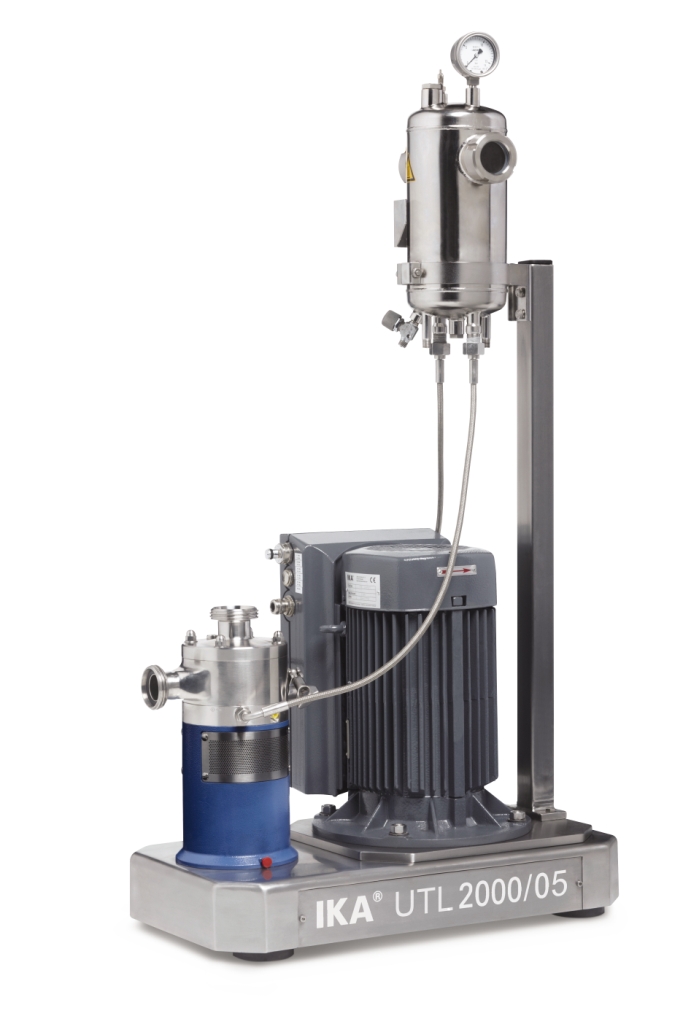
Dispersing machine for emulsions and suspensions
Equipment operating under the rotor/stator principal is often employed wh...
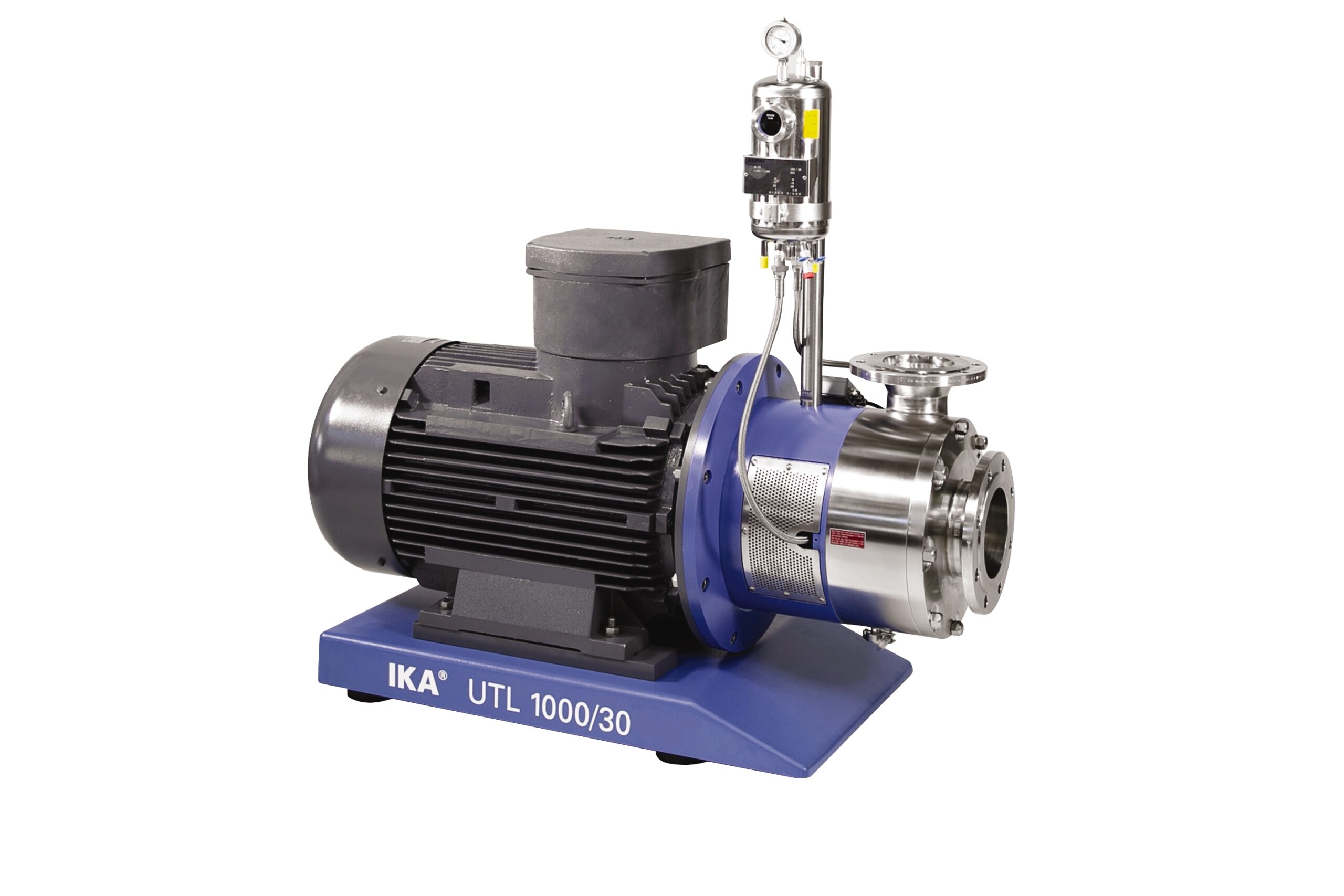
Economic dispersing machine for emulsions and suspensions
For products of medium viscosity and relatively consistent par...
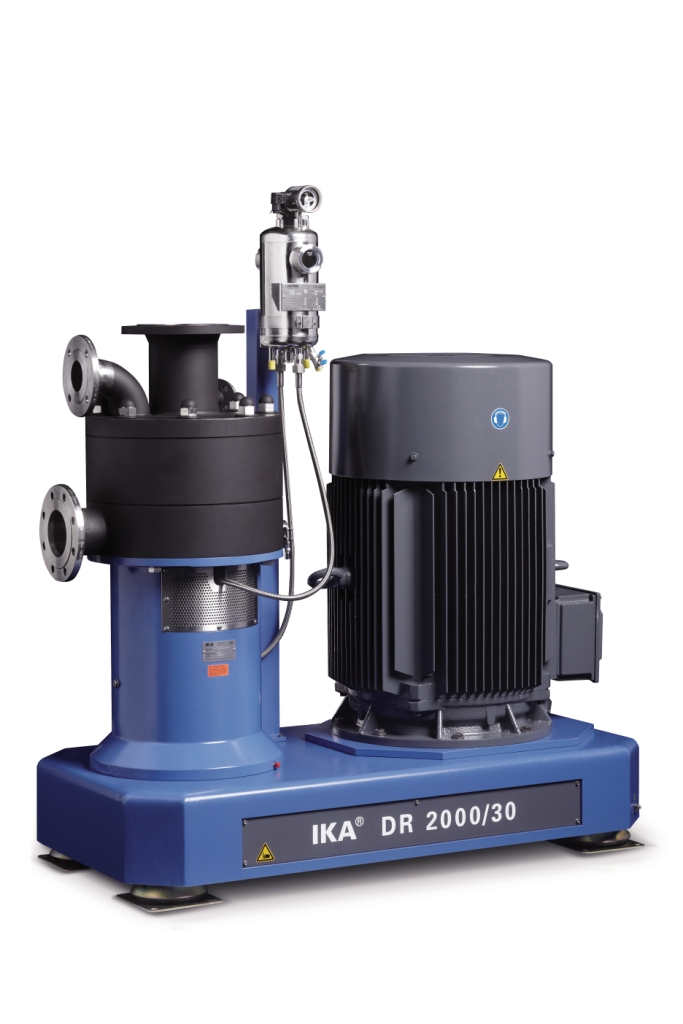
Dispersing machine for very fine emulsions and suspensions
For continuous high performance mixing of solid and liquid ra...
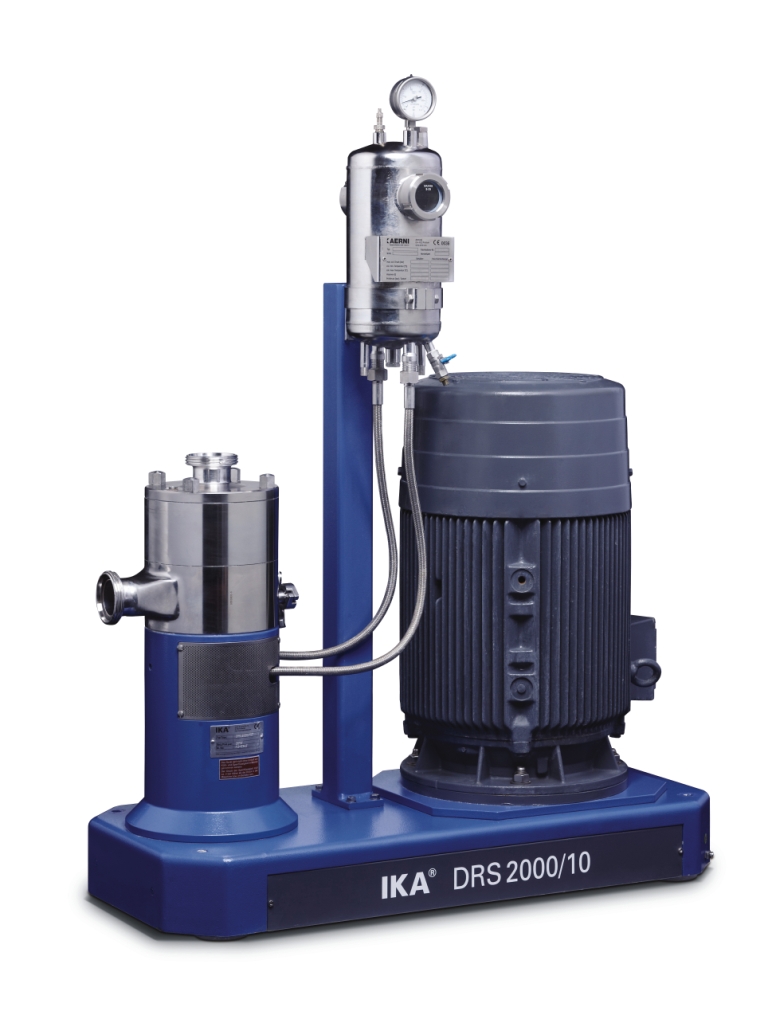
Ultra-fine dispersing machine for emulsions and suspensions
Producing the finest micro-emulsions and suspensions require...
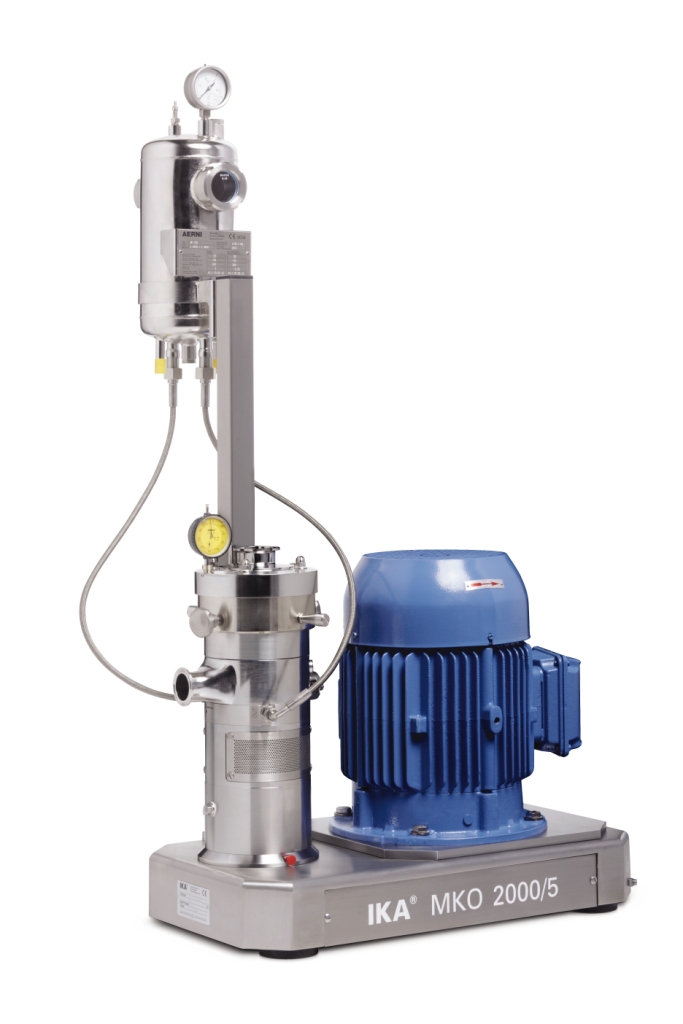
Cone mill machine
When your raw materials include agglomorated suspensions of grainy or crystalline solids and your process n...
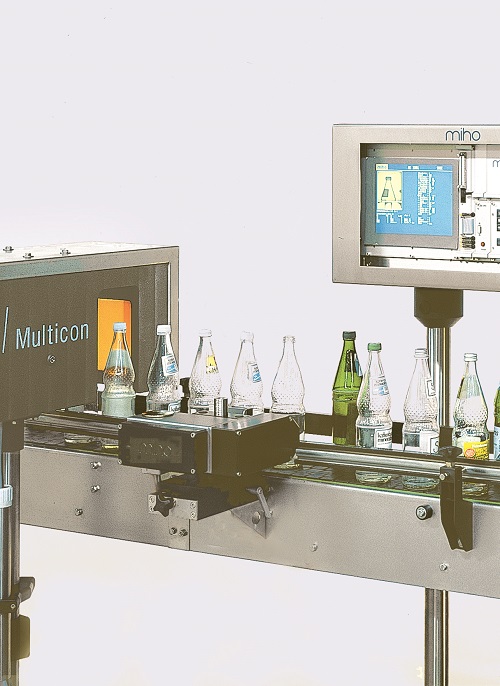
Empty bottle shape, colour and size sorting system
Accurate bottle sorting system that differentiates between the bottles...
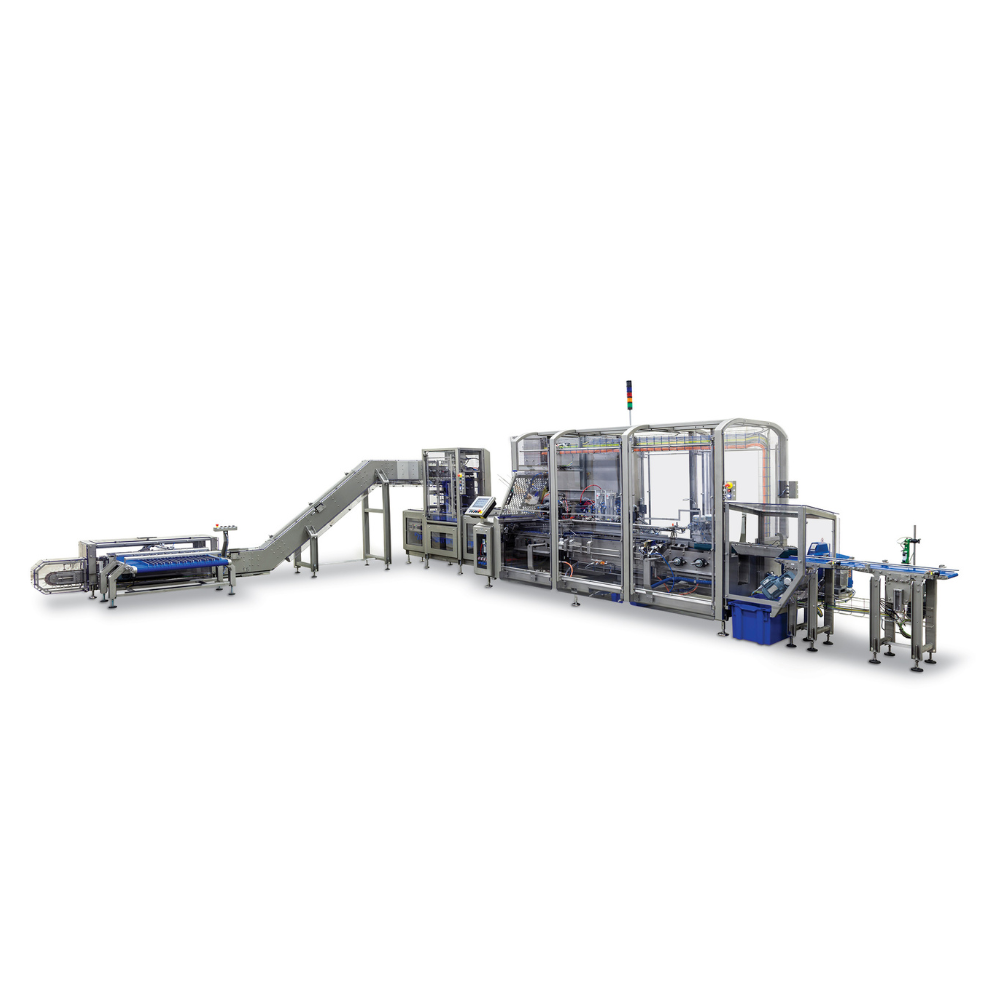
Smart Industrial Sauce Cartoning System
Large volume producers of sauces and ready meals continuously pack different produc...
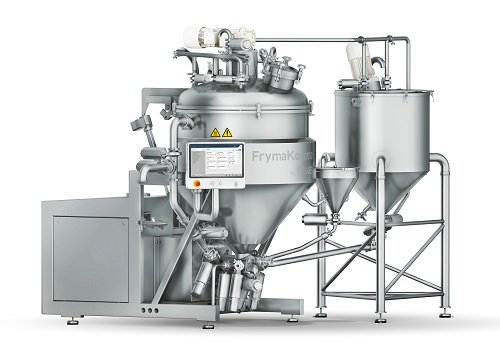
Batch processing system for emulsions and suspensions
Emulsions enhance foods with a creamy mouthfeel and richer flavors....

